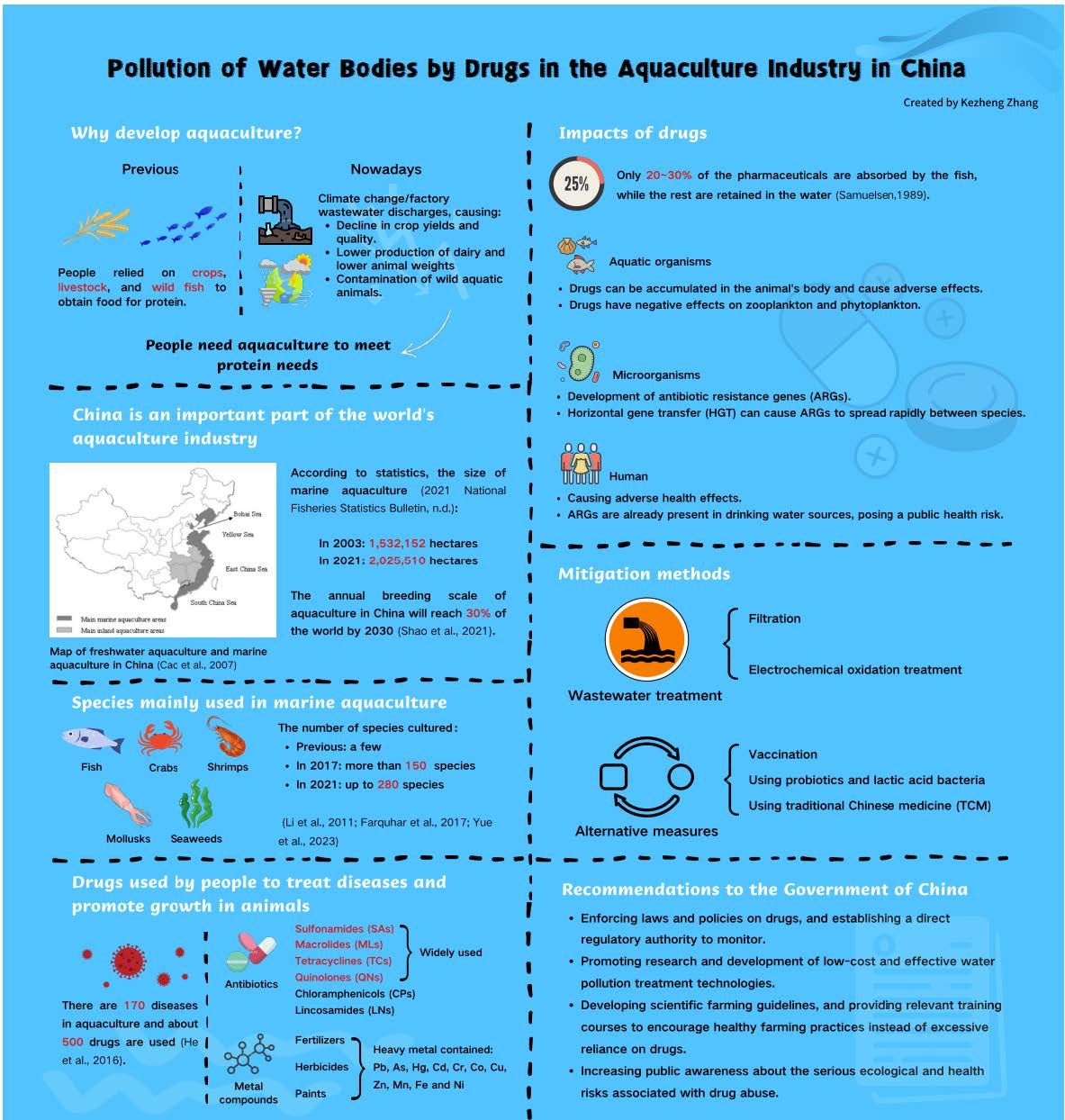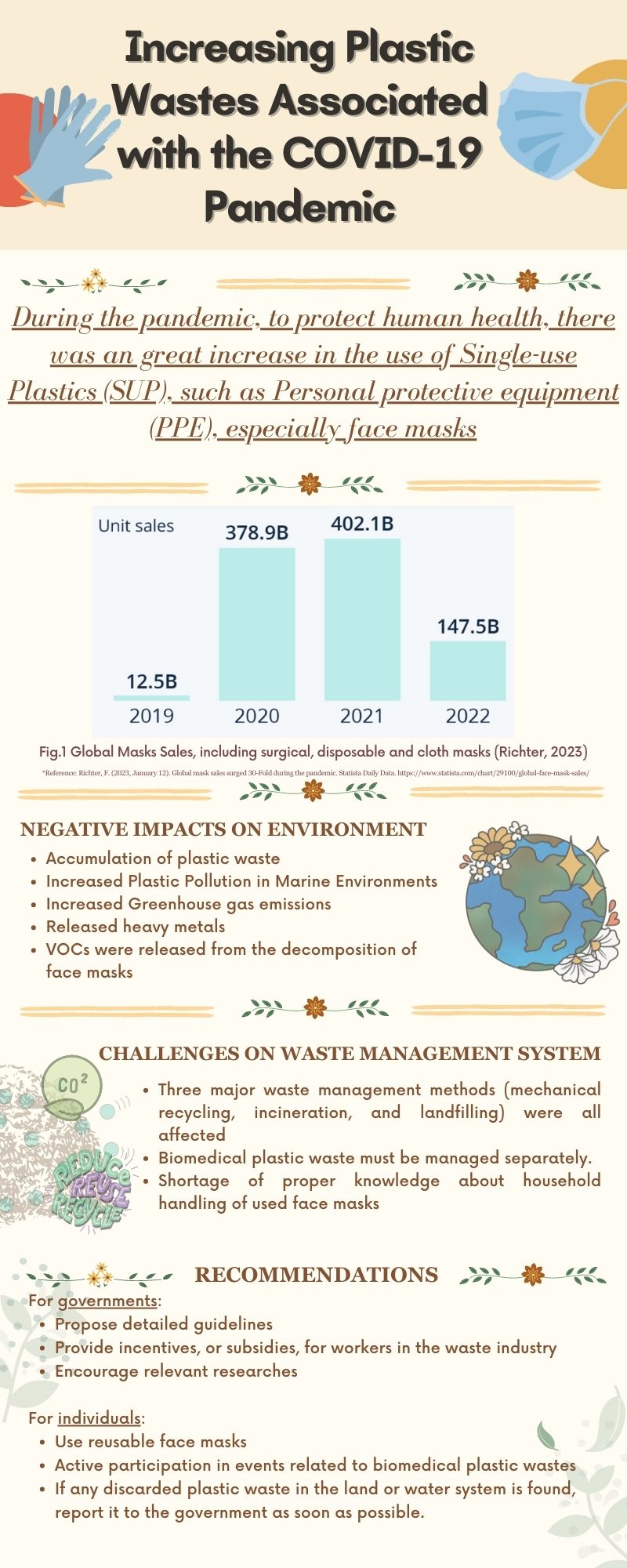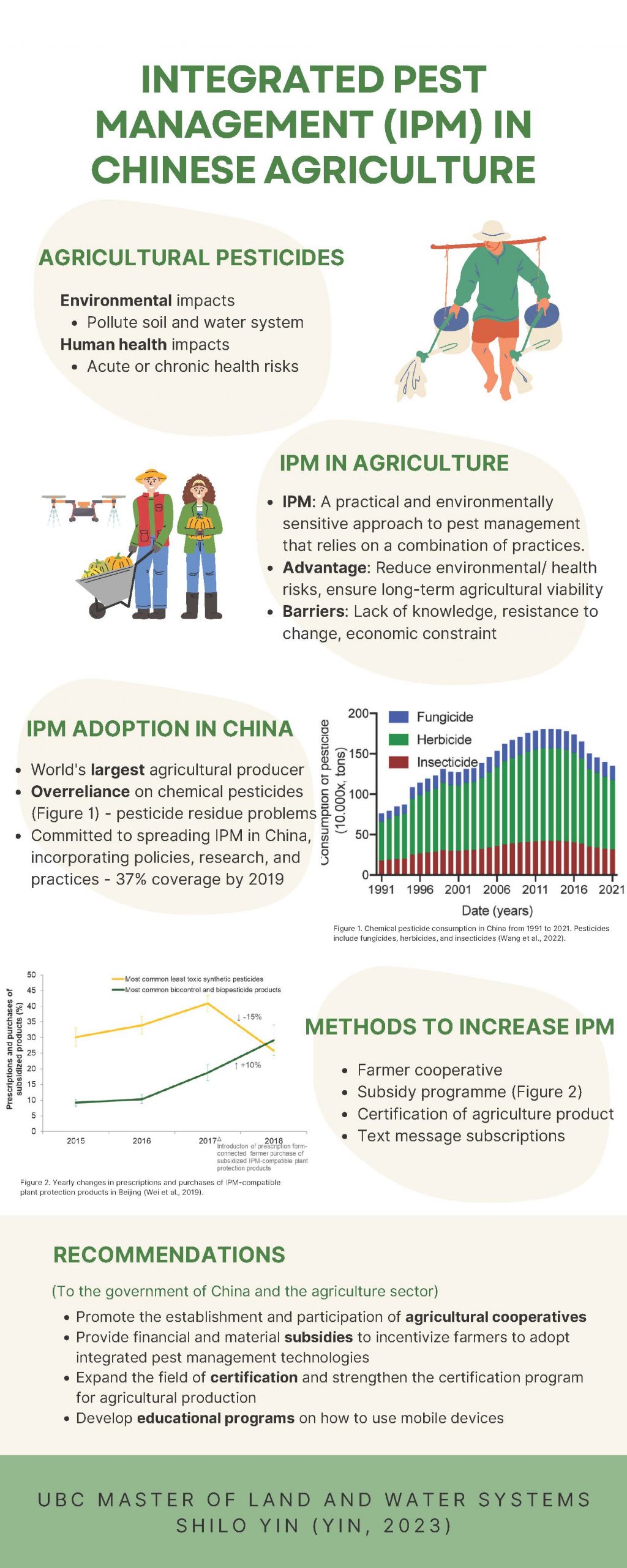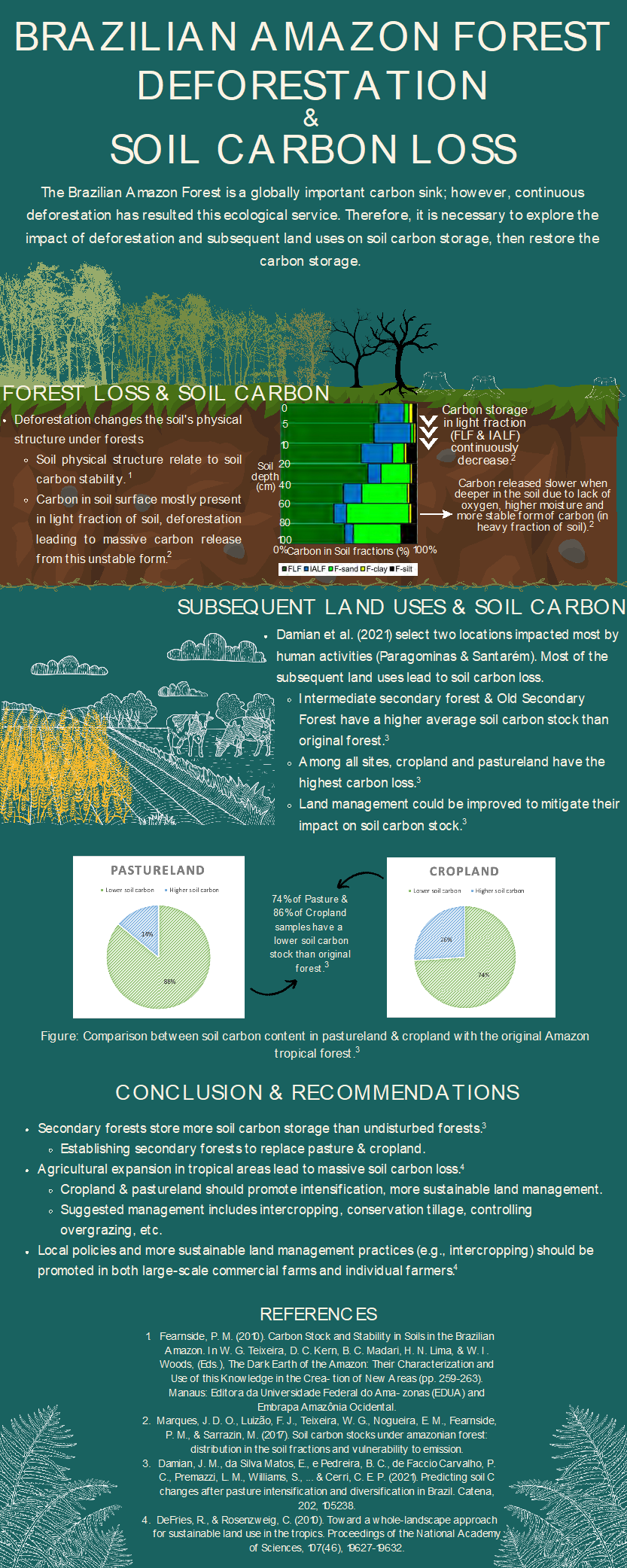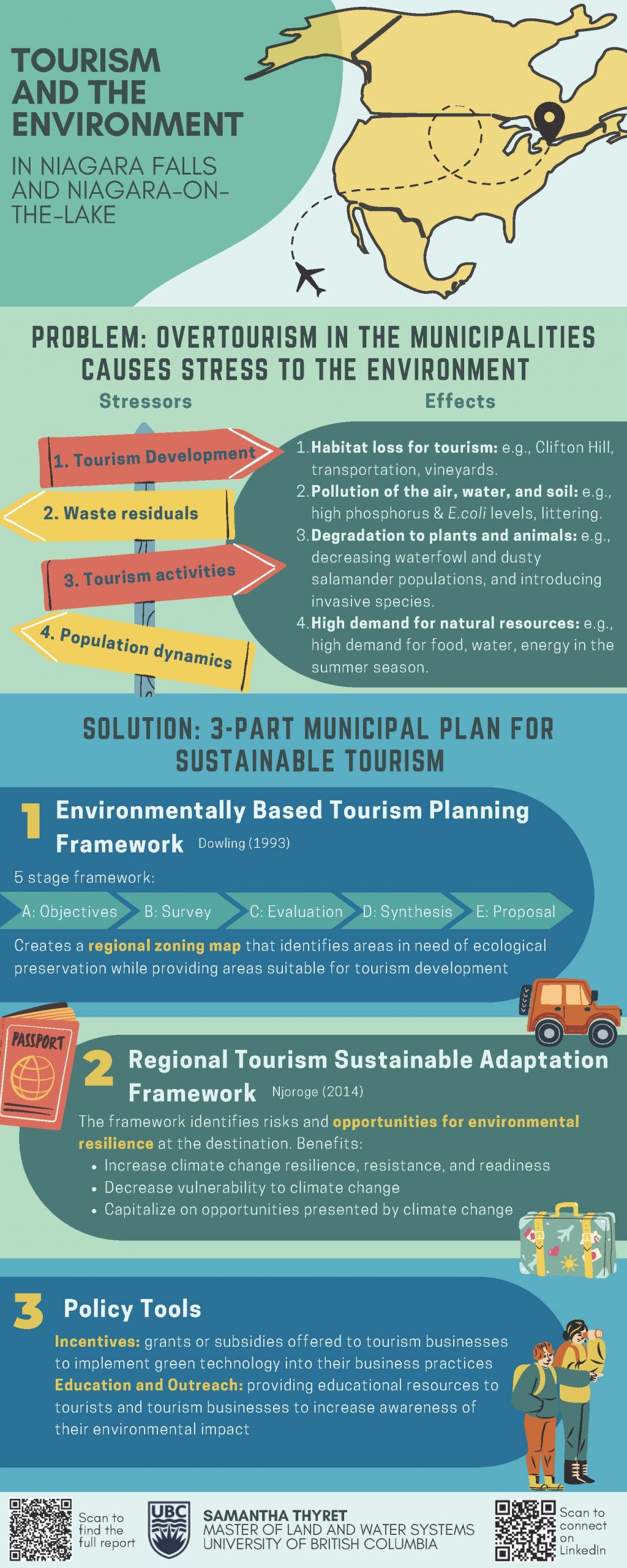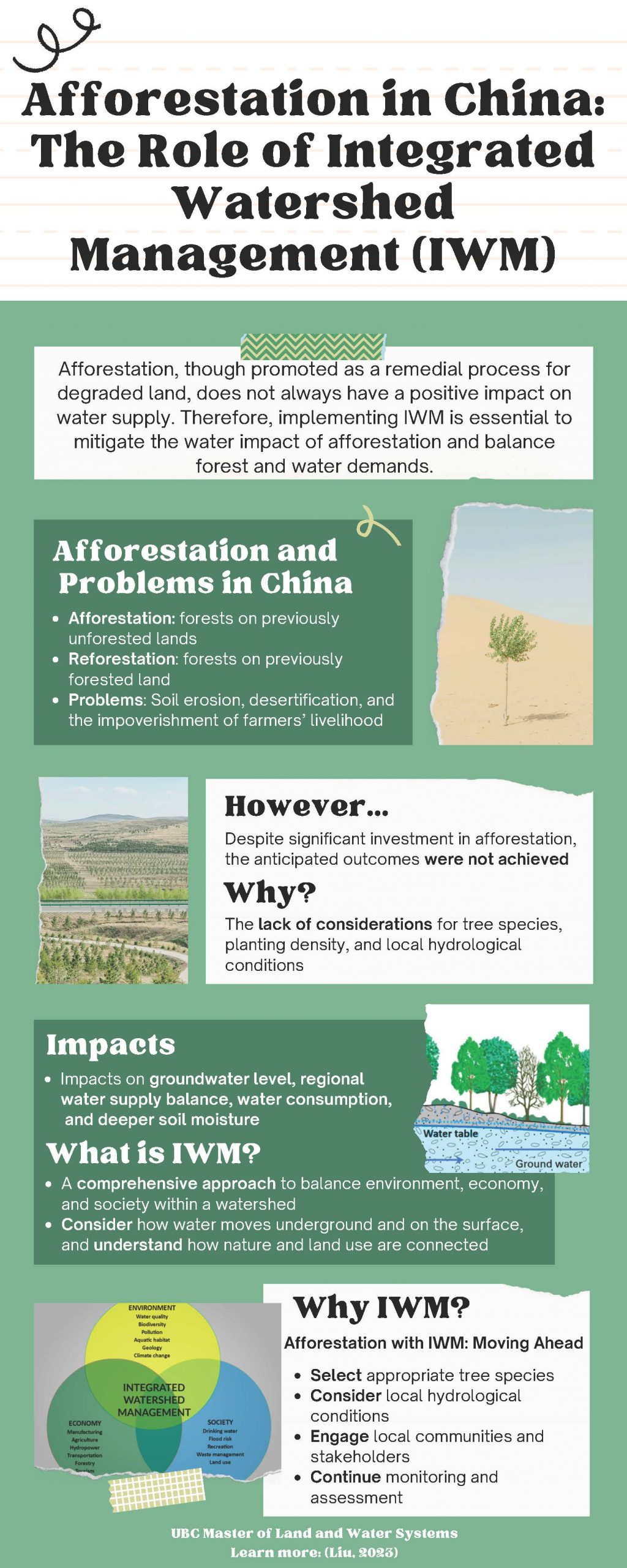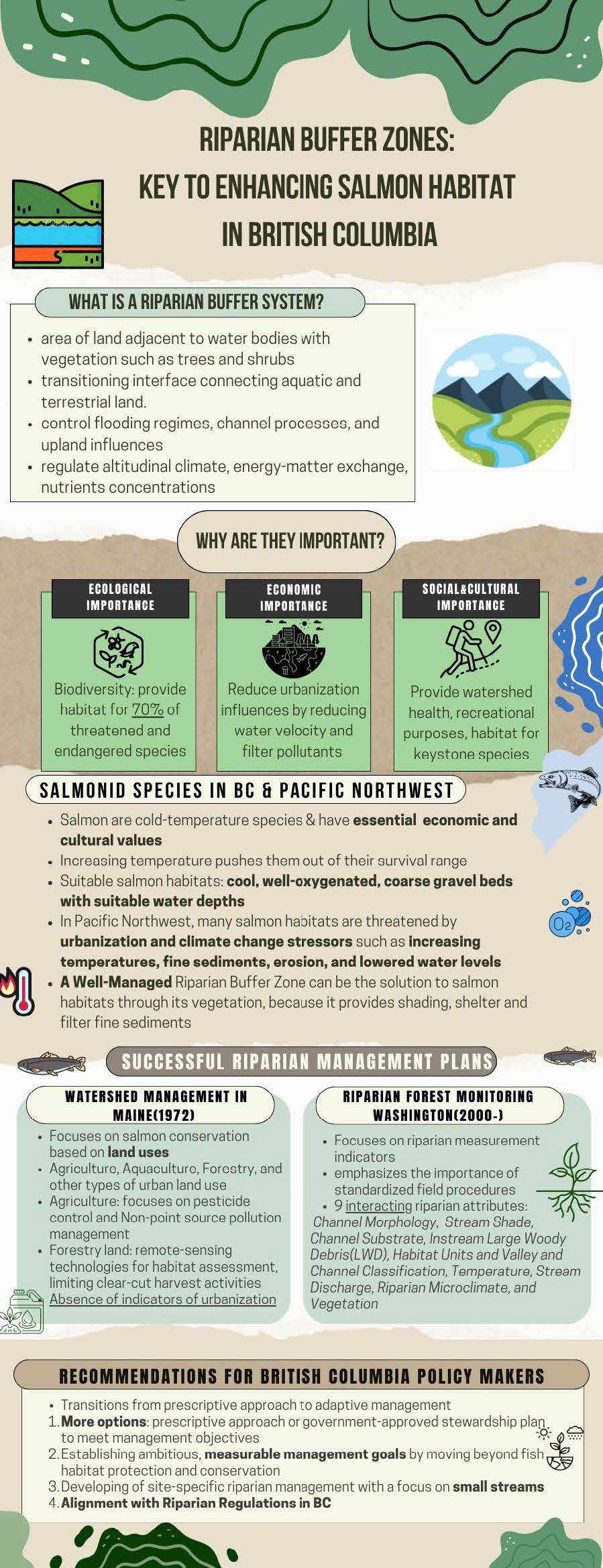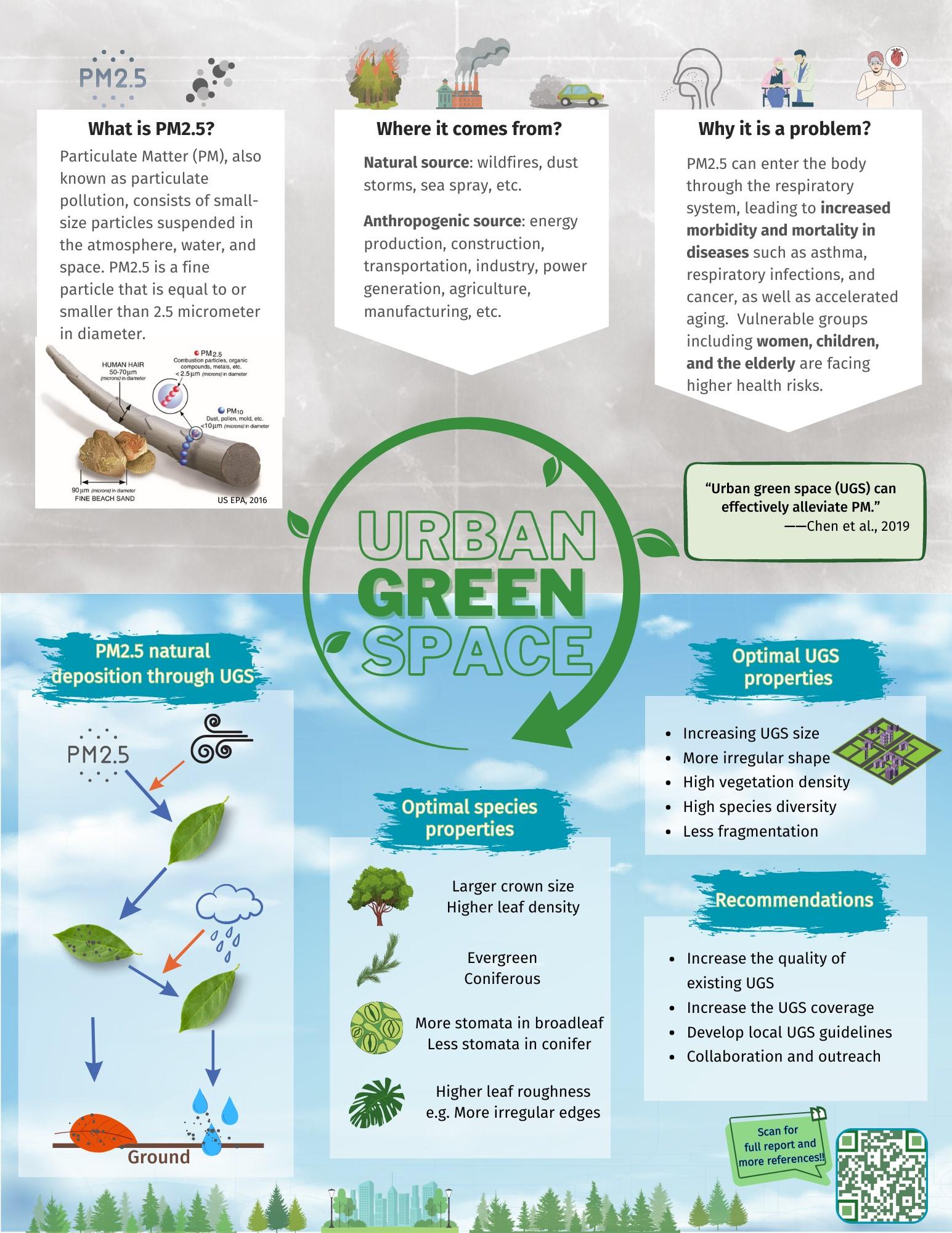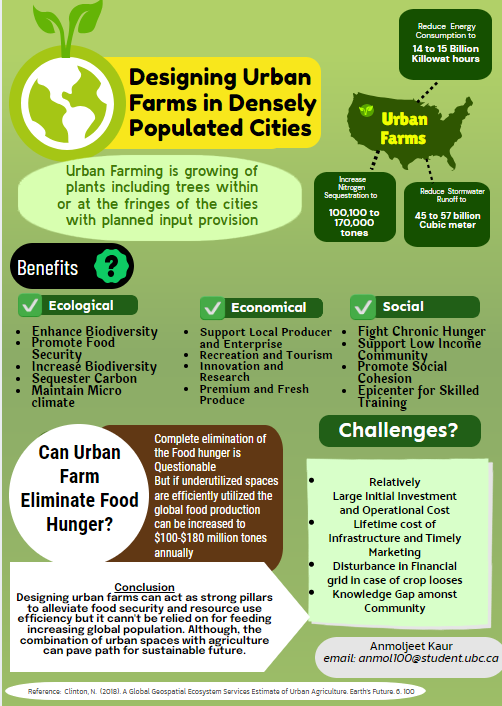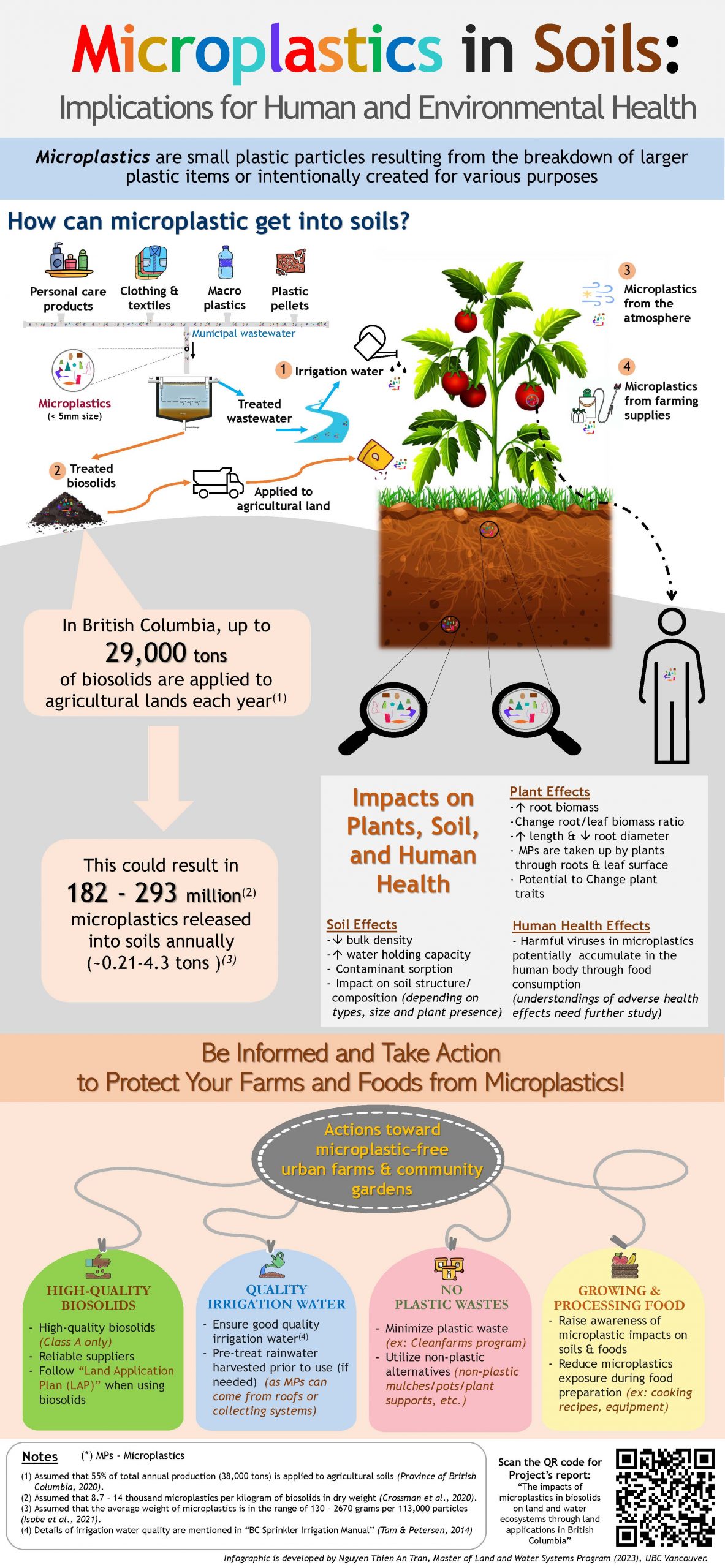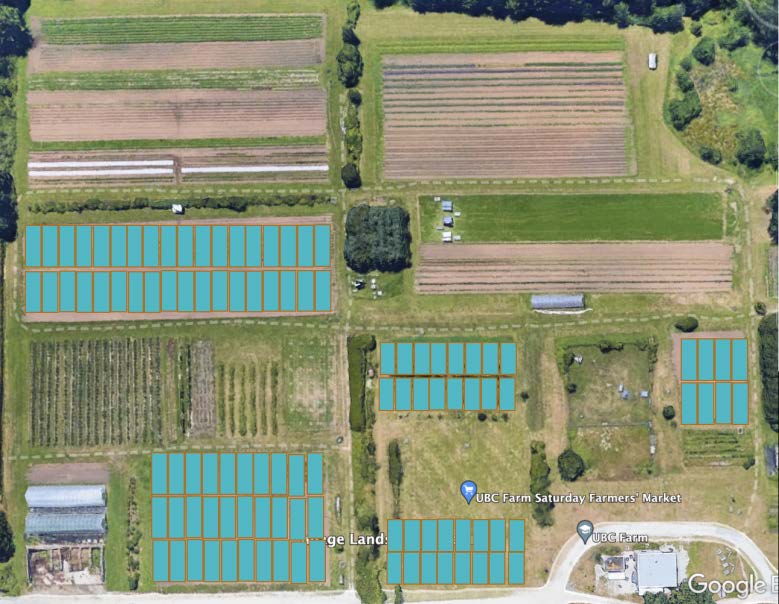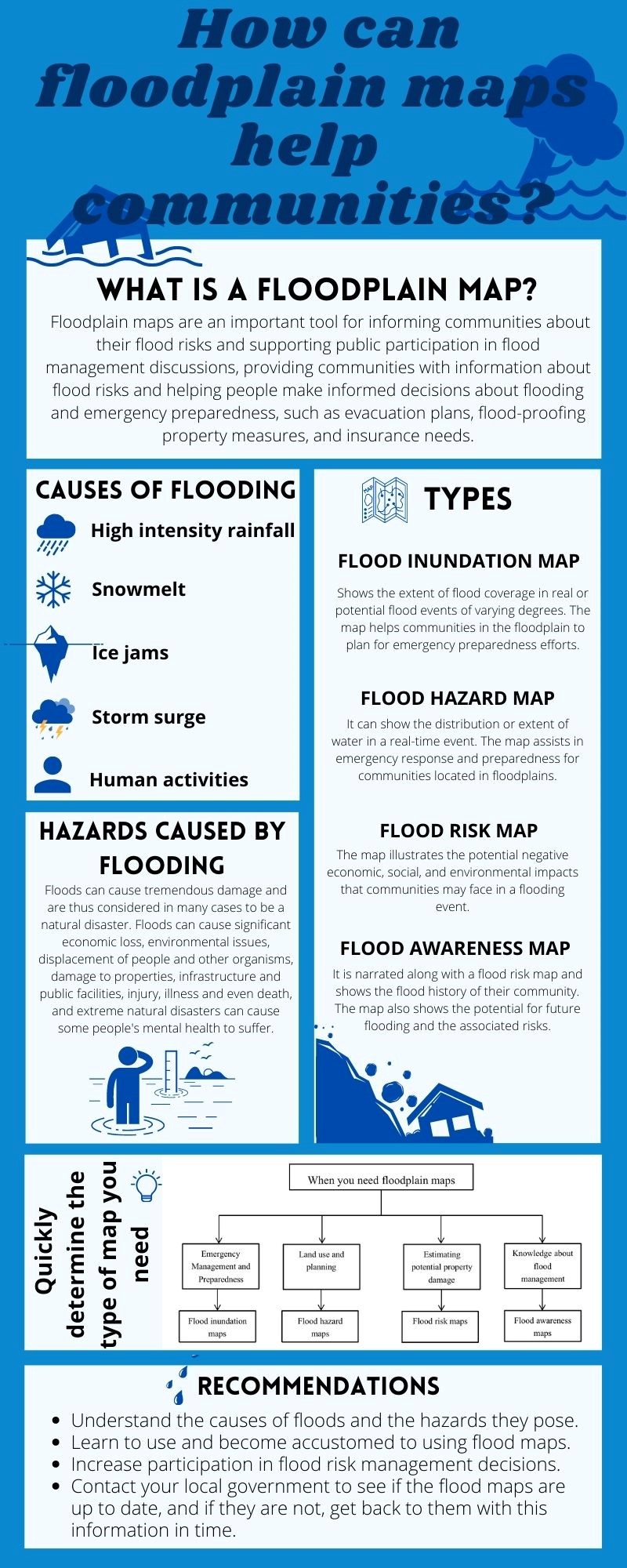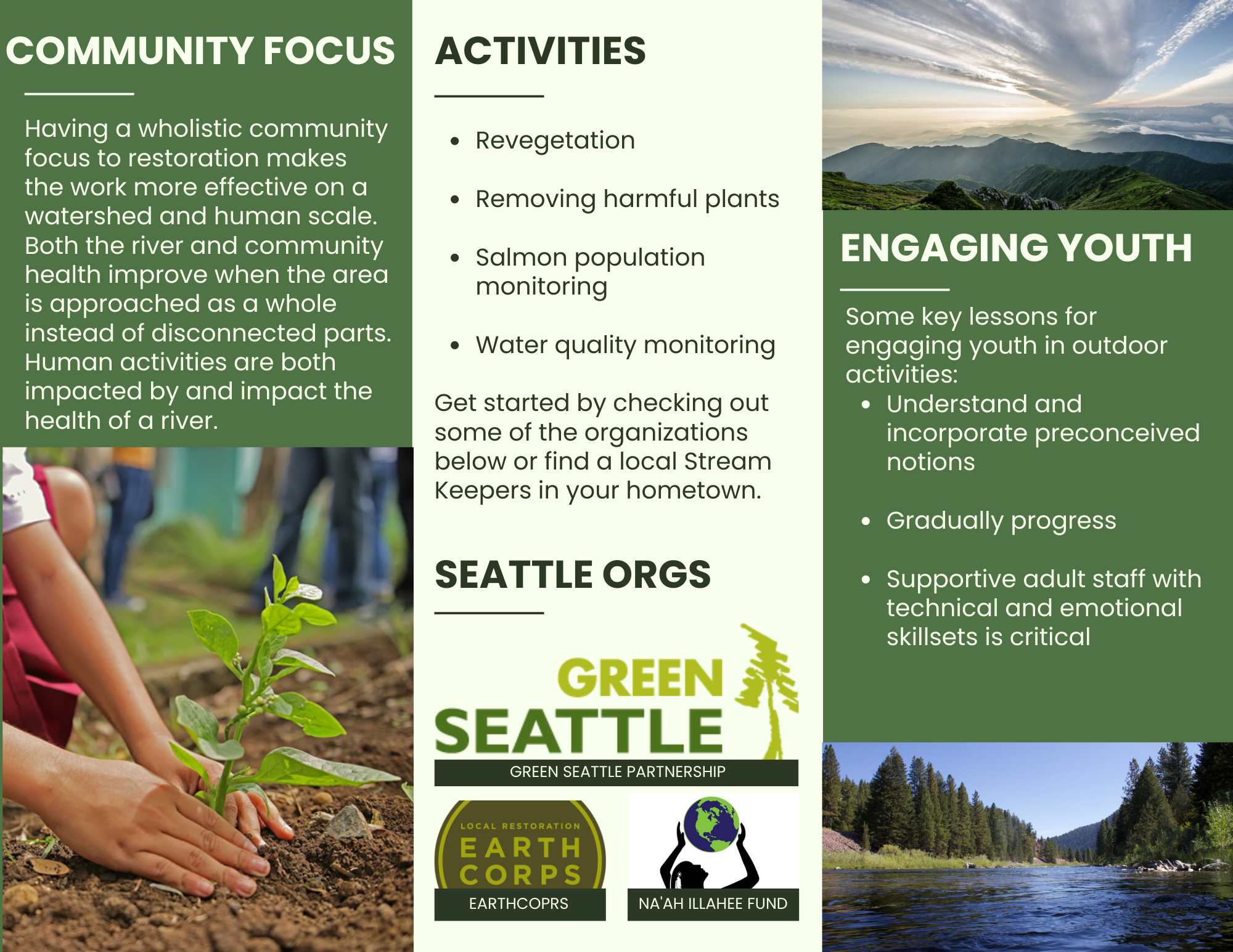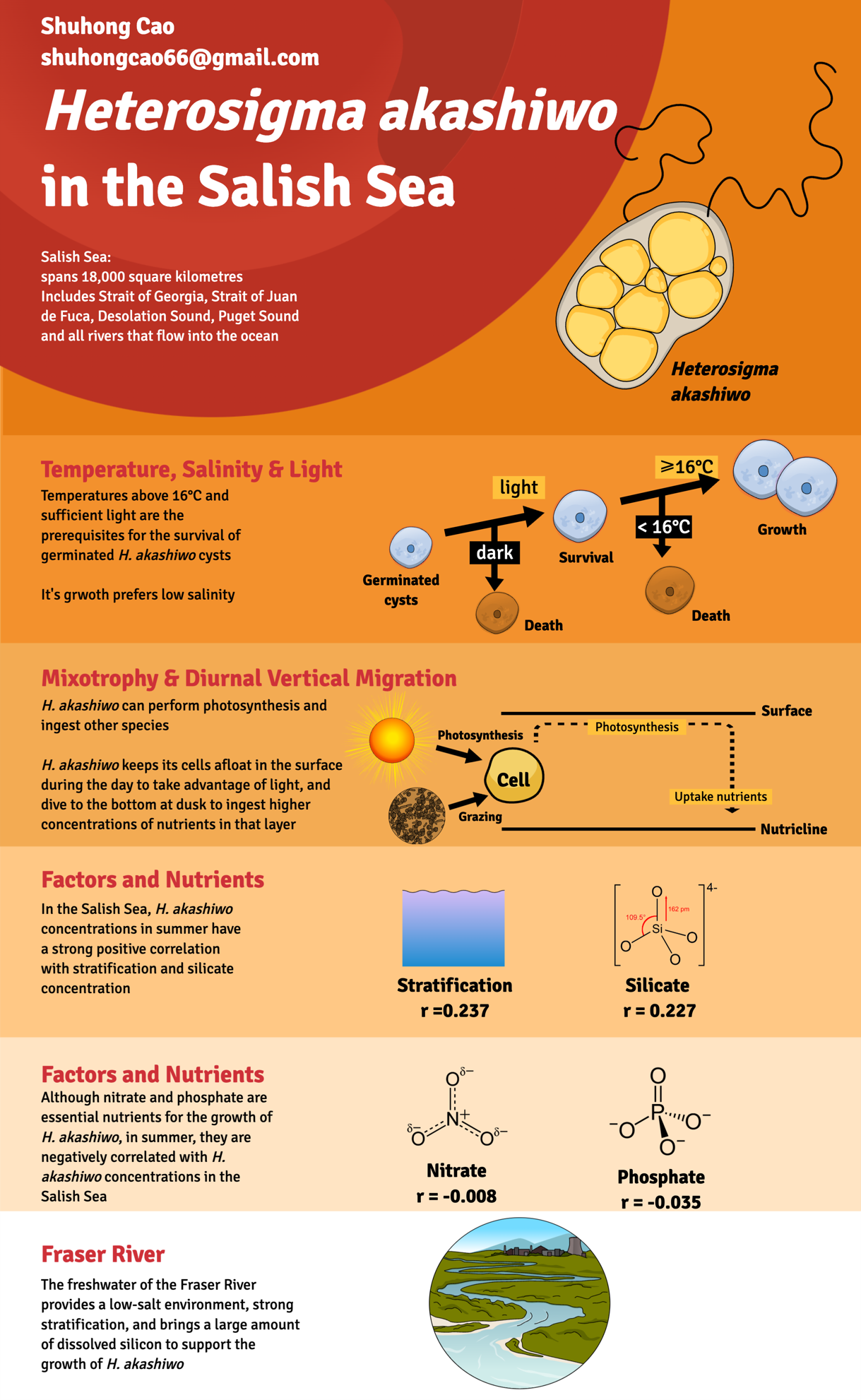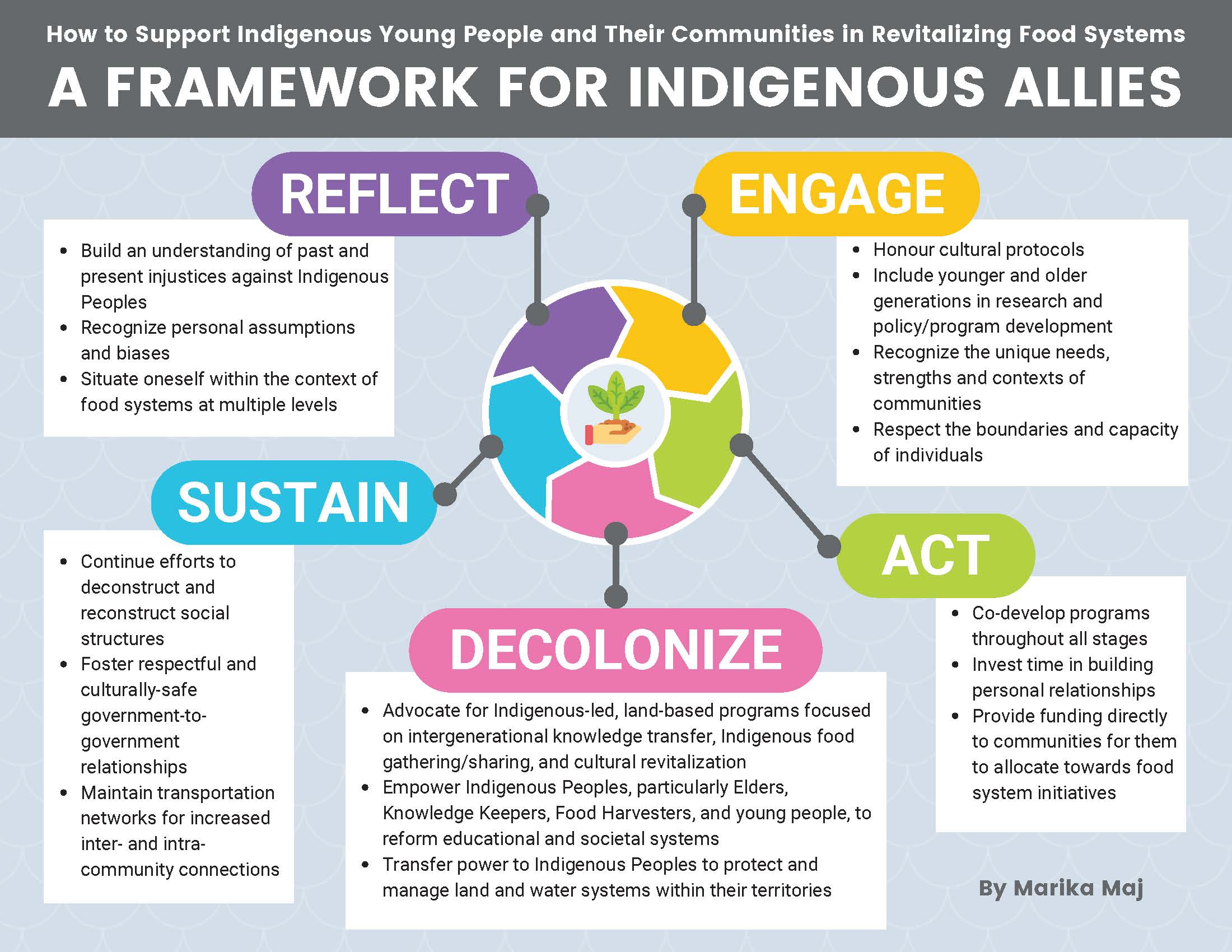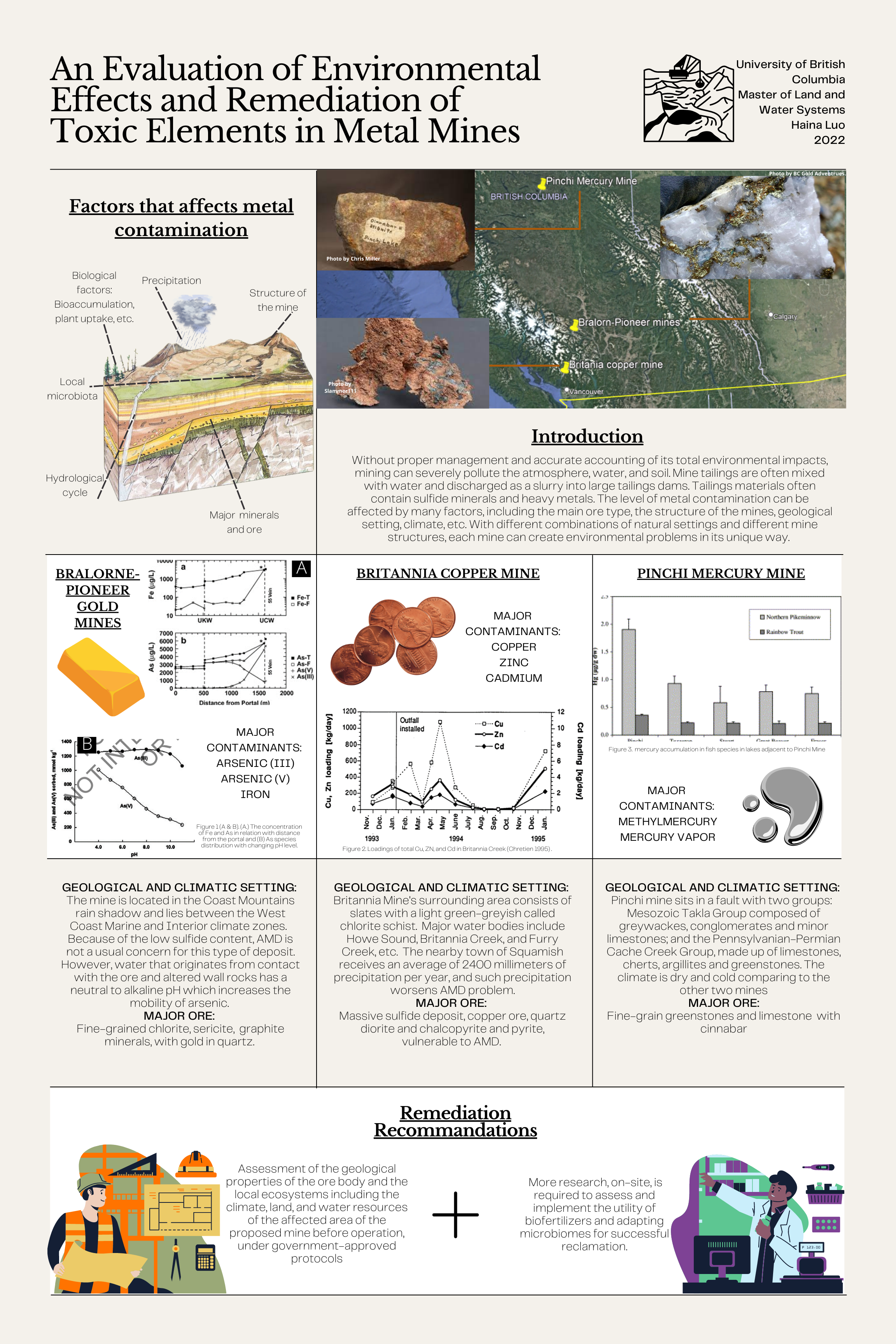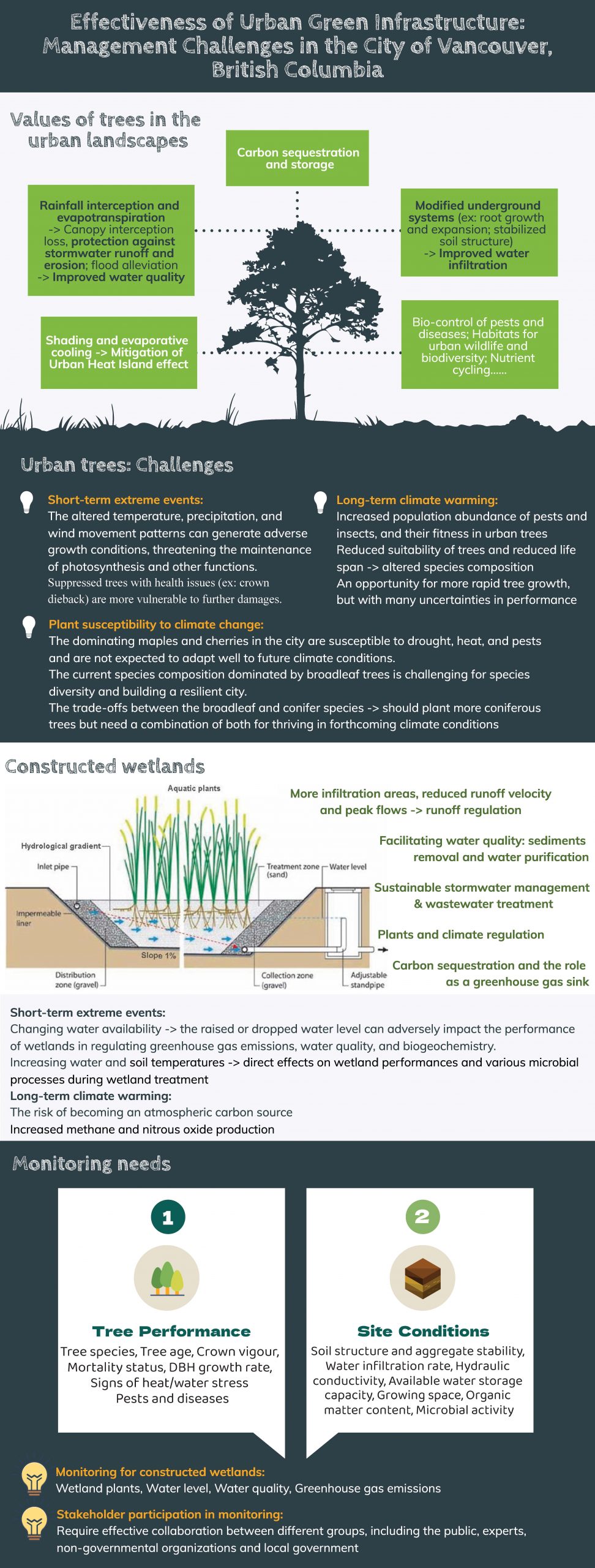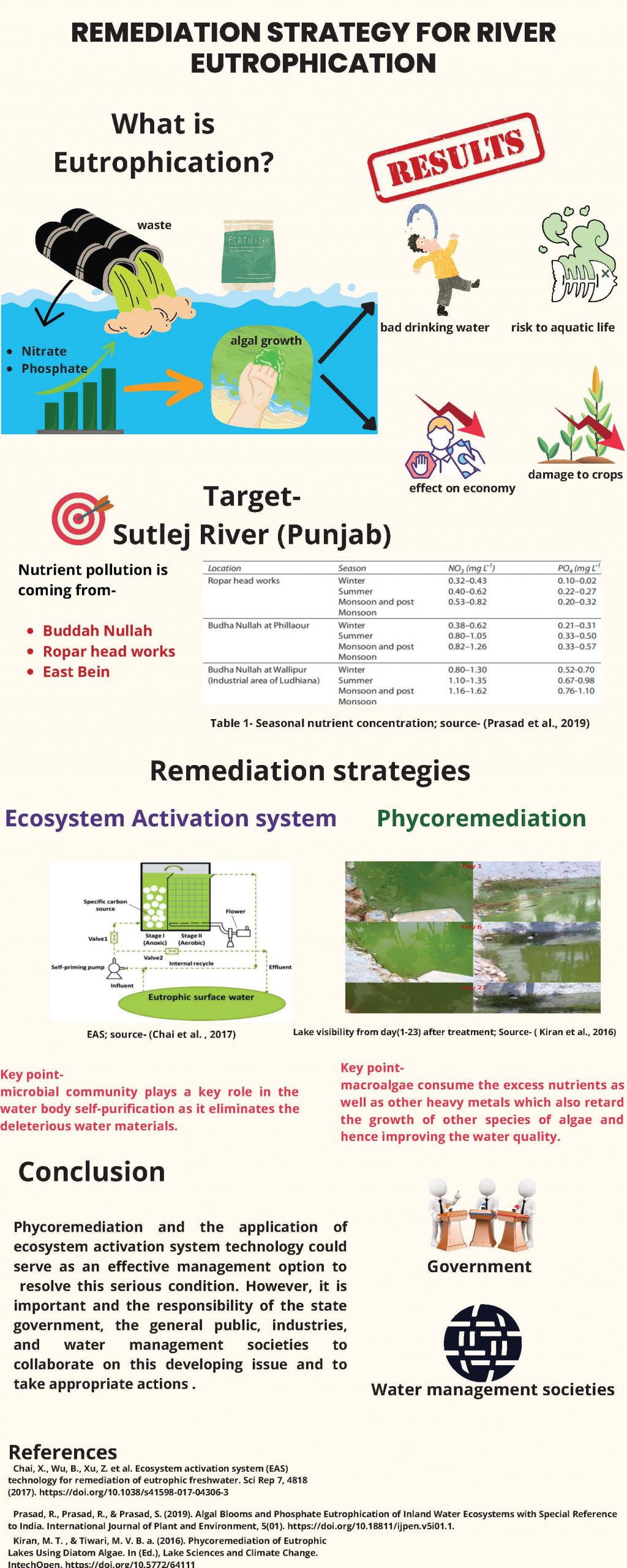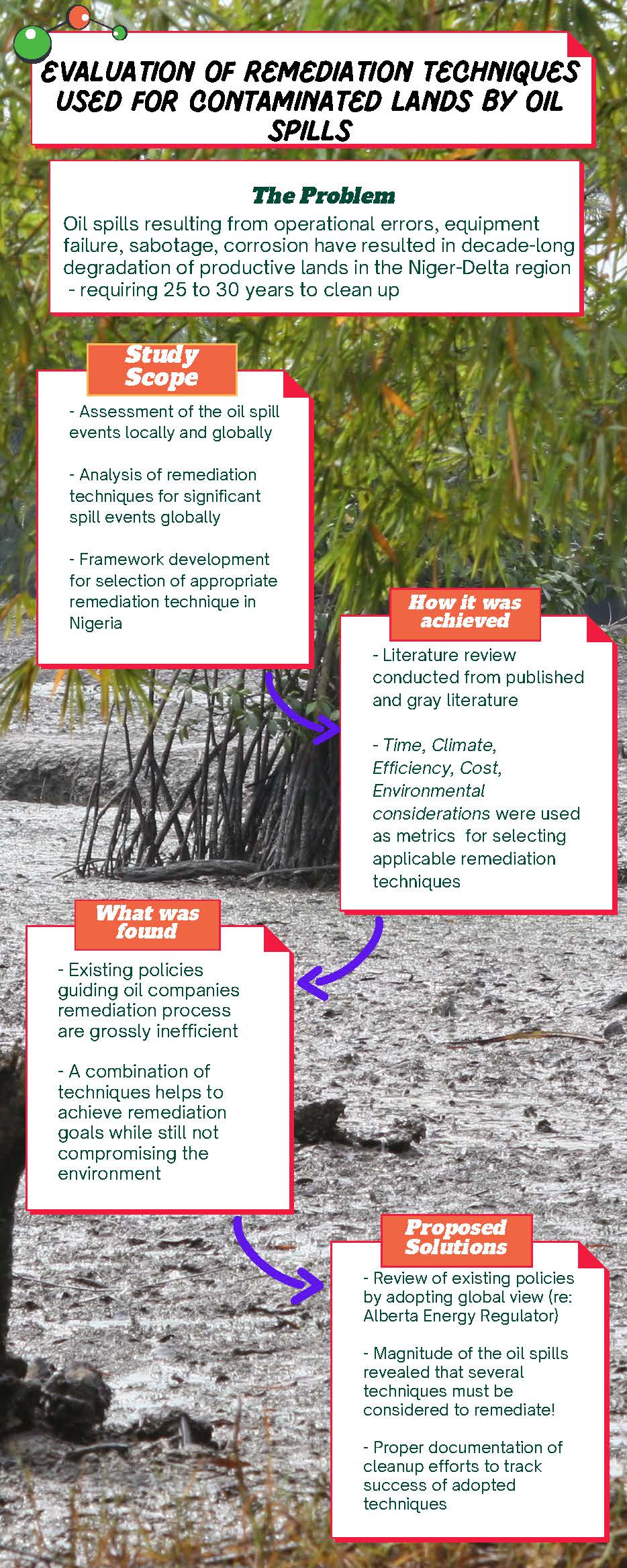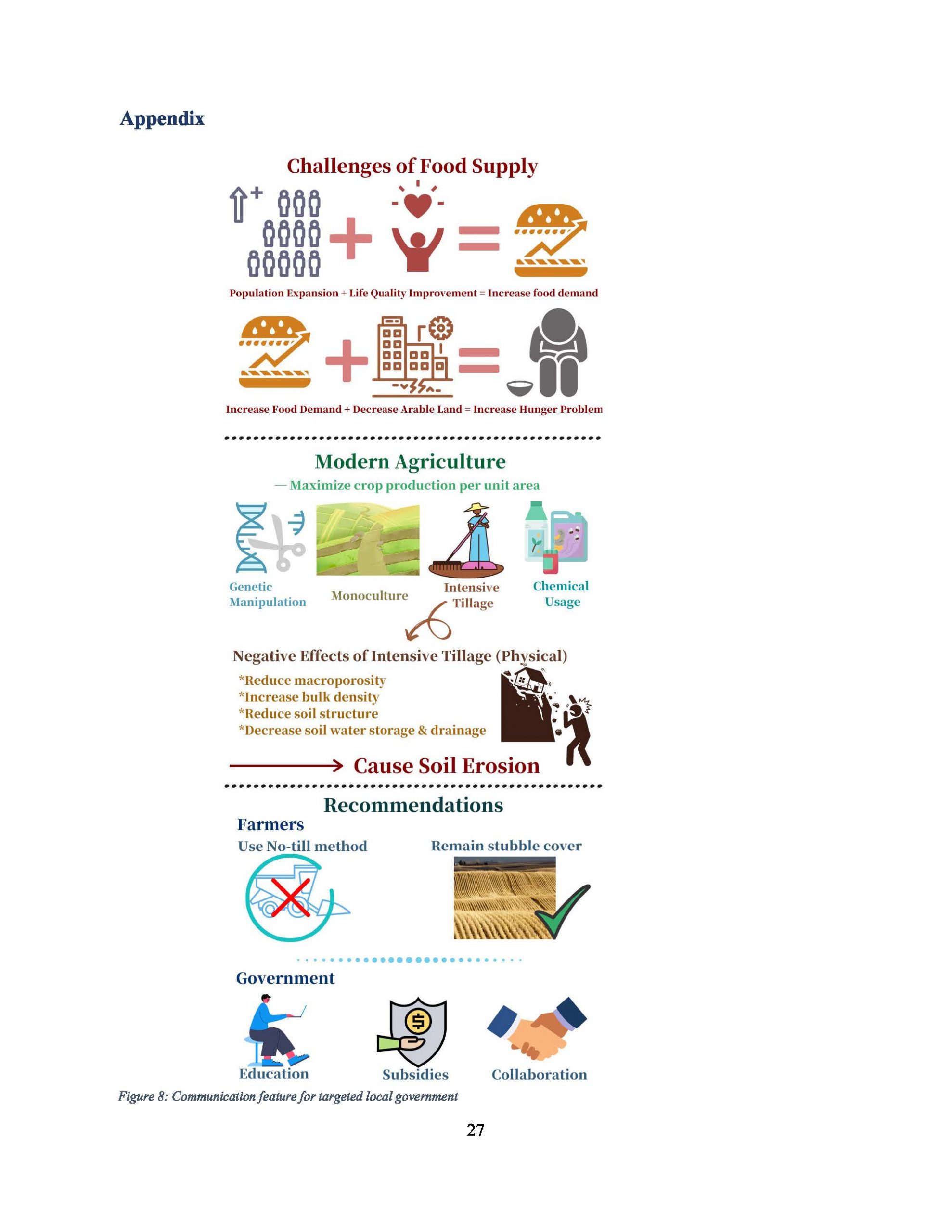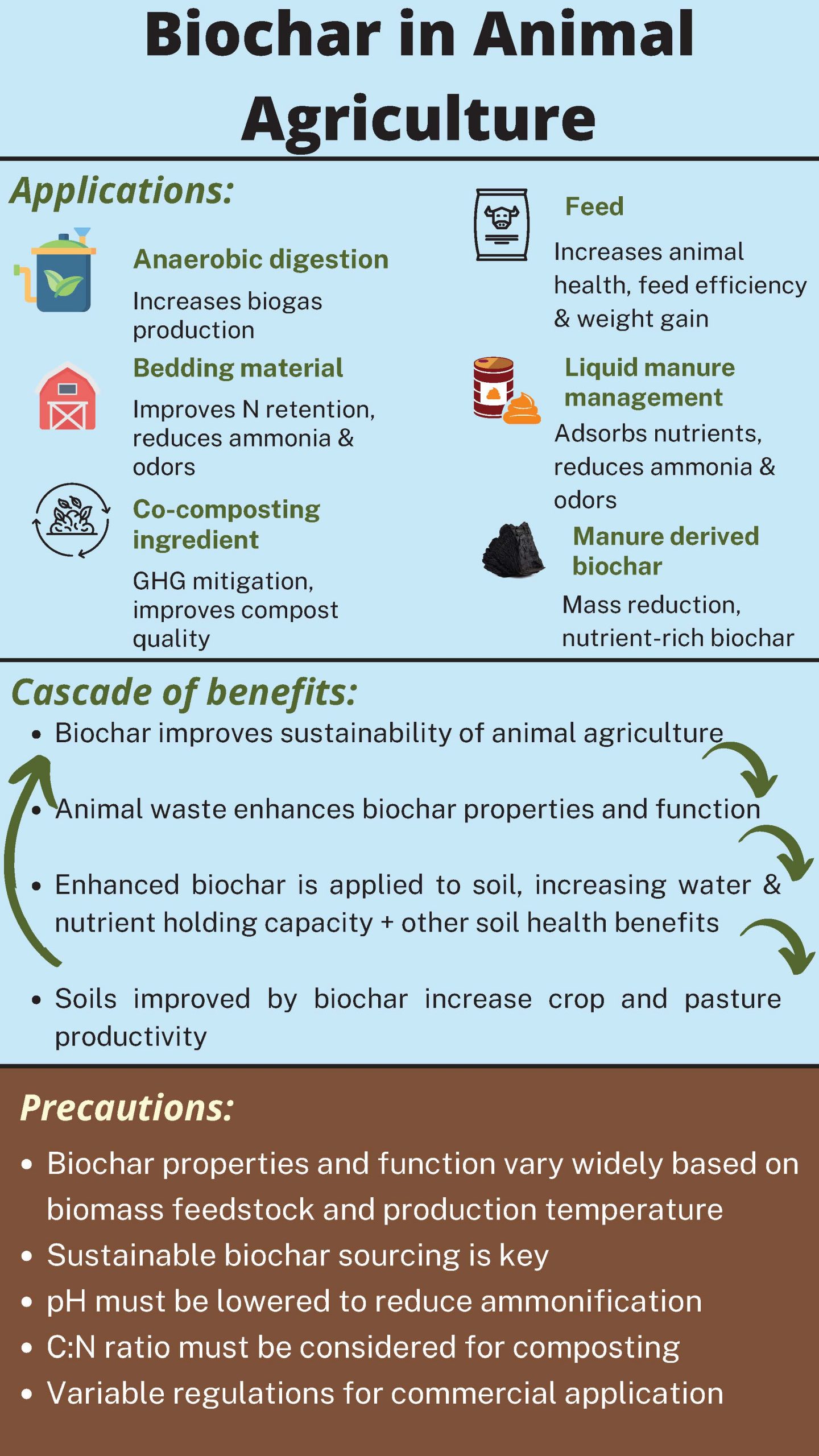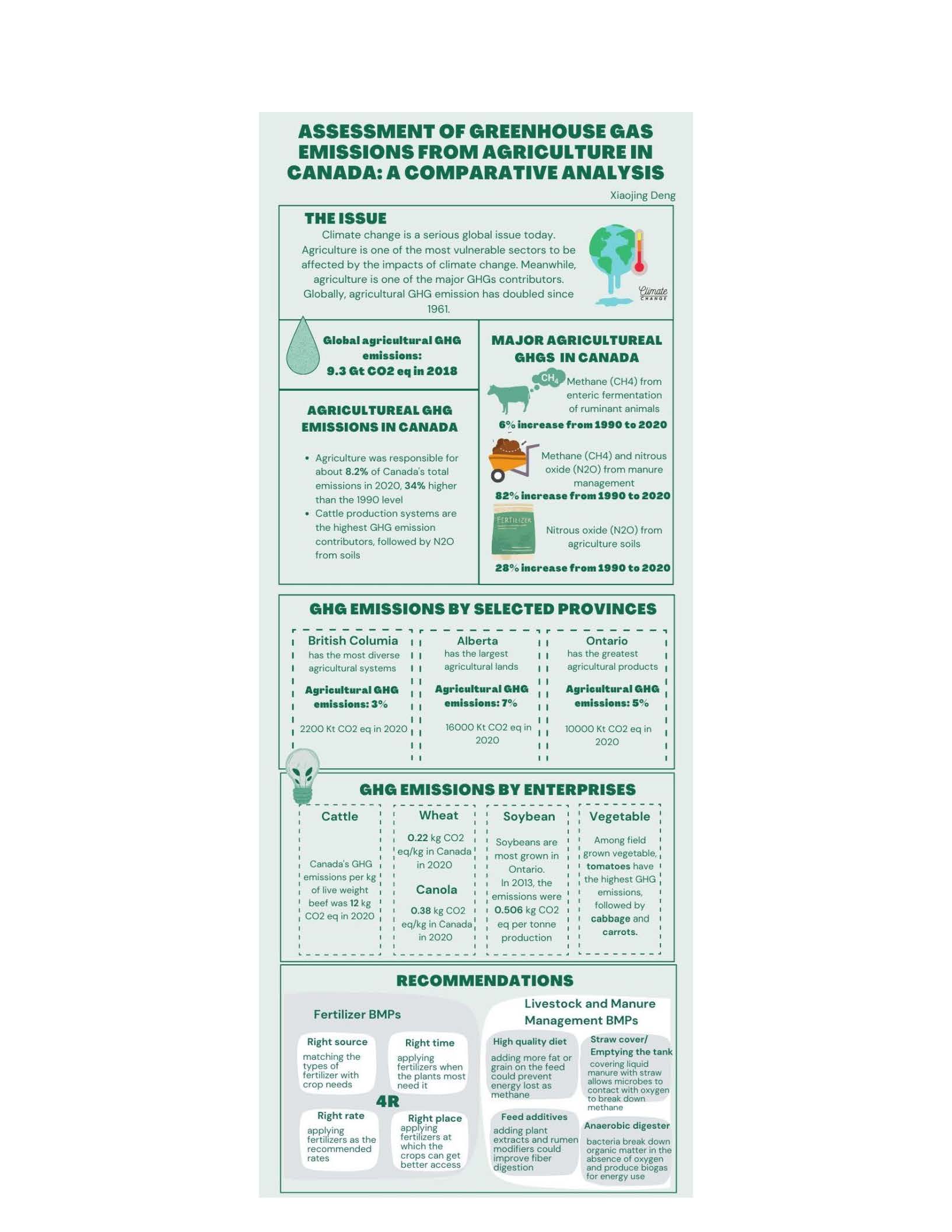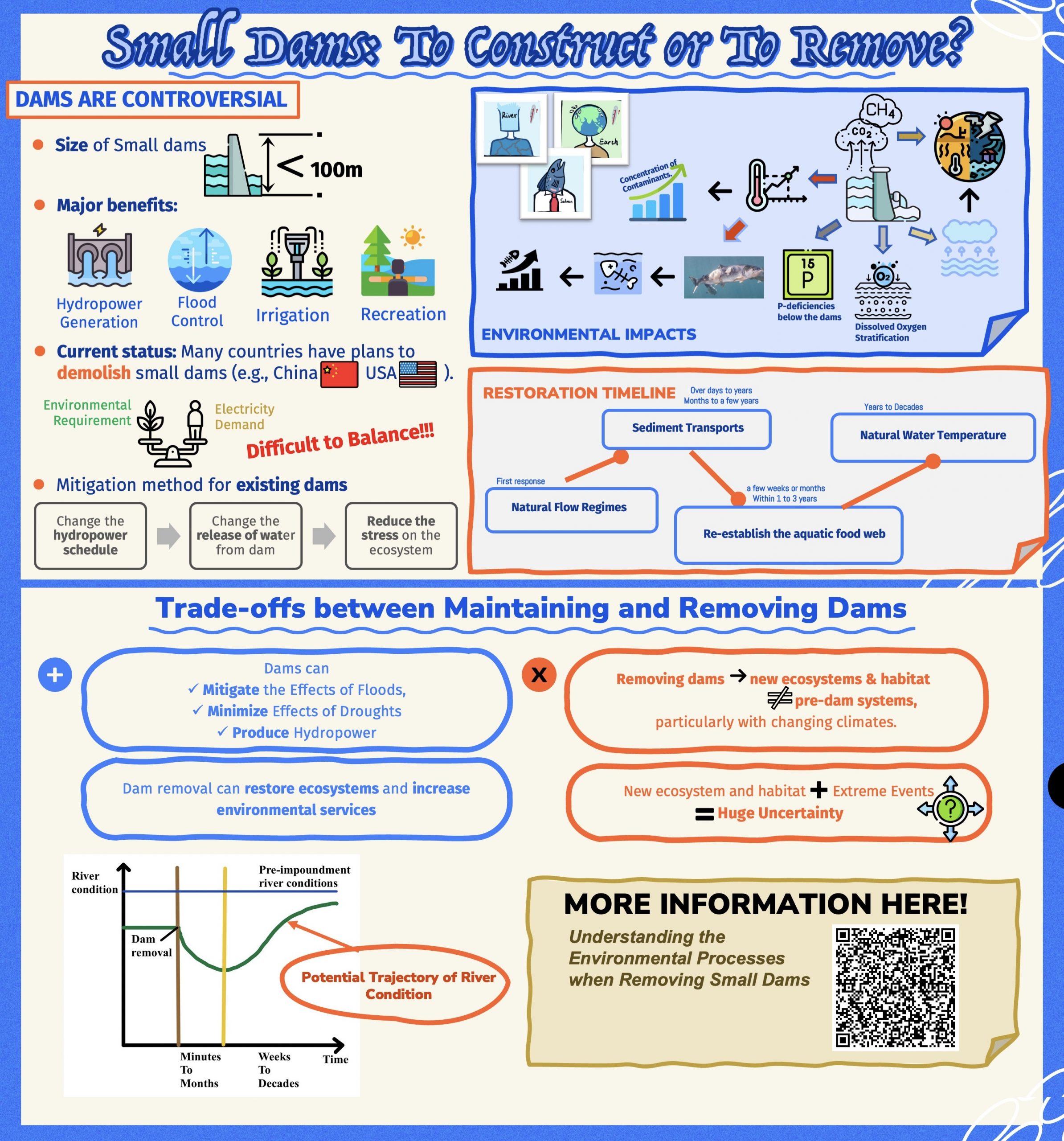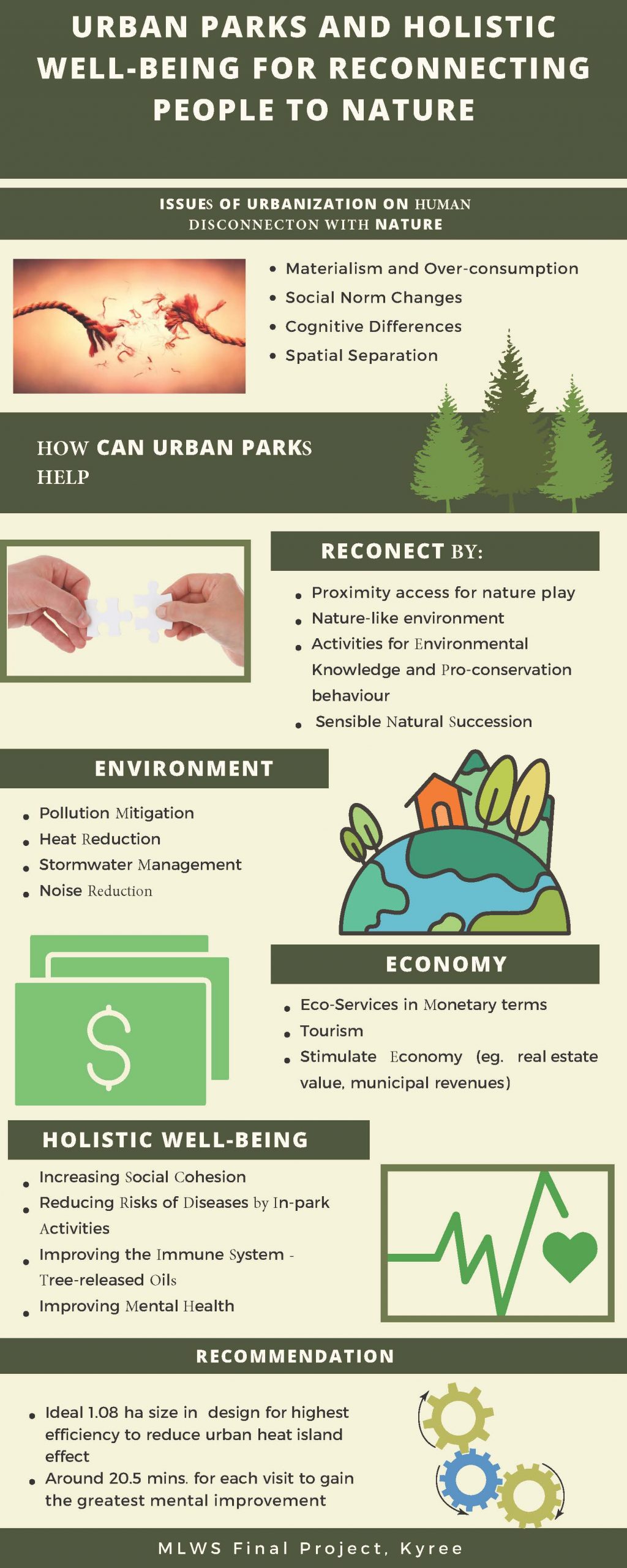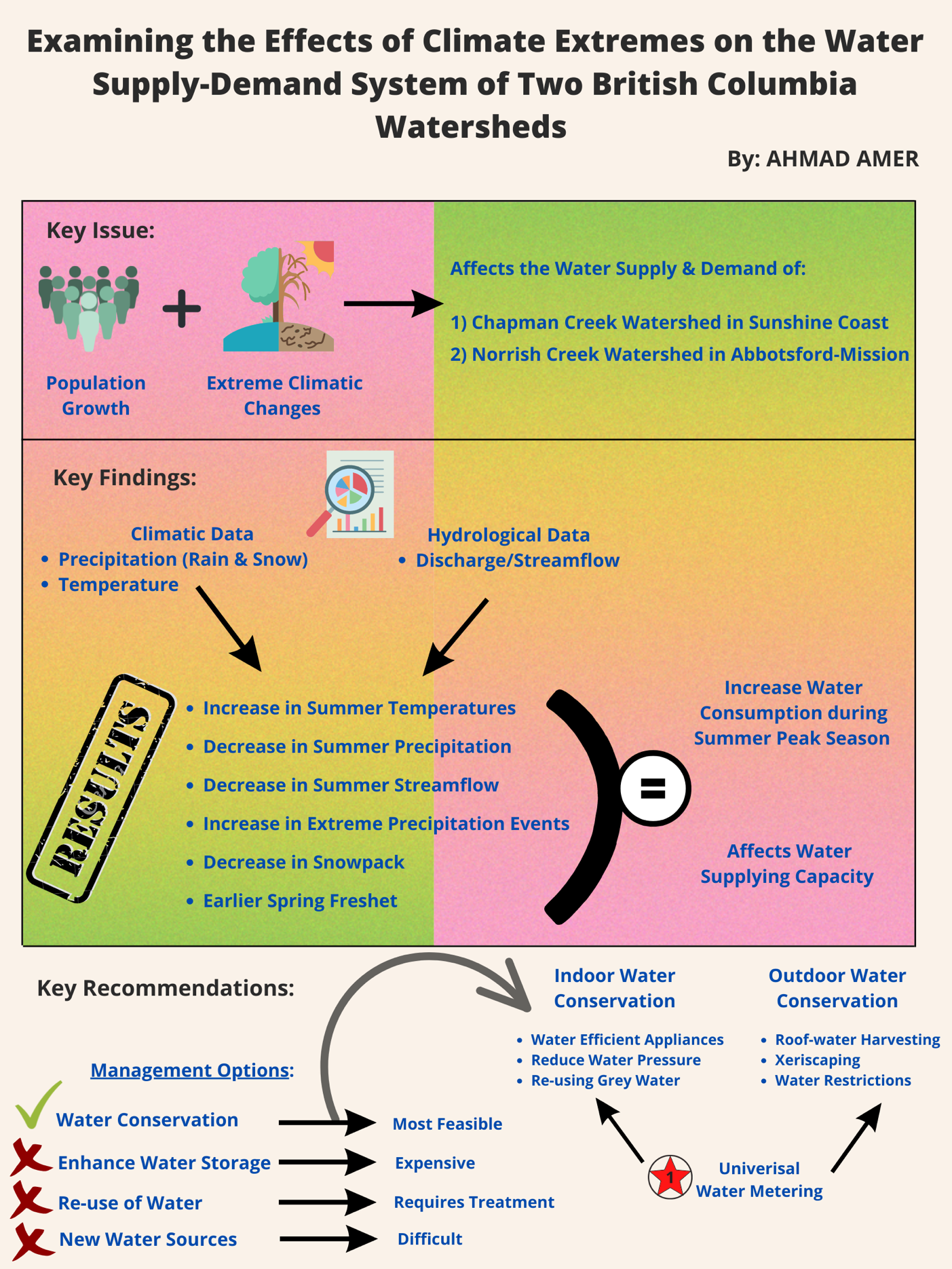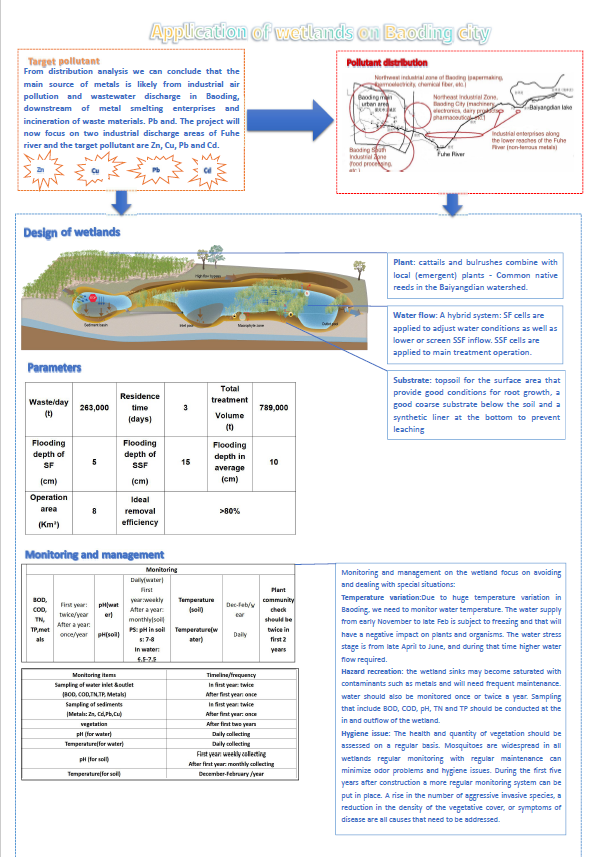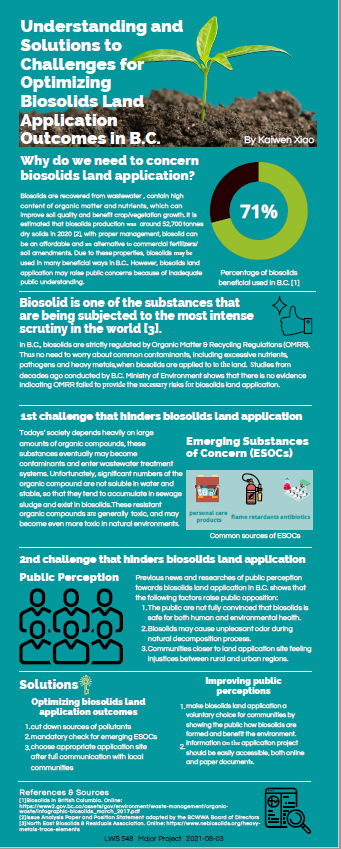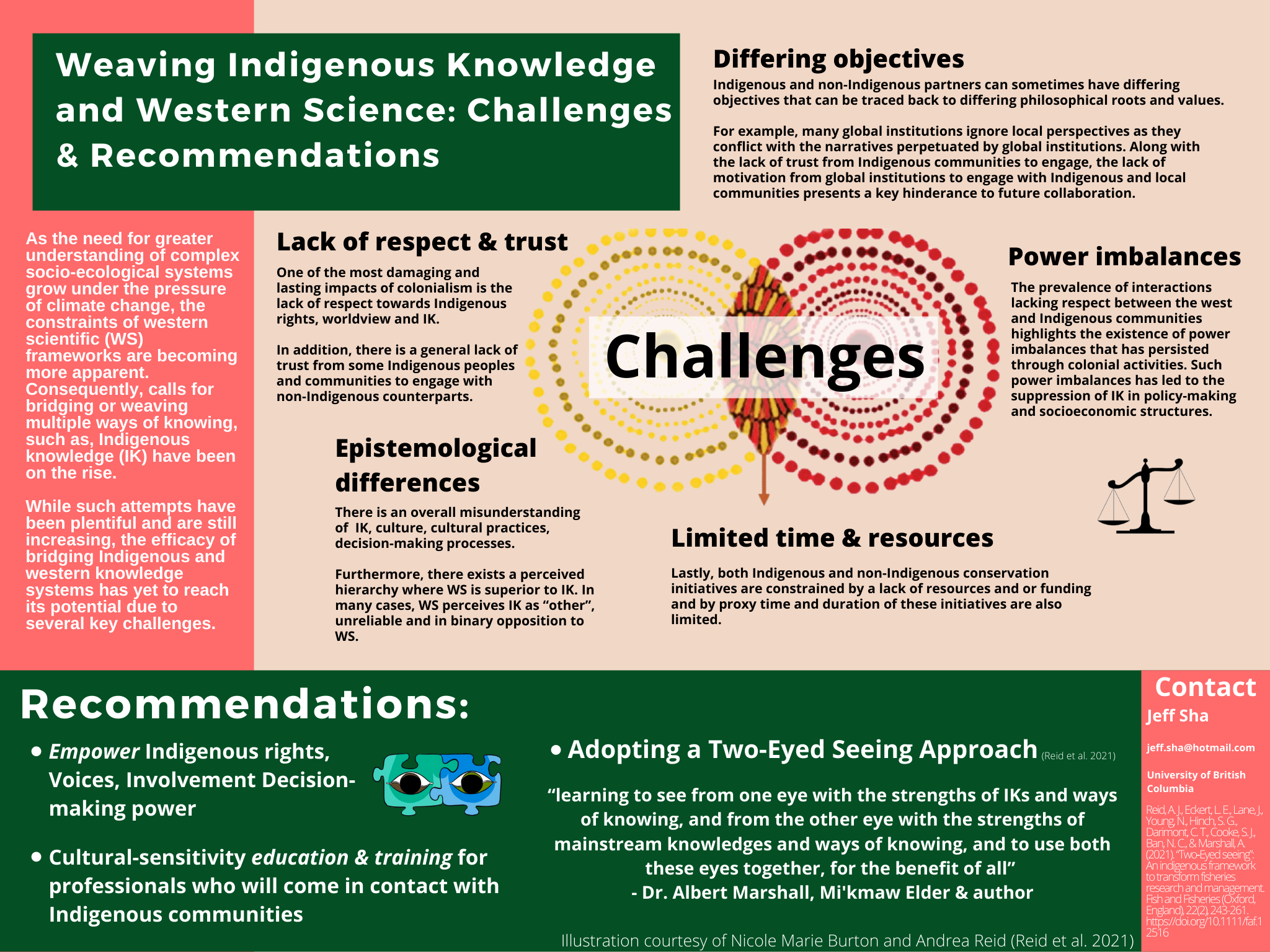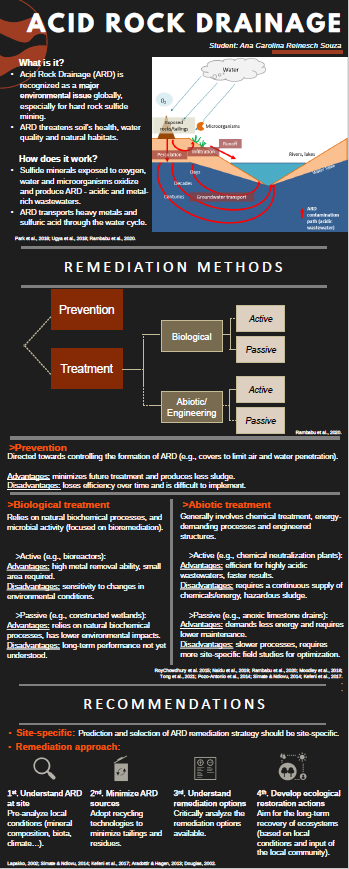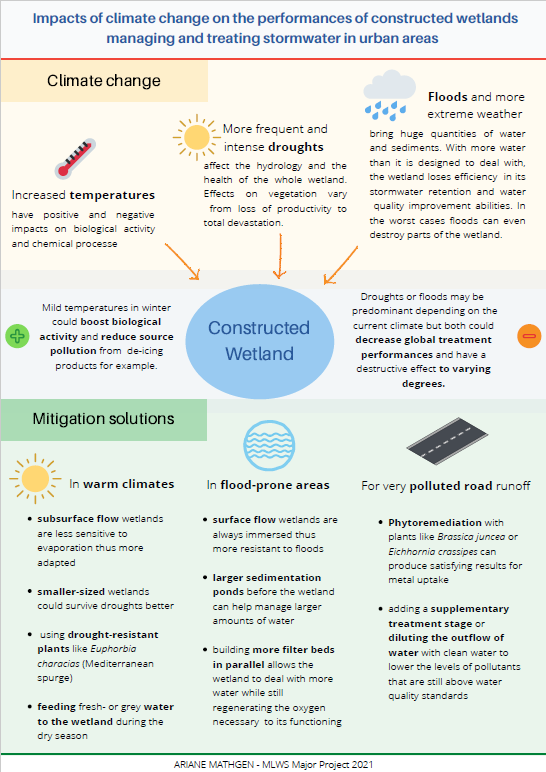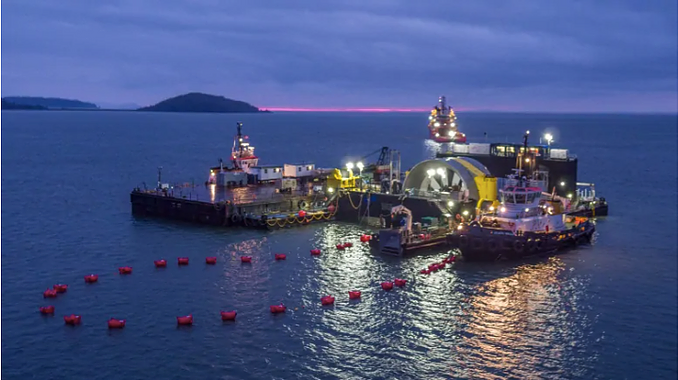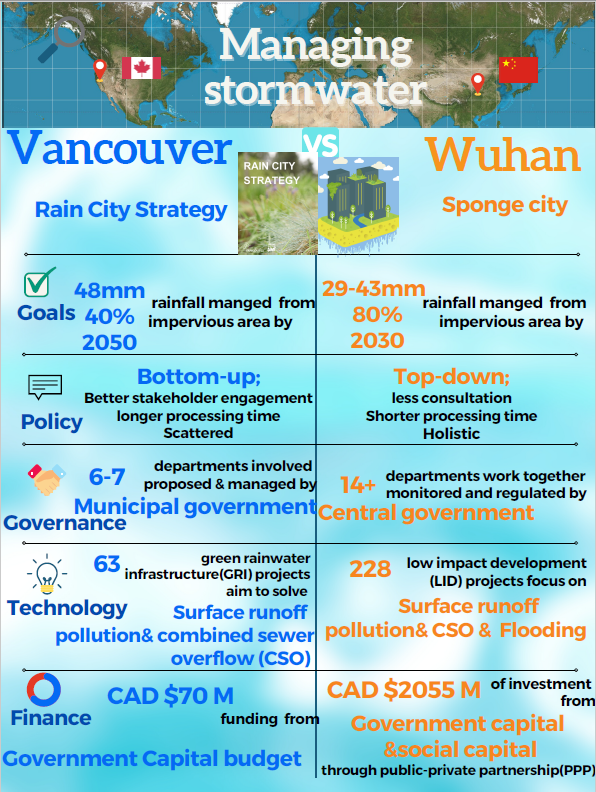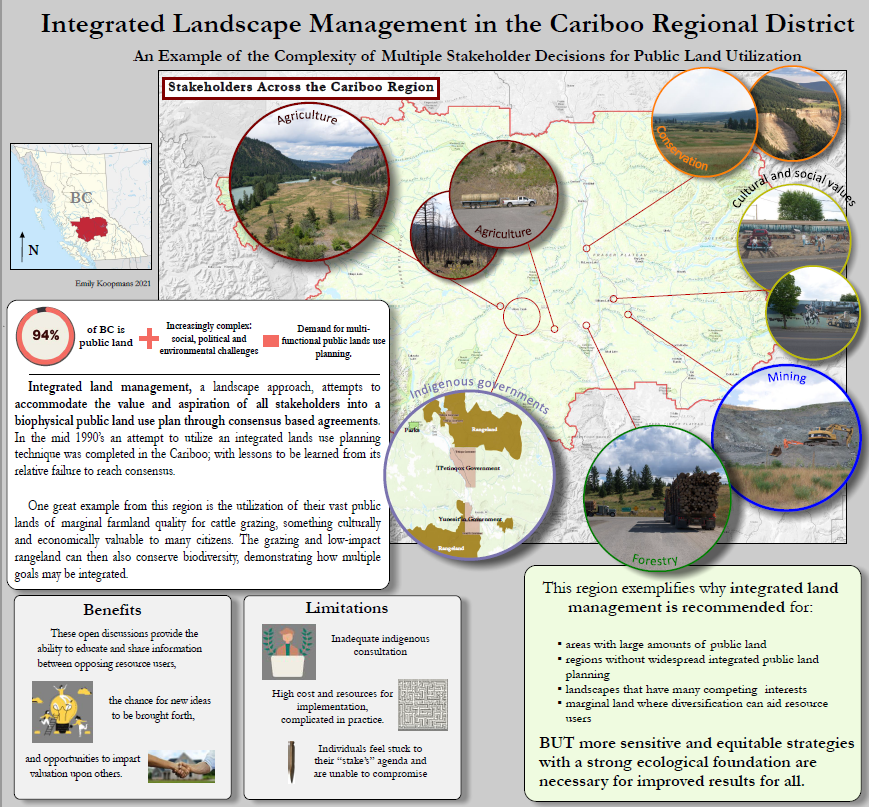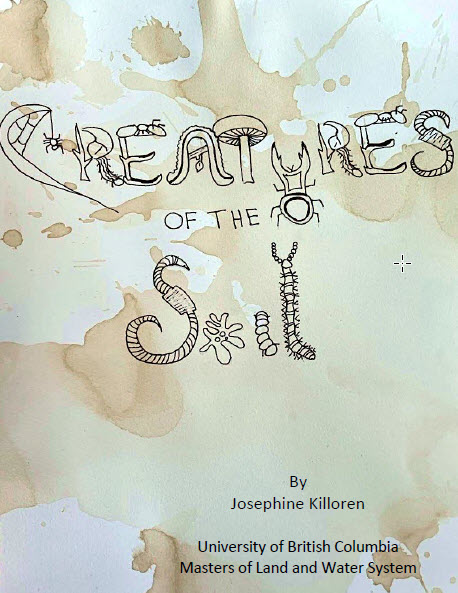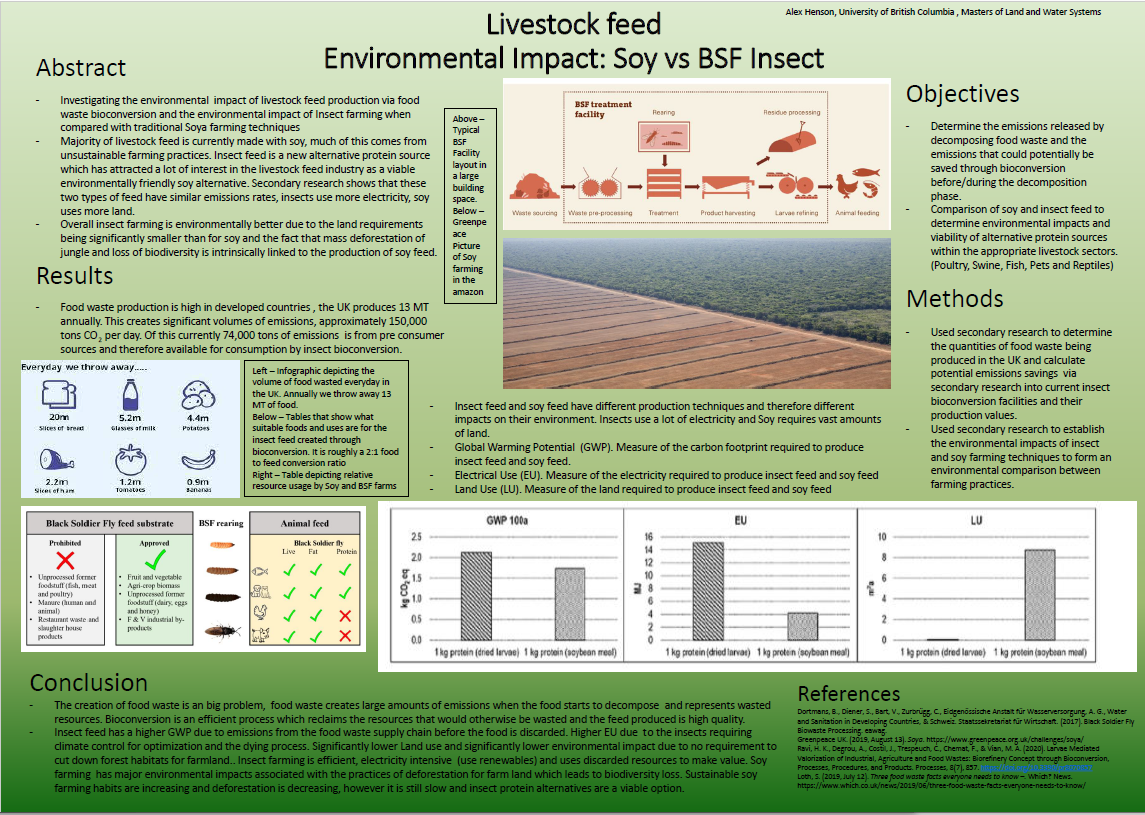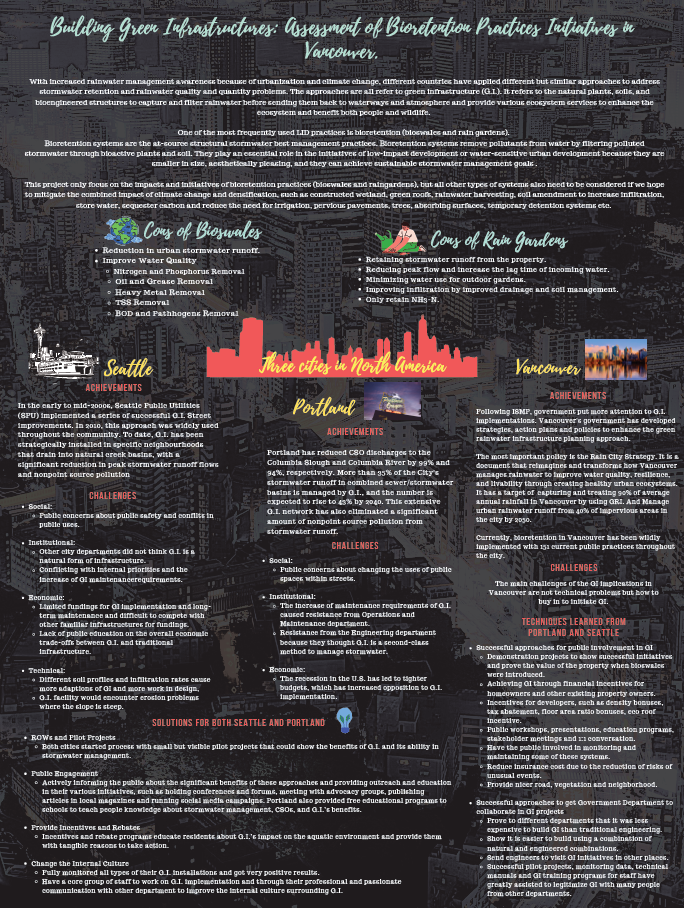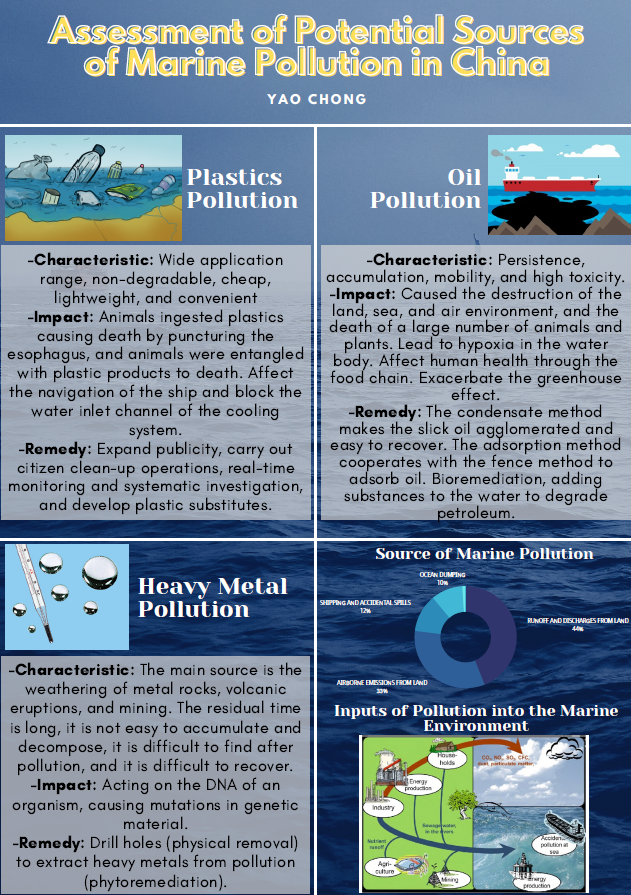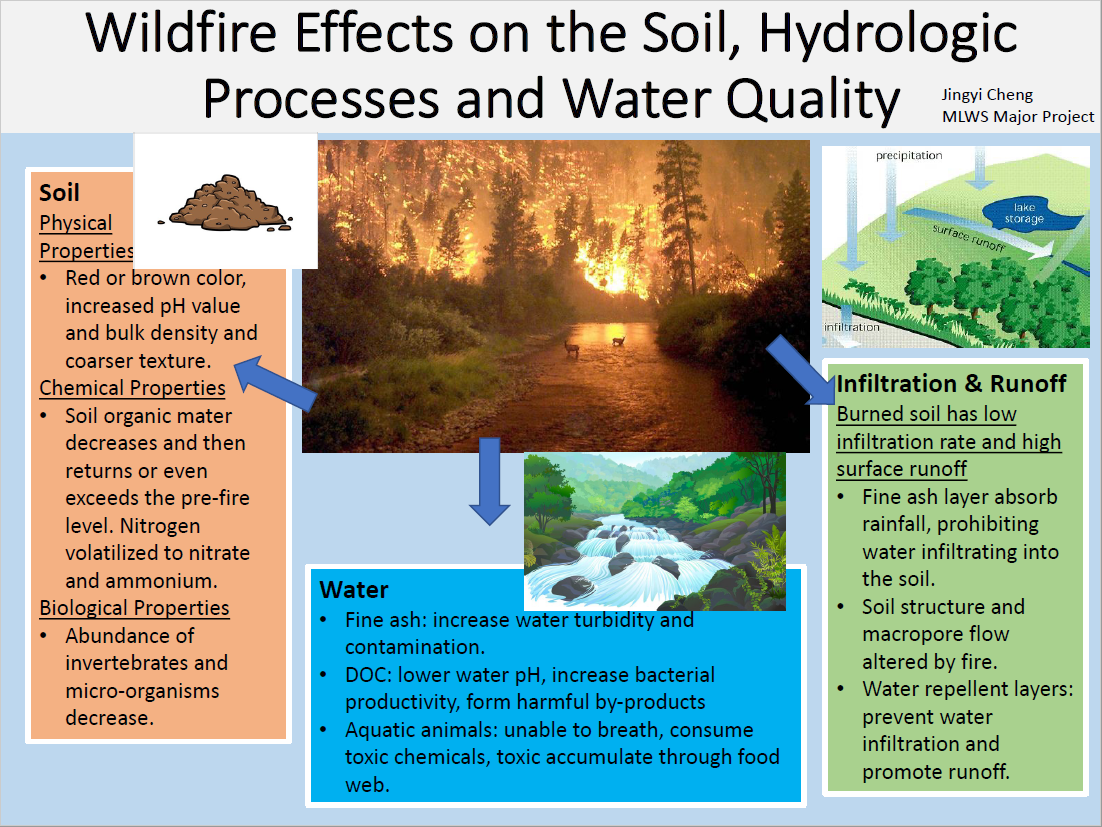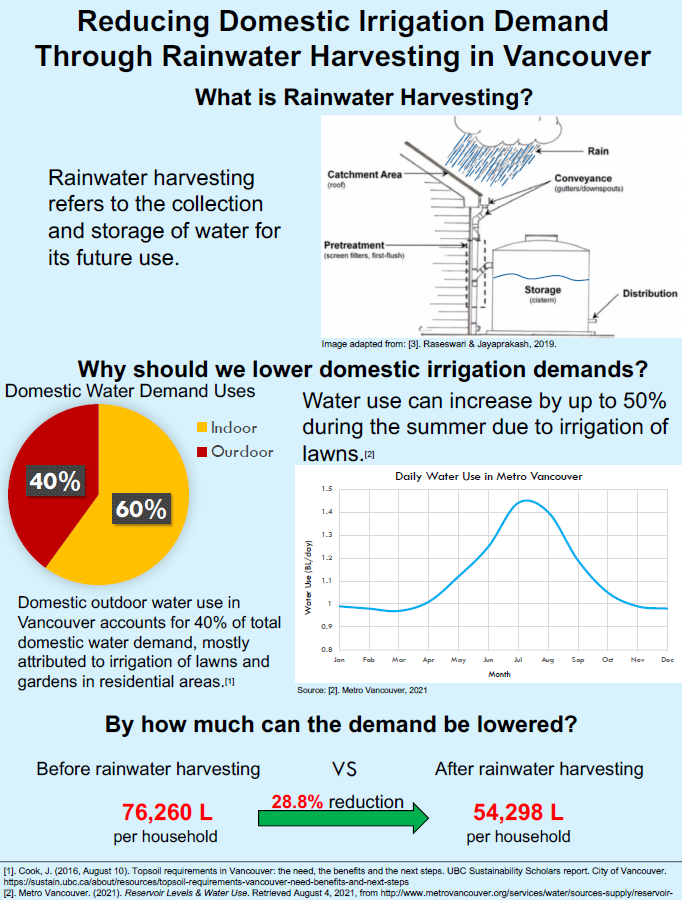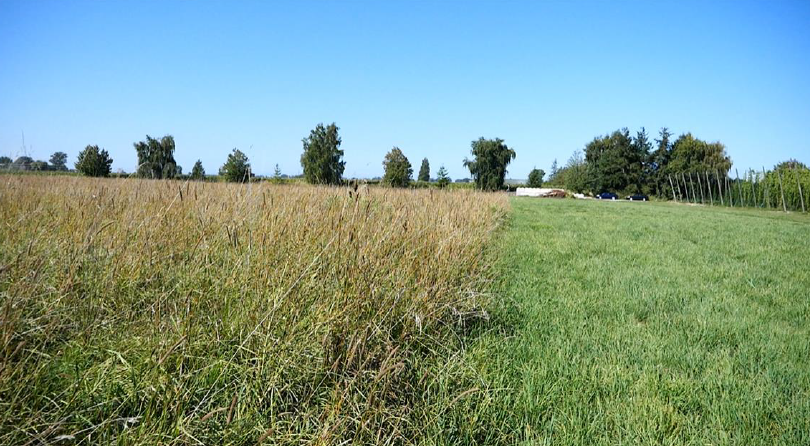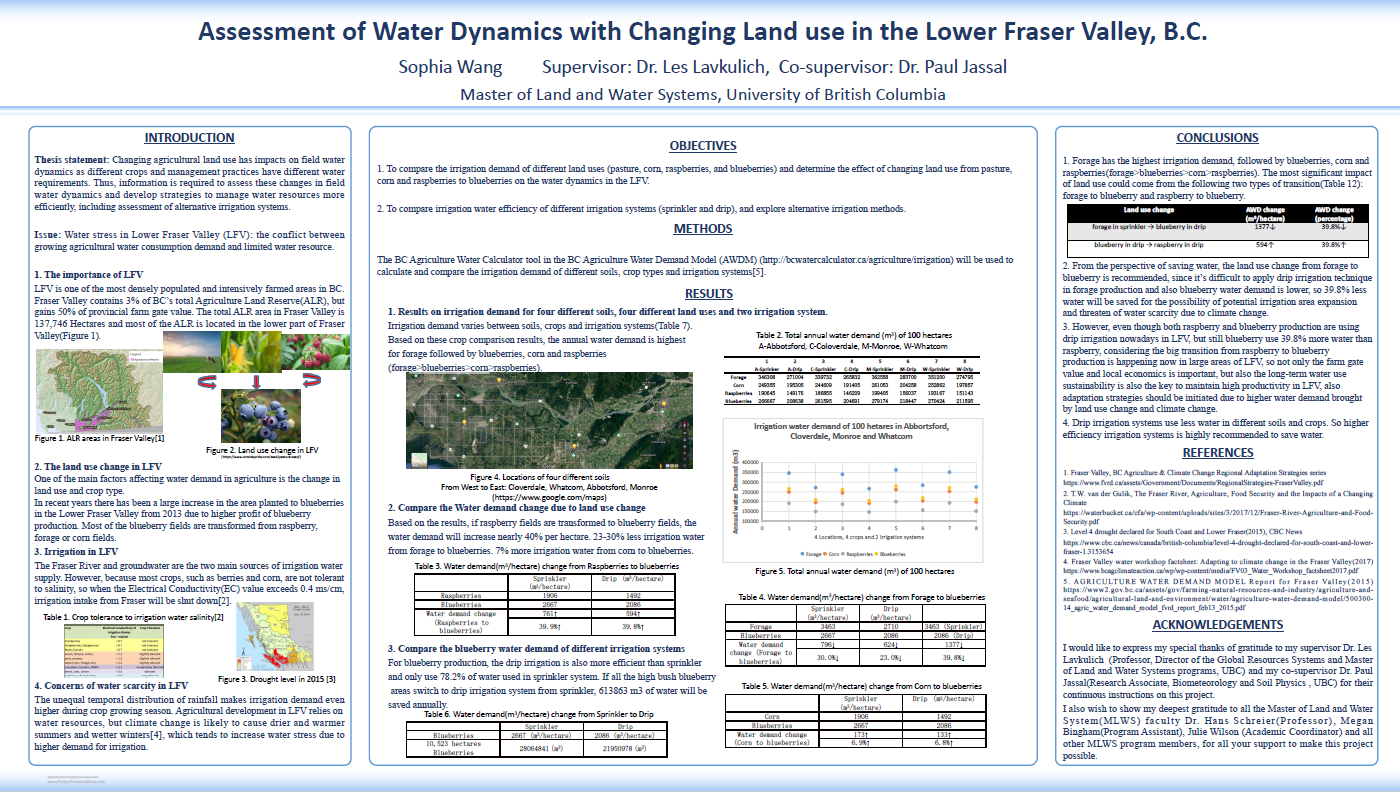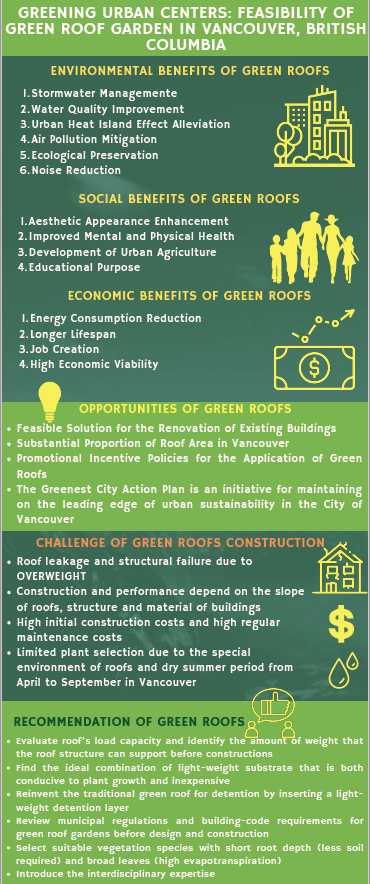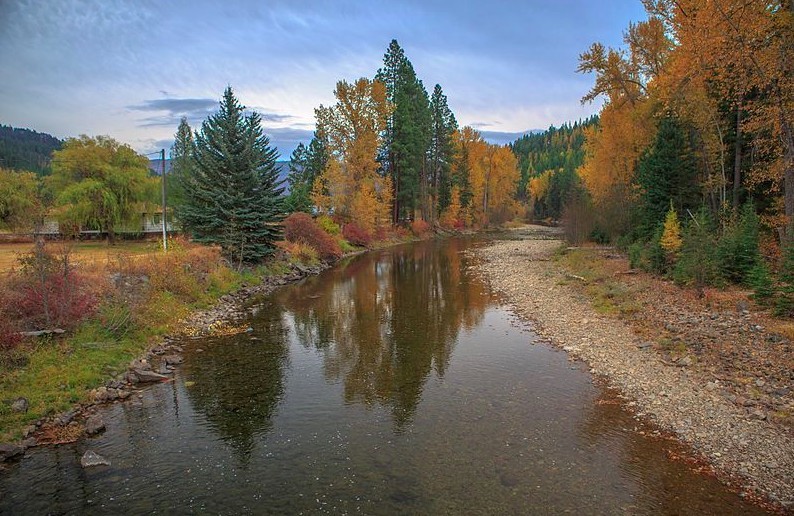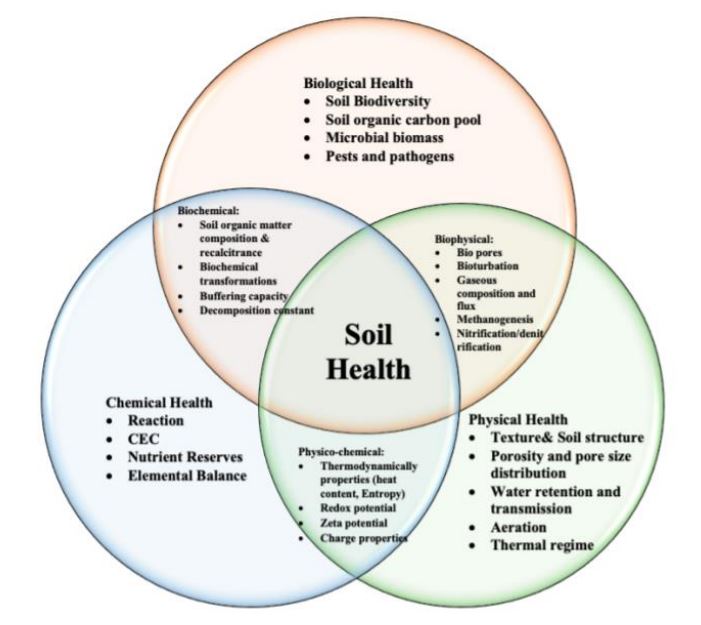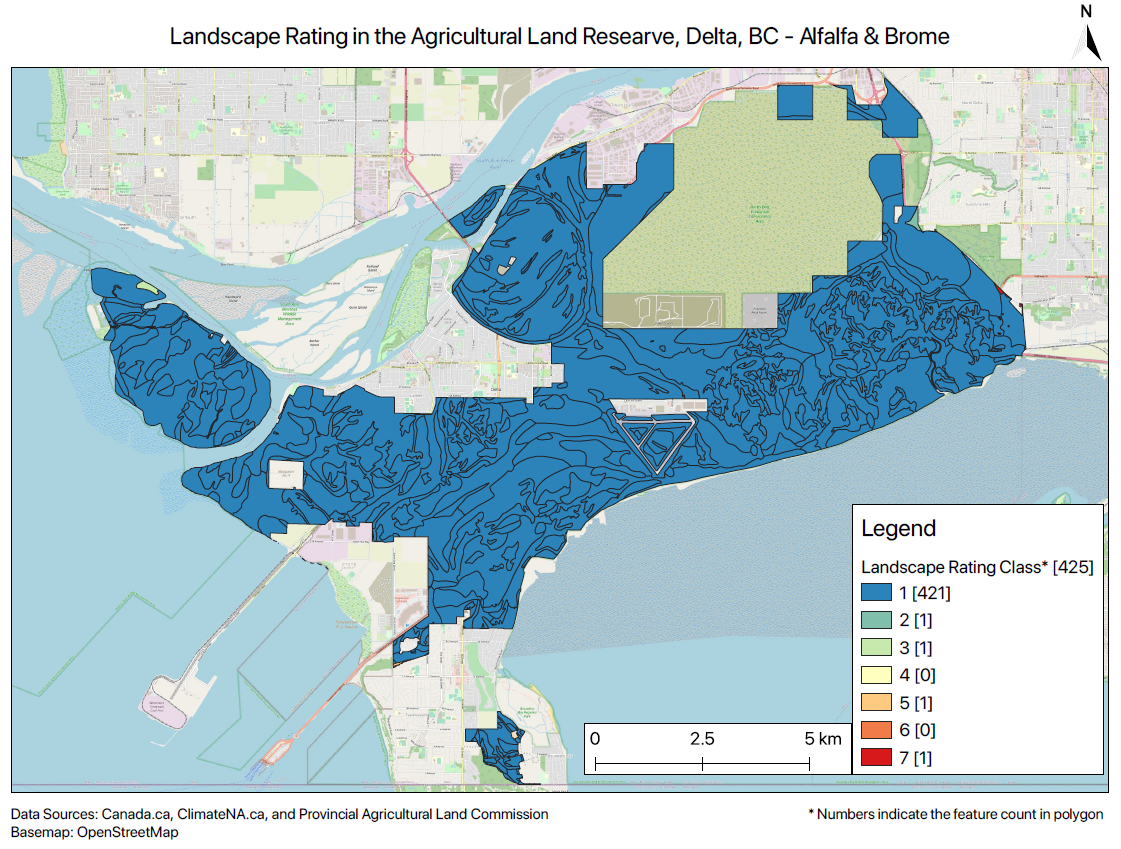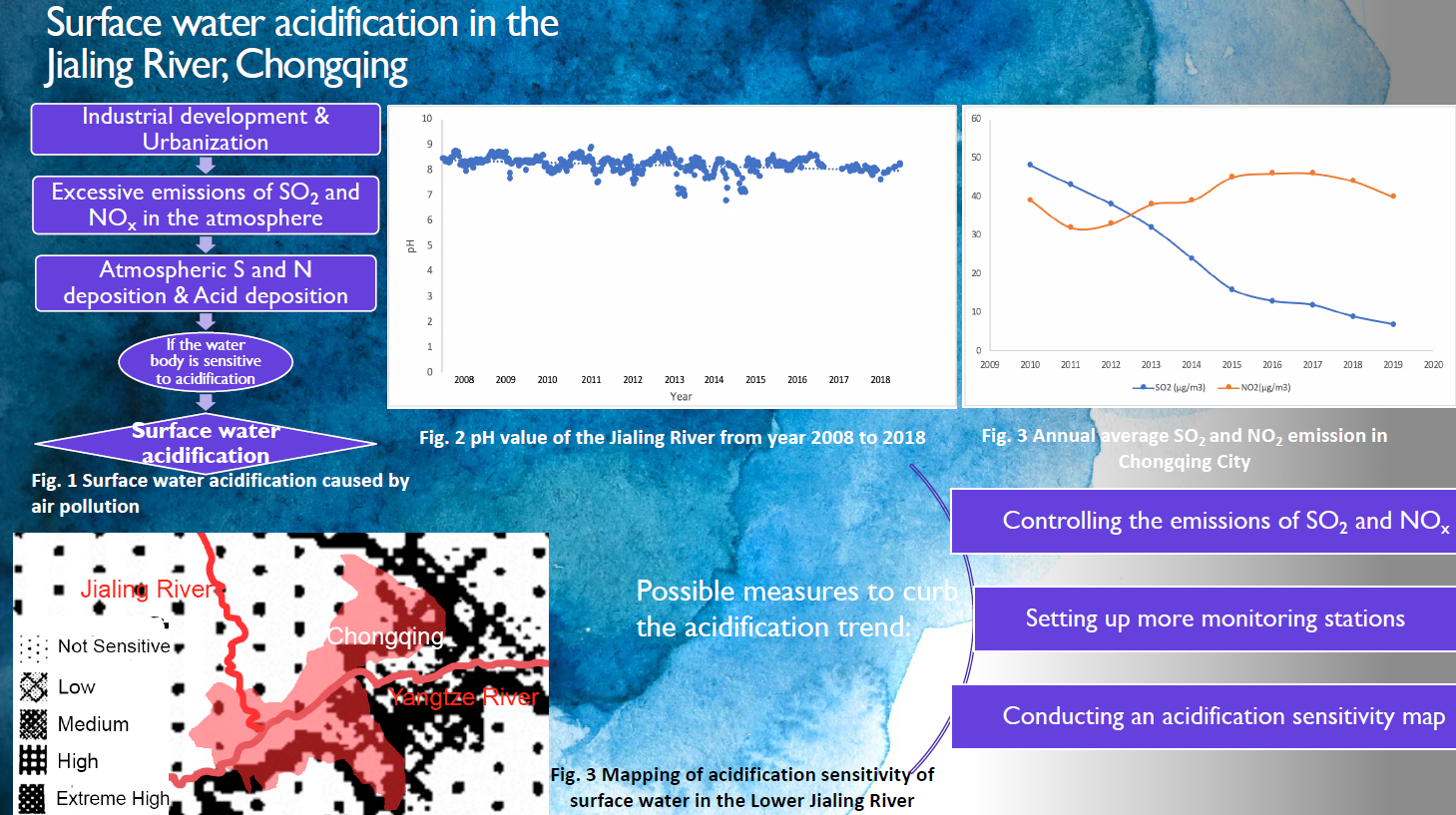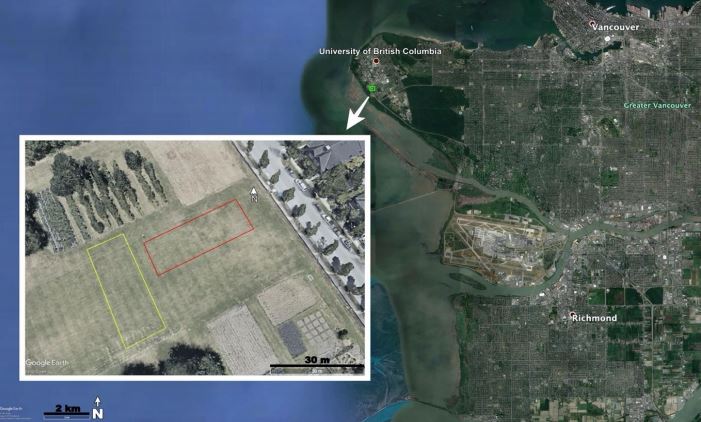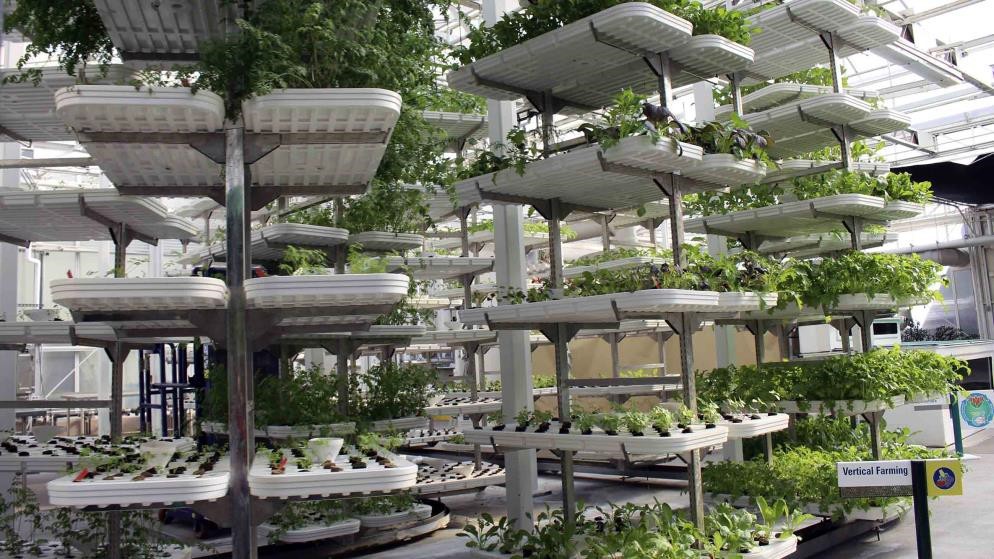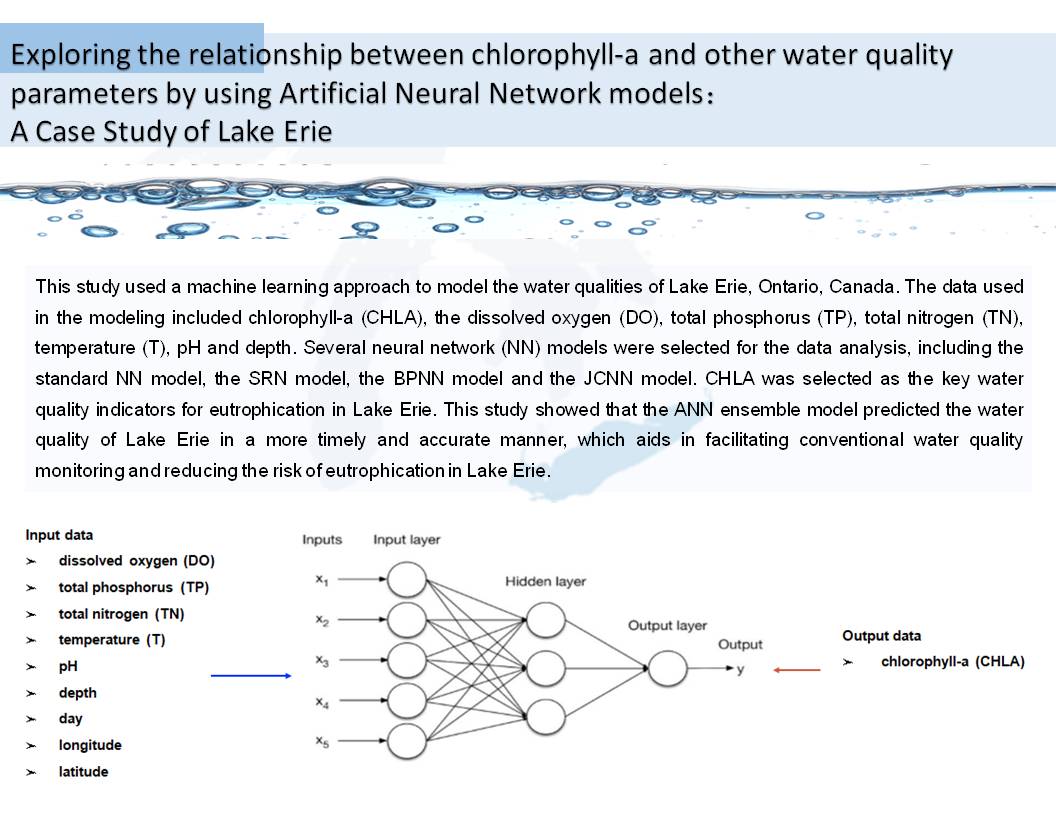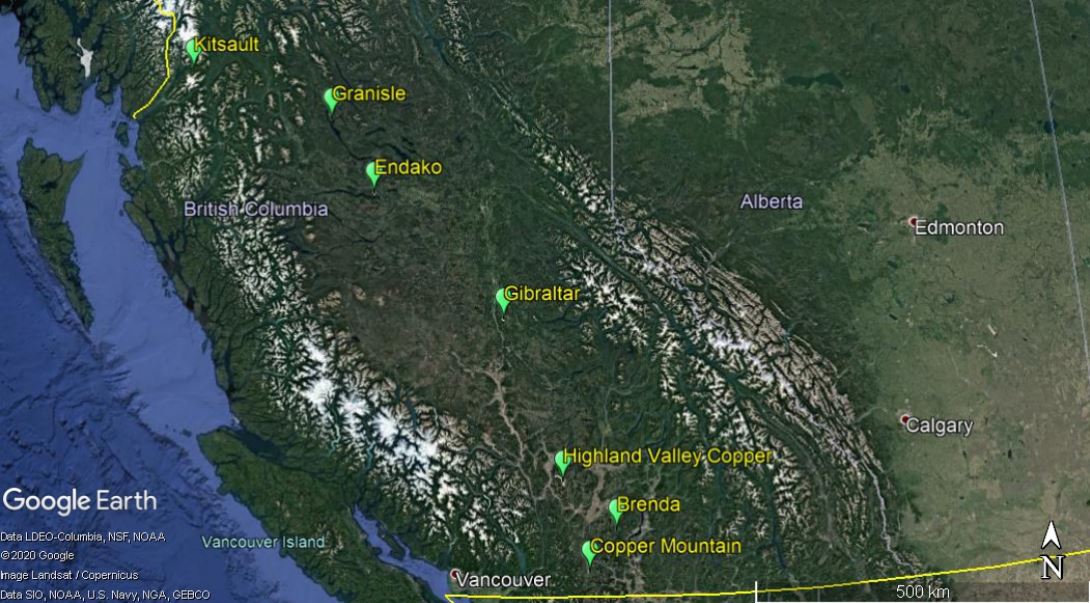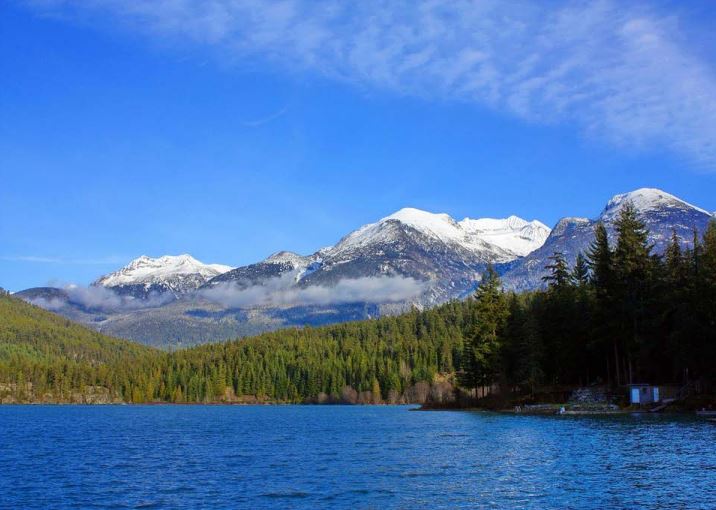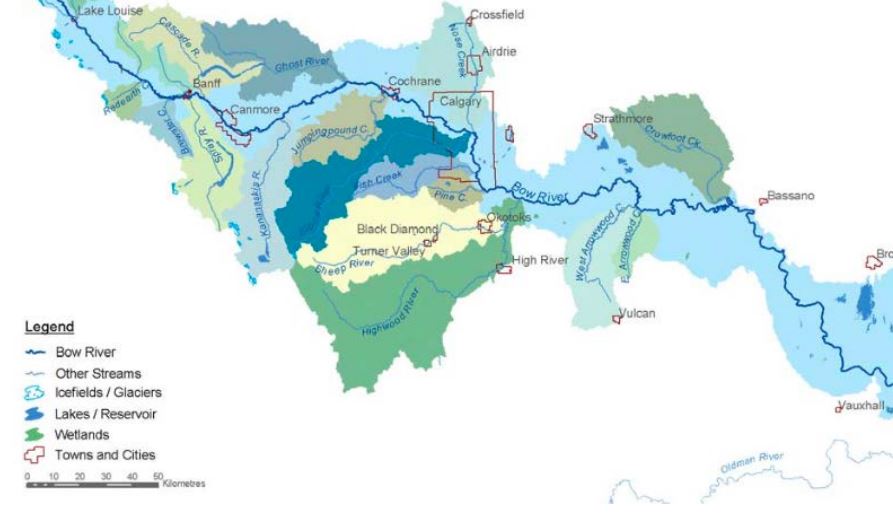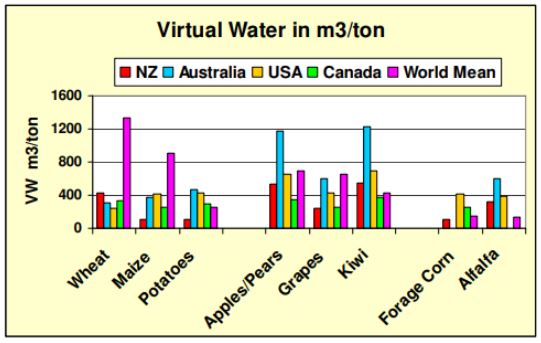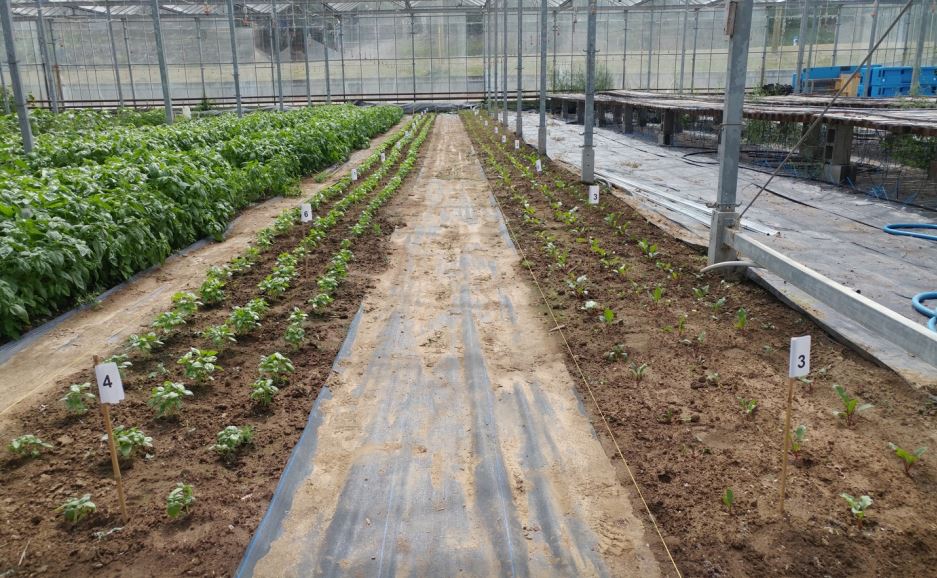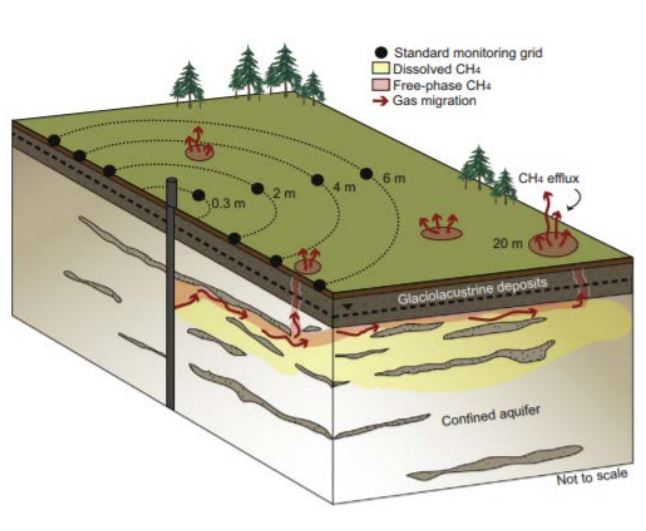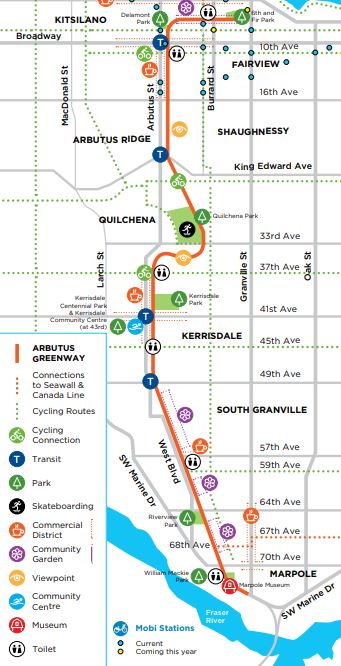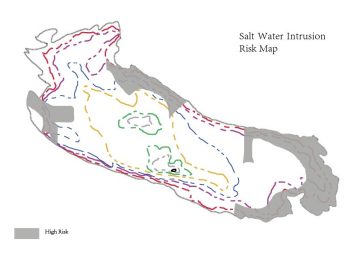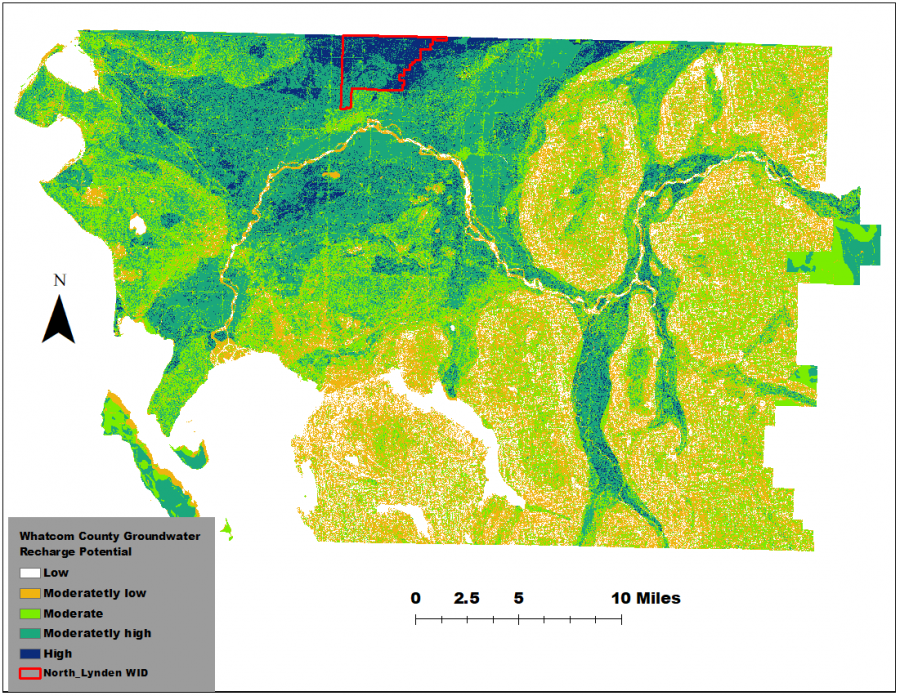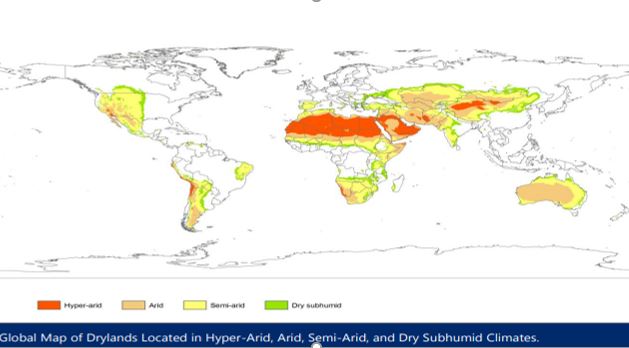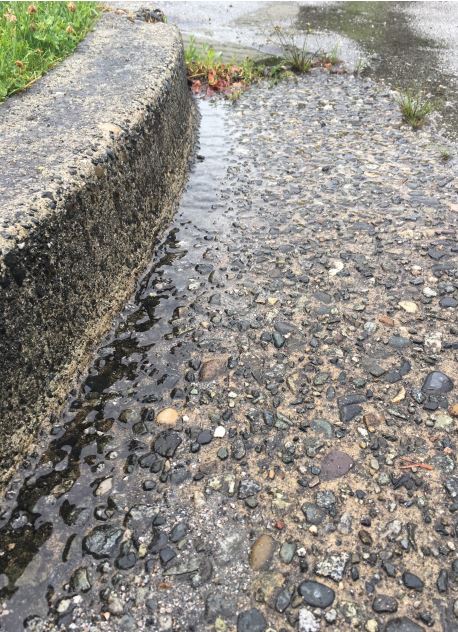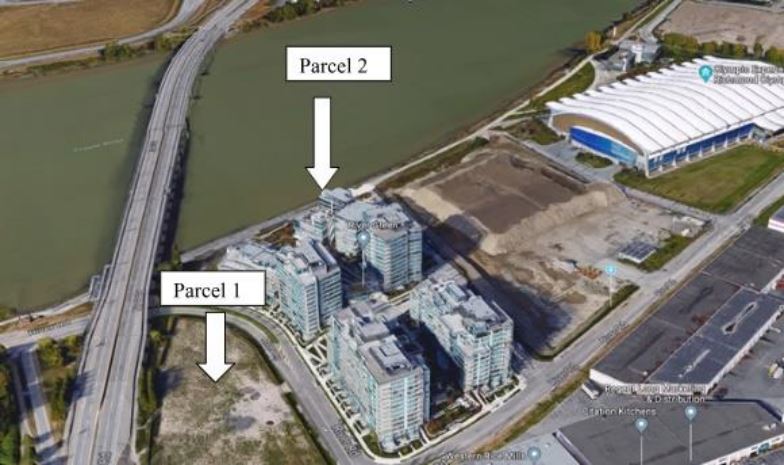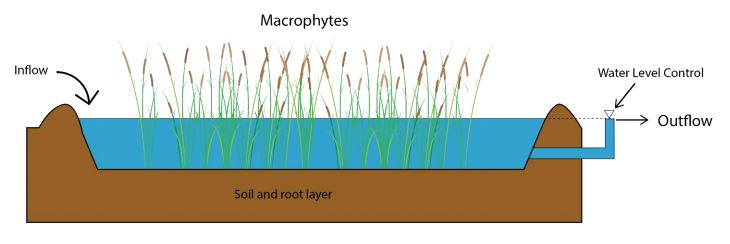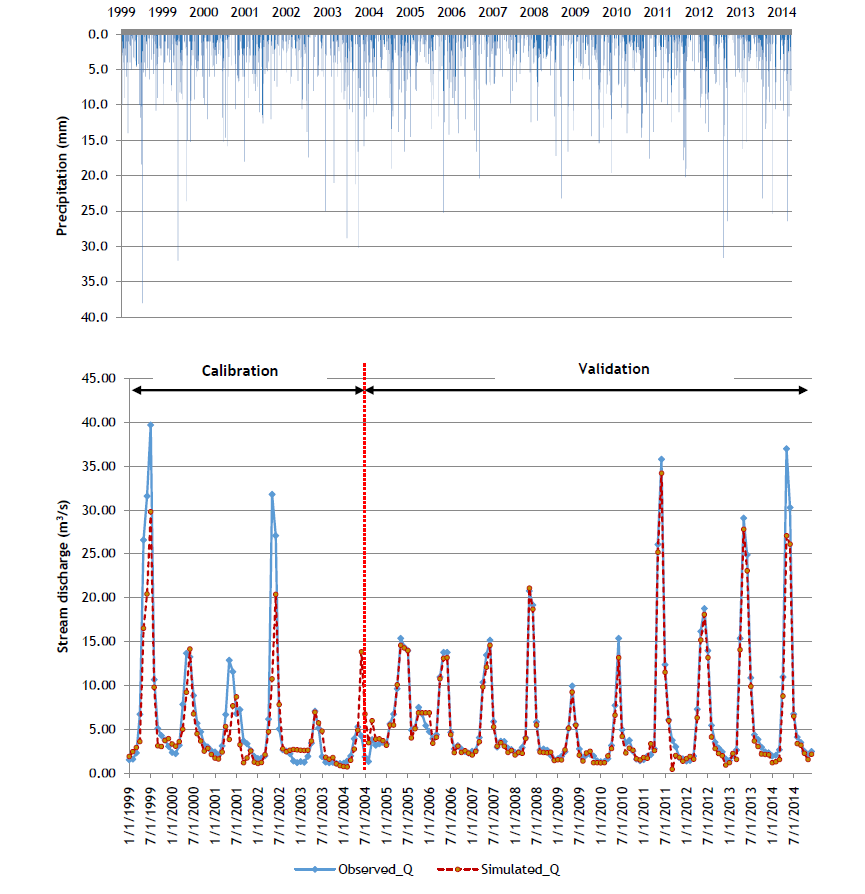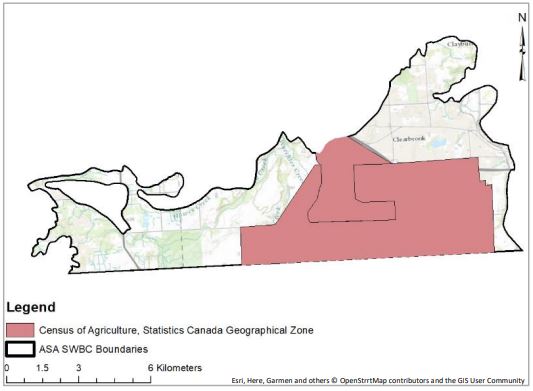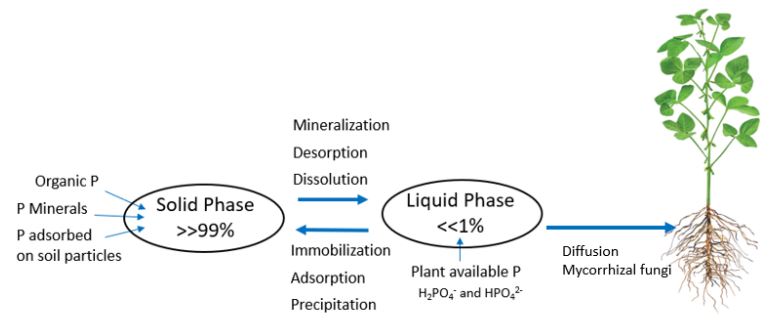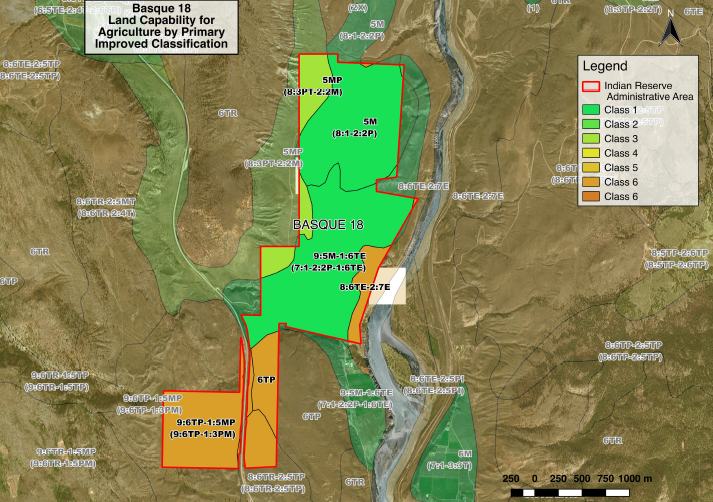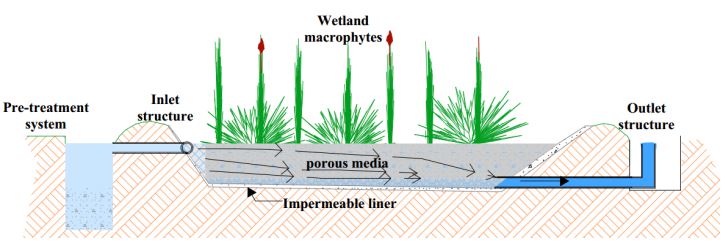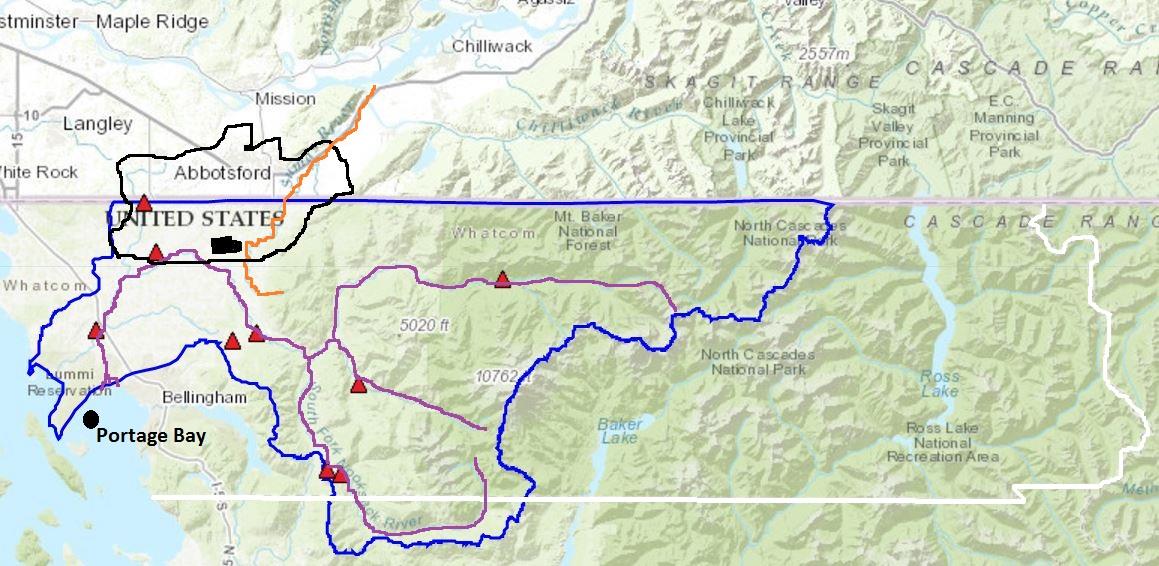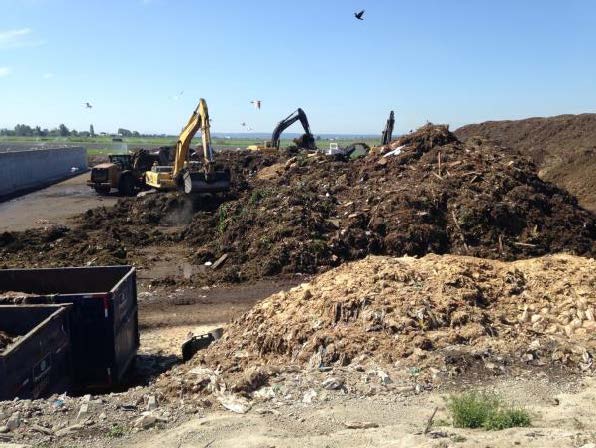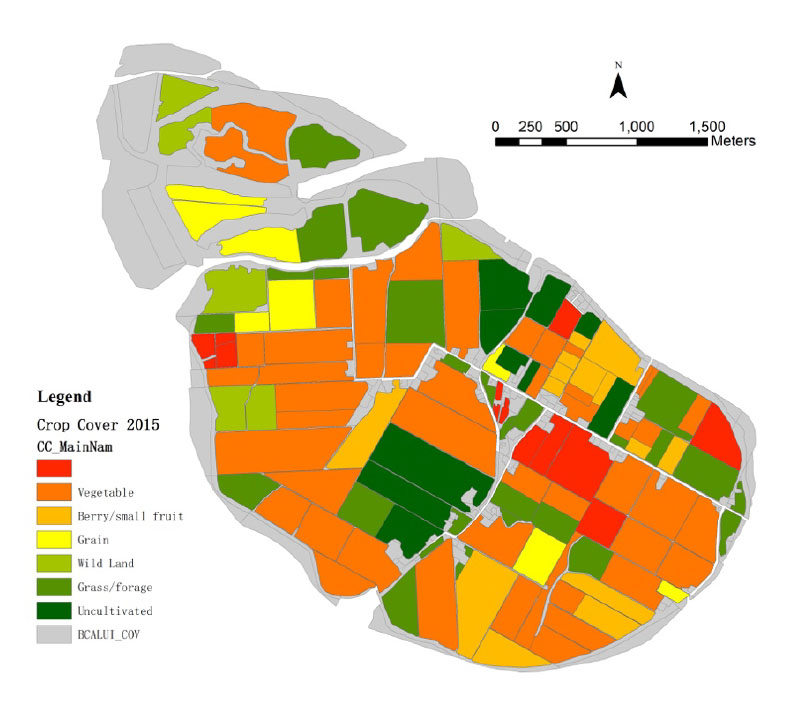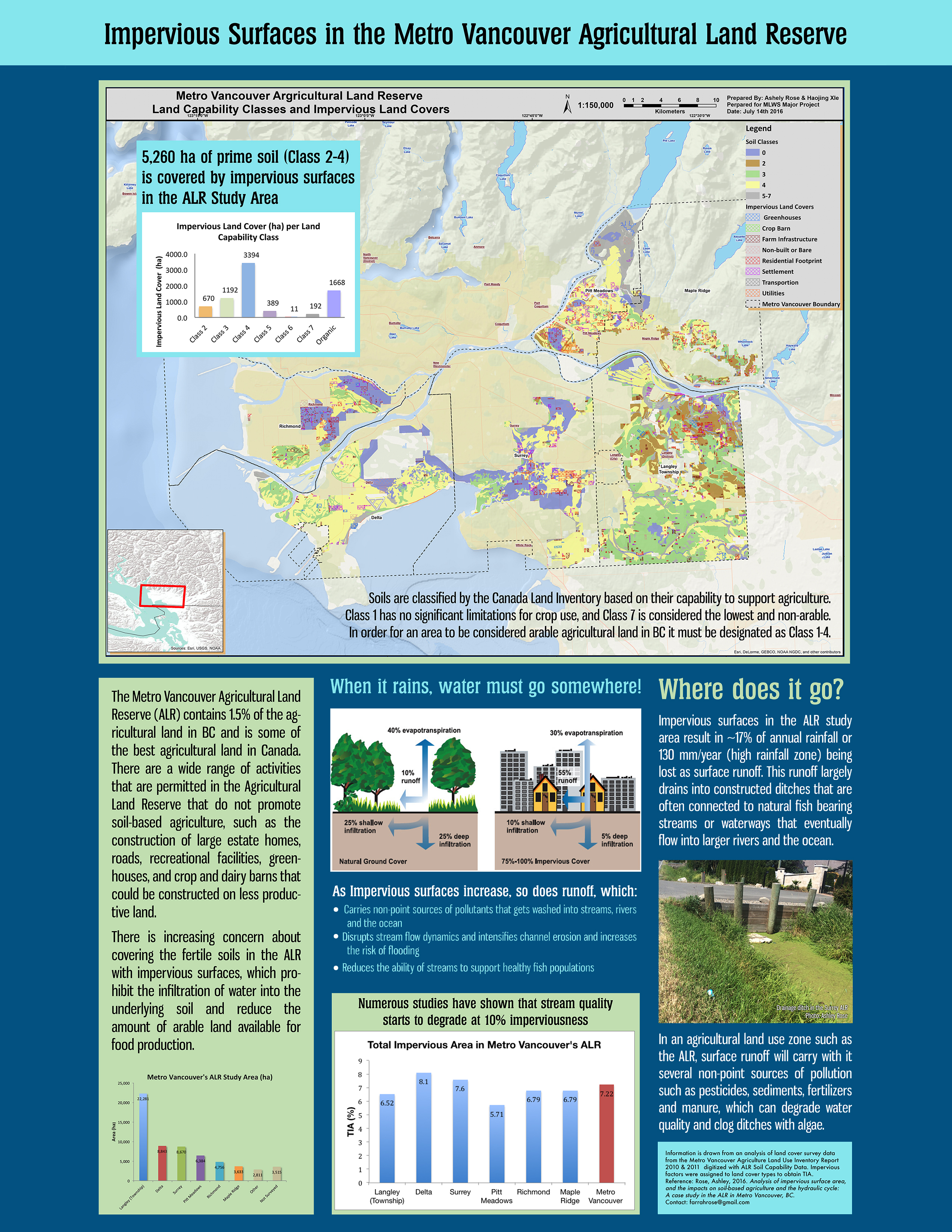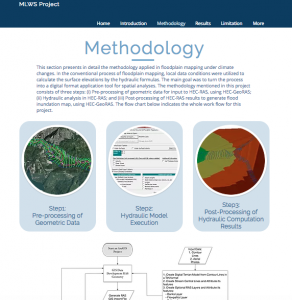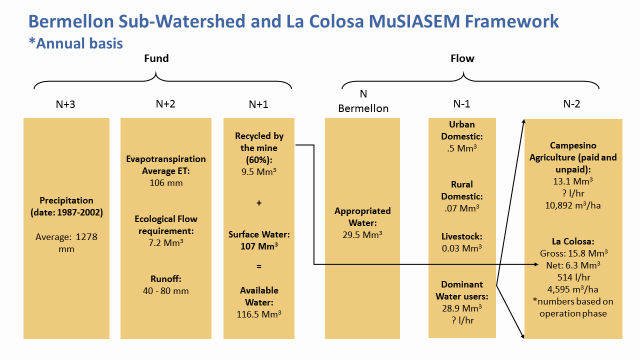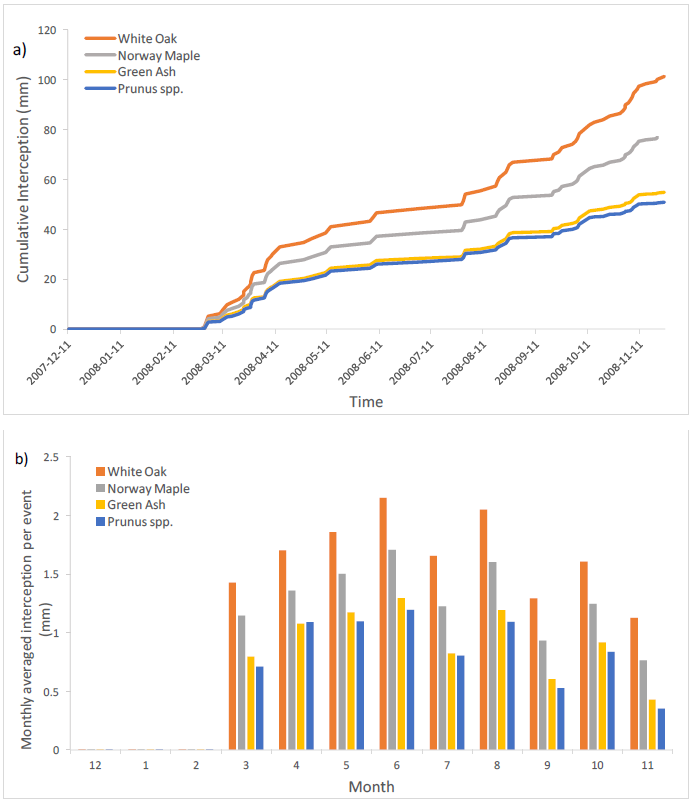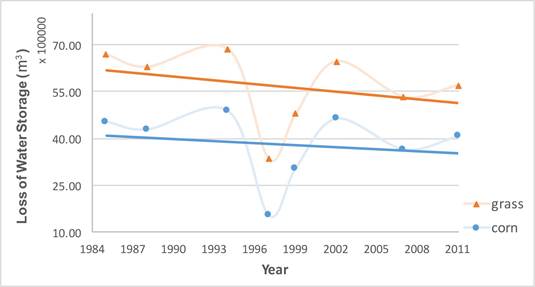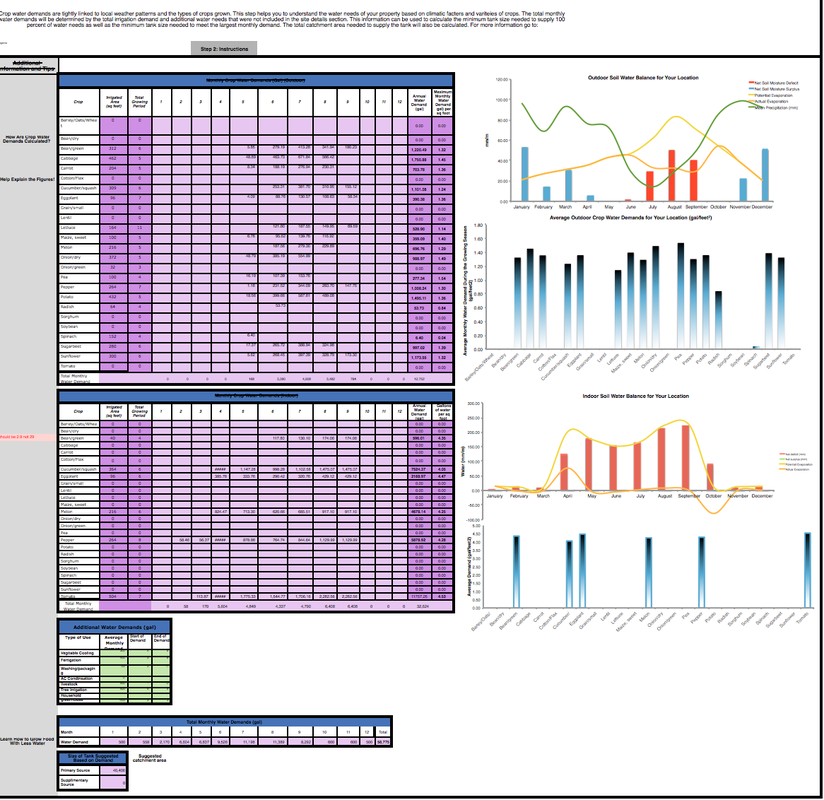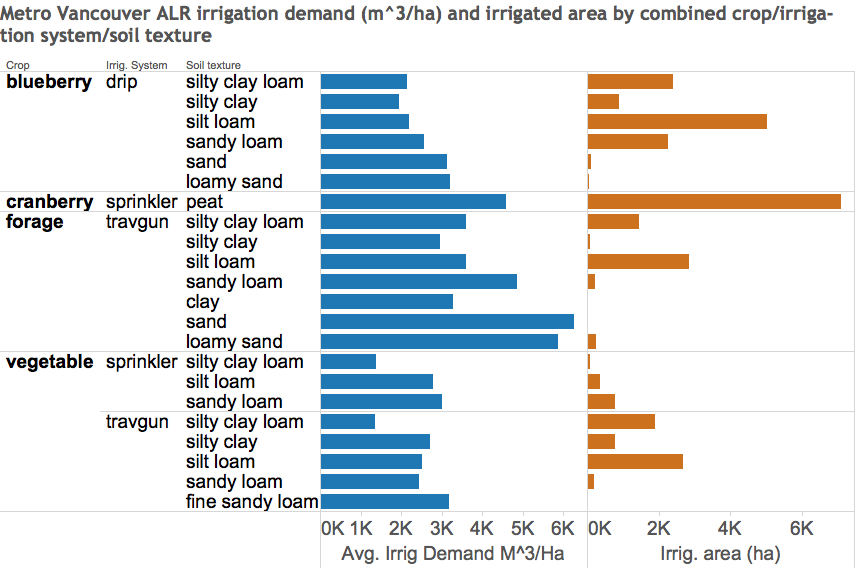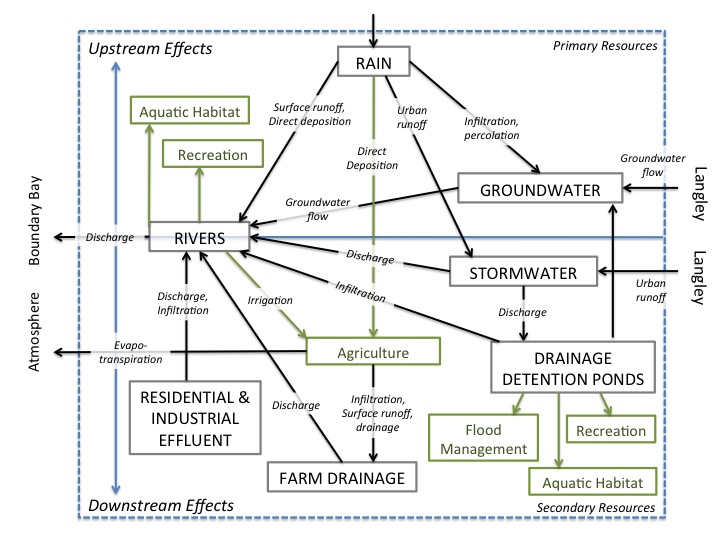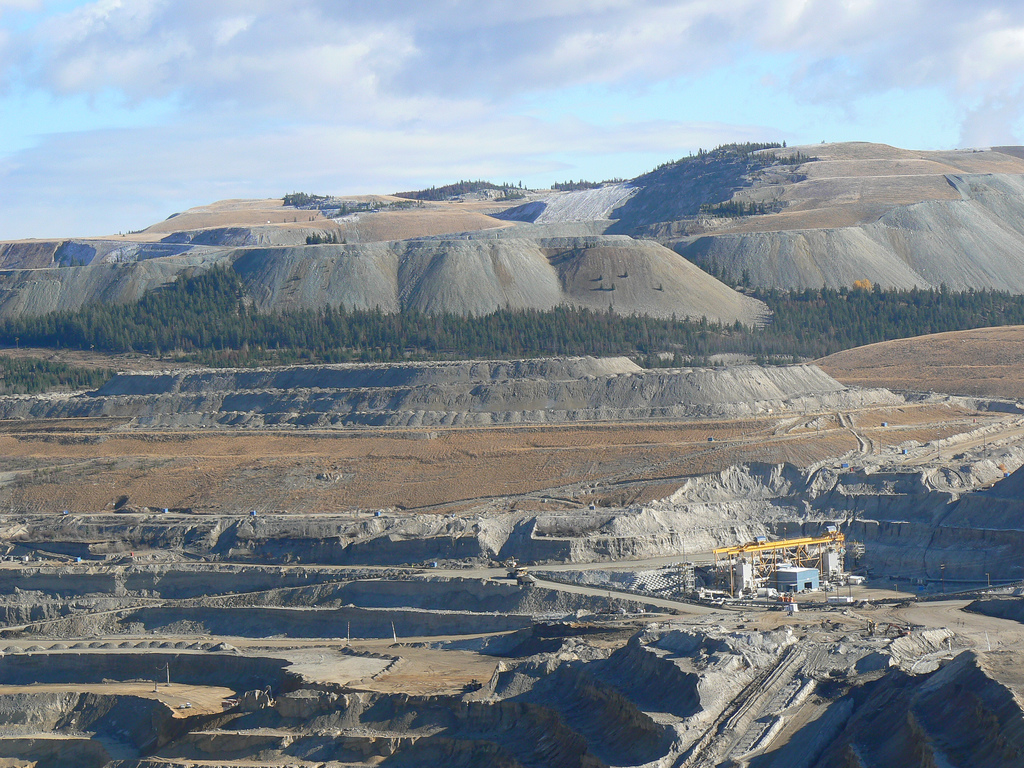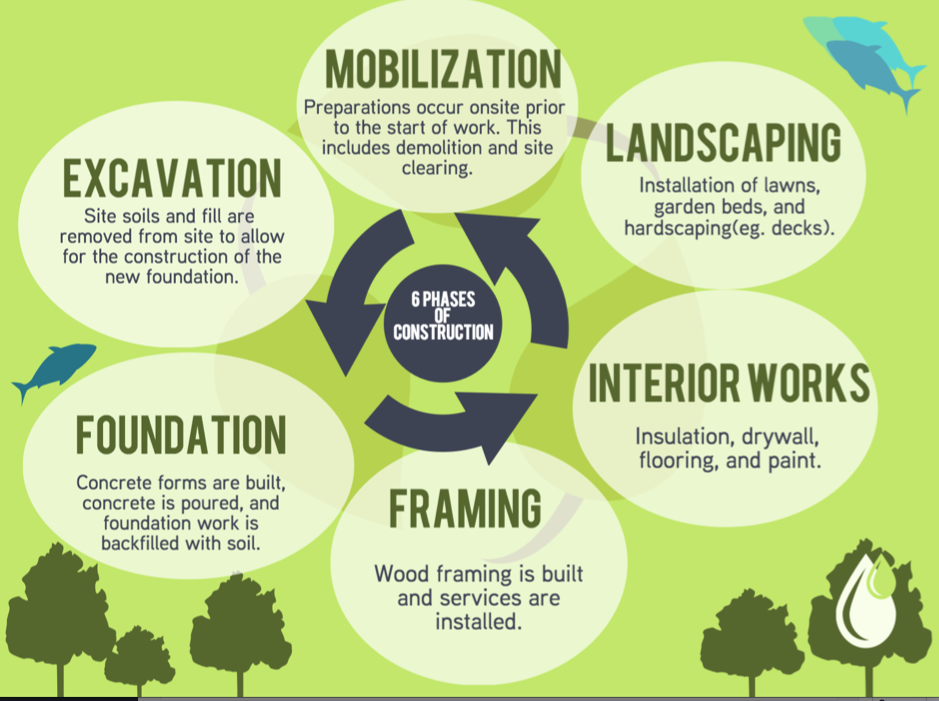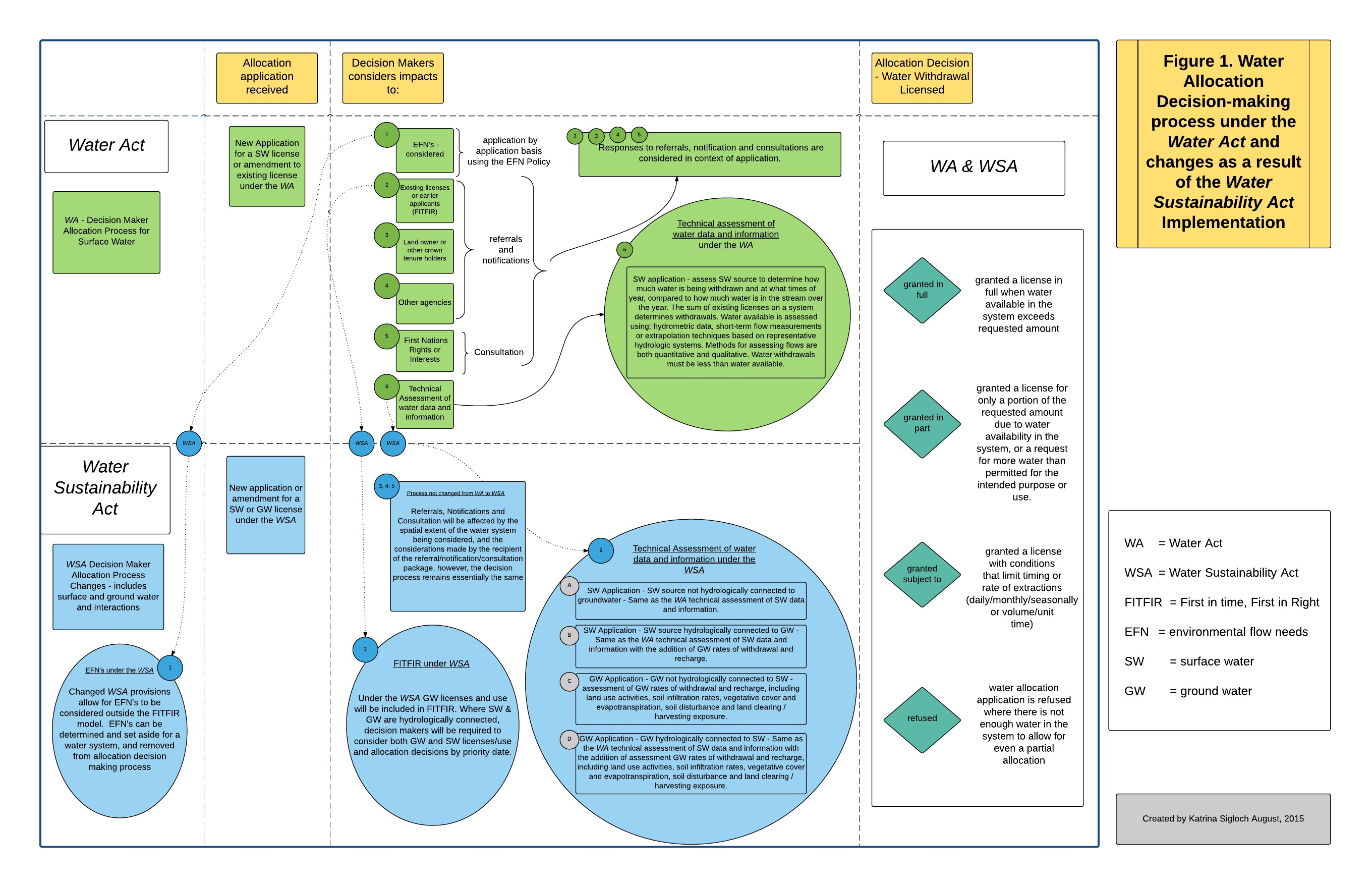Student Projects
Major Projects investigate a wide range of important land and water issues. These diverse projects are a culmination of our students’ varied academic backgrounds, as well as their learning and work experience in the MLWS program. Visit our Major Project page for more details. Explore the categorized student projects through the menu below.

MLWS Major Project Showcase
Your search did not match any student projects.
Balancing Methane and Carbon in Wetlands: Lessons from Natural and Constructed Systems
Zhiqi Xiong, MLWS 2025
As the global climate crisis intensifies, natural wetlands have emerged as potentially crucial allies in carbon management strategies, due to their substantial capacity to sequester and retain organic carbon. This study, therefore, seeks to investigate the ecological mechanisms by which peatlands, mangroves, and salt marshes maintain long-term carbon sinks, with particular focus on hydrological regulation, vegetation structure, and their responses to climate-induced disturbances. Synthesizing empirical and theoretical evidence, these findings suggest that stable water tables, vegetation with high lignin content, and predominantly anoxic soil environments slow decomposition and enhance carbon accumulation. Also significant in this context is that natural wetlands exhibit diverse responses to climate stressors. In temperate and subtropical zones, seasonal water table fluctuations often trigger pulses of dissolved organic carbon (DOC) and aerobic respiration bursts. Rising temperatures can further accelerate microbial decomposition and amplify methane emissions, especially in water-saturated systems. The increasing vulnerability of high-risk wetlands needs further interpretive consideration, as thaw-induced methane surges suggest a reversal of their historic role as carbon sinks. By examining these dynamics across different climate zones and wetland types, the study points to the potential development of a transferable framework for assessing carbon sink resilience under future climate scenarios.
Advancing Water Resilience: Integrating Water Sensitive Urban Design (WSUD) in Vancouver
Yunjiao Yao, MLWS 2025
Vancouver is facing increasingly complex and interrelated water challenges as the combination pressures of climate change and rapid urban development intensify. The City is vulnerable to extreme rainfall, drought, sea level rise, and water pollution, which strain infrastructure, increase flood frequency, and amplify ecological risks. Current reliance on combined sewers further contributes to untreated discharges and degraded waterways. Water Sensitive Urban Design (WSUD) offers a holistic approach to integrate stormwater, wastewater, and water supply into urban planning, shifting from grey infrastructure toward blue-green systems. Global precedents from Portland, Rotterdam, and Copenhagen illustrate how integrating WSUD can reduce combined sewer overflows, mitigate floods, improve water quality, and create multifunctional public spaces. Vancouver’s Rain City Strategy and Healthy Waters Plan articulate strong WSUD visions but remain limited by voluntary targets, fragmented governance, and insufficient enforcement. The city lacks binding bylaws, cohesive water narratives, and funding mechanisms to mainstream WSUD at scale.
Sustainable Sediment Management in the Yellow River: Addressing Water Storage Loss and Long-Term Delta Impacts
Xuekun Pang, MLWS 2025
This report focuses on the ongoing issue of reservoir sedimentation in the Yellow River Basin, especially within the Xiaolangdi Reservoir. The heavy buildup of sediment in this area results from both natural erosion processes on the Loess Plateau and human activities. This accumulation has reduced the reservoir’s ability to store water, lowered the efficiency of hydropower generation, interfered with irrigation and household water supply, and affected the physical shape and ecological health of the Yellow River Delta. By reviewing a wide range of scientific literature and analyzing current sediment management practices, including upstream source control, pre-reservoir interception, and in-reservoir measures, this report assesses the capabilities and limitations of these methods. It becomes clear that many existing approaches require large amounts of water and energy, are difficult to operate, and do not effectively manage the long-term buildup of fine sediment. To address these challenges, the report introduces a new strategy that operates within the reservoir itself. It involves a low-energy air sparging system guided by artificial intelligence (AI) for dynamic control. The system is designed to mimic natural water movement to keep fine sediments from settling, which helps transport them through the turbines and prevents accumulation. This solution takes advantage of unused hydropower and relies on real-time data to adjust operations intelligently.
Mitigation of Seawater Intrusion in the Pearl River Delta
Xinni Yao, MLWS 2025
This project investigated the increasingly severe problem of seawater intrusion in the Pearl River Delta (PRD), one of most populated and economically vital deltaic regions in China. The combined impacts of sea level rise (SLR), decreased freshwater discharge from upstream, sand mining, and intensive urbanization are driving salinization across both urban and rural areas. These changes threaten freshwater supplies for major cities like Zhuhai and Macao, reduce agricultural productivity, and degrade fragile estuarine ecosystems. The report outlined the global trends of SLR and explains why the PRD is especially vulnerable due to its low elevation and high urbanization. Although the PRD has implemented several responses, which includes upstream reservoir coordination, salinity monitoring networks, and major water transfer infrastructure, these efforts remain limited in scale and predominantly reactive. Through a comparative case study approach, successful adaptation measures from the Netherlands (Delta Works) and Vietnam (Mekong Delta) were assessed for their relevance and potential adaptation in the PRD context. The study proposed to have a trial on storm surge barriers that adapts engineering controls to selected areas, improved cross-jurisdictional governance, and agricultural adaptation through integrated aquaculture systems.
Cultivation for Conservation: Assessing Kelp’s Carbon Sequestration Potential and Farm Design Options for the Kwiakah First Nation’s Aquaculture Initiative
Talia Hoffman, MLWS 2025
This report provides a focused literature review on the ecological, carbon sequestration, and design considerations surrounding kelp aquaculture in British Columbia, tailored to support the Kwiakah Nation’s goal of developing non-extractive ocean-based economic opportunities. The primary focus is on bull kelp (Nereocystis luetkeana), an ecologically foundational species in BC’s waters that forms seasonal underwater forests supporting biodiversity, water quality, and carbon cycling. Bull kelp exhibits rapid growth and significant CO₂ uptake during its short life cycle, making it a candidate for nature-based climate solutions. However, much of this carbon is quickly recycled back into the environment through grazing and microbial breakdown. Recent research suggests that sediment burial beneath kelp farms may offer a more lasting sequestration pathway. This has prompted growing interest in kelp farming as a “blue carbon” strategy, though real-world sequestration rates vary widely, and many current large-scale farms have not been designed to maximize carbon storage. This review integrates findings across various sources to identify best practices that could inform a culturally grounded and ecologically cautious approach to kelp aquaculture. Specific recommendations include: selecting sites that avoid sensitive habitats, integrating kelp with species like shellfish through multi-trophic systems and designing farms that preserve ecosystem function and minimize disturbance to the ocean floor.
Microbial Dynamics and Carbon Sequestration in the Regeneration of the Brazilian Amazon
Siyuan Yin, MLWS 2025
The Brazilian Amazon rainforest, representing 40% of global tropical forests and absorbing 25% of rainforest CO2, faces unprecedented deforestation pressure with 20% of original forest lost since the 1970s. This critical C sinks capacity depends on soil microbial communities, particularly arbuscular mycorrhizal fungi (AMF), which facilitates the carbon sequestration processes through complex belowground processes involving C, N and P cycling. This report examined the differential impacts of two restoration strategies on soil microbial dynamics and long-term carbon storage in the reforestation of the Brazilian Amazon using native Bertholletia excelsa and afforestation with fast-growing Eucalyptus spp. Through qualitative synthesis of peer-reviewed literature published from 2000 onward, the research analyzed how C, N, and P availability and relevant ratios influence AMF activity and carbon sequestration efficiency under two restoration approaches. By comparing the case of the Dutch and the US levee setback programs, this paper further reveals that the evaluation paradigm not only influences the evaluation results but also reflects the underlying governance logic. The Dutch model combines enhanced CBA and participatory MCDA to form a synergistic governance framework, while the US is still heavily constrained by the path dependency of engineering and CBA.
Reframing Valuation Paradigms for Levee-Setback Projects: A Critical Synthesis of CBA, ESV, and MCDA in Floodplain NbS Evaluation
Ruoxuan Wang, MLWS 2025
Nature-based solutions (NbS) are now widespread attention in the field of flood management due to their synergistic ecological, social and economic benefits. However, the current mainstream assessment methodology is still centered on traditional cost-benefit analysis (CBA), which overemphasizes the monetizable benefits of flood control and systematically ignores non-market benefits such as biodiversity, recreational experiences and cultural values. This “misalignment” has led to a serious underestimation of the true value of NbS. This study systematically reviewed the evaluation literature of 59 NbS flood management projects between 2015 and 2025, and identified three new dominant valuation paradigms: Enhanced CBA (incorporating ecosystem service value estimation), Multi-Criteria Decision Analysis (MCDA), and Foundational Assessments. The study found that from 2023 onwards, more than 80% of the literature has shifted to convergent or non-monetized valuation approaches, marking the gradual disintegration of the single-indicator valuation paradigm. The study found that from 2023 onwards, more than 80% of the literature has shifted to convergent or non-monetized valuation approaches, marking the gradual disintegration of the single-indicator valuation paradigm.
Policy Framework for Combating Desertification and Oasis Development in the Taklamakan Desert
Rushan Hua, MLWS 2025
This study examined the underlying reasons why large-scale afforestation projects in the Taklamakan Desert repeatedly failed to meet their intended ecological and policy objectives. The Taklamakan Desert, as one of the driest environments on Earth, experiencing extreme wind activity, minimal rainfall, and fragile soil structures. Since the 1990s, State-led programs established hundreds of kilometers of shelterbelts and sand stabilization zones. However, long-term monitoring data indicated persistently high tree mortality rates, unsustainable irrigation practices, and ongoing soil degradation. By drawing on policy reviews, field data, and documented outcomes from previous restoration cycles, this study identified three interrelated structural barriers. First, afforestation projects often exceeded the ecological carrying capacities of local environments. Second, program success was typically measured by satellite-based vegetation cover rather than by plant survival or ecosystem function. Third, institutional arrangements limited local adaptability; in Xinjiang, most decisions were made by upper-level authorities, leaving local governments with little flexibility to adjust plans in response to on-the-ground conditions.
Gentle Remediation Options (GRO) for Brownfield Sites in Canada: Case Studies, Comparative Insights, and Policy Pathways
Rainier Macalalag, MLWS 2025
Brownfields are properties where past uses left real or perceived contamination that constrains reuse and investment. They are common across Canadian cities and carry social, economic, and ecological costs. This paper evaluates whether gentle remediation options that use plants, microbes, fungi, and supportive soil amendments can deliver protective cleanup while restoring soil function and enabling redevelopment. The approach is a systematic literature review of peer reviewed studies and credible government and NGO reports, organized by contaminant class and Canadian conditions such as short growing seasons and urban density. Three case studies (Vancouver’s Southeast False Creek, an industrial tract in Montreal, and smelter affected lands in Sudbury) ground the analysis. A policy scan assesses provincial guidance, evidence standards, and approval pathways. Performance is evaluated against risk reduction, measurable contaminant change, soil and vegetation recovery, life cycle costs, and social outcomes. Limitations include uneven data across provinces, variable monitoring endpoints, few long-term field results for some contaminants, and reliance on grey literature where Canadian studies are sparse. Case study findings may not transfer to dissimilar sites. The review finds that gentle remediation options are technically credible and competitive on life cycle terms, especially for diffuse metals and lighter petroleum fractions. They are most effective with clear risk-based objectives, adaptive monitoring, and procurement and approvals that value soil function and community outcomes. With these shifts, brownfields can move from liabilities to renewed urban assets.
Restoring Groundwater Quality in the Niger Delta: Evaluating Pollution Sources and Exploring Global Best Practices
Ola Kalu, MLWS 2025
Groundwater is an essential resource for human health, agriculture, and sustainable development, yet it is increasingly threatened by contamination particularly in regions affected by industrial activities and weak environmental regulation. In Nigeria’s Niger Delta, prolonged oil exploitation and inadequate oversight have severely degraded water quality. The community of Umuakpara illustrates this crisis, where residents rely on groundwater that is often unsafe for human use. This study assessed the extent and causes of groundwater contamination in Umuakpara, evaluated its environmental and public health impacts, identified institutional and regulatory gaps, and explored international strategies for effective groundwater management. A qualitative, desk-based approach was used to synthesize findings from scientific literature, government reports, and global case studies. Results reveal the presence of hazardous pollutants in groundwater, including petroleum hydrocarbons and heavy metals, at levels far above acceptable limits. These contaminants pose significant health risks such as cancer, organ damage, and reproductive issues. The situation is further intensified by socio-economic vulnerabilities that limit community capacity to respond.
Holding Water: Climate Adaptation and the Future of Metro Vancouver’s Water Supply
Malli Granby, MLWS 2025
Metro Vancouver (MV) is widely recognized for the safety and quality of its drinking water. Sourced from alpine rainwater and snowmelt, the region’s water is protected through a multi-barrier system that includes closed watersheds, extensive filtration, and rigorous quality testing. This system supplies continuous, affordable drinking water to over three million residents and businesses across the Lower Mainland. As of 2024, MV’s population has surpassed 3 million and is projected to grow by approximately 35,000 people annually. At the same time, the region is experiencing the impacts of climate change, including warmer and wetter winters, longer and drier summers, and more frequent extreme weather events. These changes are altering the timing, reliability, and quality of the region’s water supply. Combined with rapid population growth, these shifts present a serious challenge to the long-term sustainability and resilience of MV’s drinking water system.
Comparative Analysis of Groundwater Recharge Strategies in Beijing and Los Angeles: A Decision-Making Matrix Framework
Lei Wang, MLWS 2025
Groundwater depletion has become a significant threat to urban sustainability, prompting a global shift toward managed aquifer recharge (MAR) as a resilience strategy (Ross & Hasnain, 2018). However, the success of MAR projects depends not only on technical design but also on governance capacity, financial architecture, institutional coherence, and public legitimacy (Gober & Wheater, 2014). This study compares groundwater recharge governance in Beijing and Los Angeles—two large, water-stressed cities with distinct political systems and institutional cultures—to explore how urban governance models influence the planning, implementation, and long-term viability of MAR.
Evaluating the Sustainable Potential of Algal Fertilizers: Environmental Benefits, Commercial Challenges, and Policy Perspectives
Ke Xu, MLWS 2025
This systematic literature review assessed the sustainability potential of algal fertilizers as alternatives to conventional synthetic fertilizers, examining their environmental benefits, economic viability, and regulatory challenges across global agricultural systems. As global food demand is projected to rise by over 60% by 2050, while arable land expansion remains negligible, sustainable fertilizer solutions become critical for maintaining agricultural productivity while minimizing environmental harm. In addition, algal fertilizers demonstrate exceptional environmental sustainability across multiple dimensions. Carbon management is substantial, with microalgae achieving CO₂ capture efficiency ranging from 40% to 93.7% while establishing long-term carbon storage in agricultural systems through enhanced soil organic carbon accumulation. Biostimulant properties are comprehensive, including production of diverse phytohormones (auxins, gibberellins, cytokinins), bioactive metabolites, and growth-promoting compounds that enhance nutrient use efficiency and plant vigor. Agricultural productivity benefits include nearly half reduction in synthetic nitrogen fertilizer requirements while maintaining comparable crop yields, particularly through cyanobacterial nitrogen fixation capabilities. Soil health enhancement is multifaceted, with algal applications improving soil structure, porosity, and water retention, while increasing organic matter content and promoting beneficial microbial diversity.
Biochar for Mine Reclamation in Ghana: A Soil Remediation Perspective
Joseph Tabi, MLWS 2025
Ghana’s mining sector, dominated by gold extraction, contributes significantly to economic growth but has left extensive environmental damage. Mining has degraded soils, stripped vegetation, reduced fertility, and introduced contaminants such as arsenic and mercury. Current reclamation practices—primarily revegetation supported by compost and manure—offer only partial solutions. While they stabilize landscapes and control erosion, they often fail to restore long-term fertility, microbial activity, or address heavy metal contamination. This project critically evaluates the potential of biochar, a carbon-rich material produced through biomass pyrolysis, as a soil amendment for mine reclamation in Ghana. Drawing on a narrative literature review of global and Ghana-specific studies, the research examines biochar’s ability to buffer soil pH, improve nutrient retention, immobilize toxic metals, enhance microbial recovery, and strengthen soil structure. Compared to conventional amendments, biochar provides greater persistence and multifunctional benefits, making it especially relevant in Ghana’s highly leached, nutrient-poor post-mining soils.
Integrated Watershed Assessment for the P.E.A.C.E. Animal Sanctuary in Mission, BC: A Case Study
Victor Baez, MLWS 2025
As sanctuary numbers continue to grow along with the current animal agriculture operations, the ecosystem is open to additional impacts. Plus, climate change, forestry, and mining influence many communities in British Columbia. The owners of the PEACE Rescue and Farm Sanctuary located in Mission, British Columbia and similar sanctuaries across North America do not often have the resources to deal with the results of those environmental factors. Currently, there are not many water resource management studies focused on animal sanctuaries. As these sanctuaries are often outside of urban environments, pollutants from agriculture, forestry, and other intensive industries are a concern. Therefore, undertaking an integrated watershed management for the sanctuary and the Hatzic Valley watershed is both important and valuable for this community. The integrated watershed management analysis on the Hatzic Valley watershed included climate, hydrometric, and water quality data. The BC Agriculture Water Calculator added an additional element to the analysis of the operations at the PEACE Rescue and Farm Sanctuary. Additionally, incorporating existing water management guides and peer-reviewed literature to provide recommendations for small farm owners, sanctuary owners, and local policy makers were the primary objectives of this study.
Water Quality Under Threat: Evaluating Watershed-Scale Risks in the Jubba River at Bardere, Somalia
Ikram Barkadle, MLWS 2025
This study assesses the risks to water quality and access in Bardere, Somalia, through a watershed-scale lens using secondary data and informal community insights. Findings reveal a heavy reliance on untreated surface water from the Jubba River, the absence of reliable groundwater alternatives, and widespread challenges related to seasonal flooding, drought, and institutional gaps. The most vulnerable groups, such as displaced persons, low-income families, and women, face disproportionate barriers to safe water. Community members expressed strong awareness of health risks and described lived challenges such as unreliable piped supplies, dependence on untreated river water, and illness after floods. They also proposed practical improvements, including expanding chlorine treatment, repairing damaged infrastructure, and promoting better hygiene and water storage practices. Based on this evidence, the study recommends a combination of short-term and long-term actions, including household chlorination, in-situ treatment systems, community-led water monitoring, and expansion of piped infrastructure. These recommendations aim to protect public health, reduce inequalities, and build locally grounded resilience in the face of growing environmental stress.
Agricultural Extension: Let British Columbia Farmers Decide
Favour Ofure Idiagbonya, MLWS 2025
Agricultural extension services play a crucial role in advancing rural development, serving as a bridge between scientific research and practical farming practices in British Columbia (BC). Extension services in BC have employed top-down approaches, where information dissemination occurs primarily through regional experts to farmers, often with limited scope for local adaptation or farmer engagement. While such models have facilitated the introduction of new technologies, they frequently result in low adoption rates and an inability to address localized issues effectively. In recent years, there has been a notable shift towards participatory and bottom-up extension models globally. These approaches emphasize collaboration, shared decision-making, and active farmer participation in identifying their needs, designing interventions, and co-creating solutions. This approach has demonstrated considerable success in promoting sustainable agricultural practices, enhancing climate resilience, and fostering innovation through a combination of scientific and indigenous knowledge.
Gravel Mining, Governance, and the Future of Flood Management in the Lower Fraser River
Erin Stakiw, MLWS 2025
In British Columbia’s Lower Fraser River, flood mitigation has long relied on sediment management practices—most notably in-stream gravel mining—to maintain channel capacity and reduce flood risk. These interventions, however, occur within a complex and often fragmented regulatory environment, raising critical questions about their effectiveness, ecological consequences, and alignment with contemporary science. In addition, climate change and intensified development have escalated flood vulnerability across the region, amplifying the need for sustainable, adaptive solutions. This report focused on the gravel reach between Mission and Hope—a segment of the Lower Fraser where sediment deposition is naturally high and gravel removal is most frequent. While gravel mining is routinely justified as a flood protection strategy, this report found limited empirical evidence supporting its long-term efficacy, particularly in comparison to emerging alternatives. The continued reliance on gravel extraction is further complicated by inconsistent permitting practices, limited oversight, and ecological impacts—including streambed dewatering, habitat fragmentation, and salmon mortality
Assessing the Impact of Rising Temperature on Blueberry Production: Evaluating the Adaptability of Mitigation and Adaptation Strategies in British Columbia, Canada
Betty Cao, MLWS 2025
British Columbia is a leading producer of highbush blueberries in Canada, contributing significantly to both the domestic agricultural economy and the international fruit market. However, the effects of climate change, most notably rising temperatures, pose increasing threats to the sustainability, productivity, and quality of blueberry cultivation in the province. This report examined the physiological, ecological, and economic impacts of extreme heat on blueberry production and evaluated a range of mitigation and adaptation strategies, with a focus on practical implementation for BC growers. Highbush blueberries are especially sensitive to heat stress throughout their development stages. From dormancy and bud break in late winter to flowering, fruit set, and ripening in the summer, elevated temperatures can disrupt plant physiology and negatively affect fruit yield and quality. Specific impacts include premature de-acclimation, reduced pollen viability, shortened pollination windows, softening and shriveling of berries, and increased susceptibility to pests and diseases. Late-season heat further complicates farm operations by compressing harvest windows and increasing post-harvest decay risk
Balancing Amendments for Sustainable Soil Fertility Management: A Review of Chemical Fertilizer, Compost, Manure, and Biochar as Amendments for Soil Fertility Improvement by Smallholder Farmers in Ghana
Alfred Somiah , MLWS 2025
In Ghana, continuous farming by smallholder resource-poor farmers has resulted in soil fertility decline as farmers are unable to replenish nutrients lost through continuous cultivation, partly because farmers’ efforts to enhance soil fertility with chemical fertilizers, manure, compost, and biochar have been faced with multifaceted challenges that extend beyond agronomy, thus making it difficult to identify the most sustainable and reliable soil amendment. This review was undertaken to assess chemical fertilizers, manure, compost, and biochar as inputs for soil fertility improvement to provide a balanced understanding of their potential in addressing soil fertility decline. The review focused on smallholder farmers in Ghana as they dominate the Ghanaian agriculture sector. These farmers employ traditional farming systems such as mixed cropping and intercropping for staple crops, while monocropping is often practiced for cash crops. The majority of these farms are rainfed, with less than 30% of cultivable land under irrigation. Common crops include cassava, yam, maize, rice, cocoa, and oil palm, among others, cultivated across diverse agro-ecological zones such as the Guinea Savannah, Semi-Deciduous Forest, and Coastal Savannah zones
Impacts of Climate Change and Forest Harvesting on the North American Boreal Forest
Aaron Wee, MLWS 2025
The North American boreal forest is one of the world’s largest remaining intact forest ecosystems, providing essential carbon storage, critical wildlife habitat, and cultural and subsistence value for hundreds of Indigenous communities. Despite its global importance, the boreal forest is threatened by forest harvesting practices, as well as climate change and its long term effects. Species such as the boreal caribou have been pushed to threatened status due to extensive habitat fragmentation, weak provincial protections, and inadequate enforcement of federal recovery strategies. Furthermore, the loss of boreal peatlands and caribou habitat undermines food security, cultural identity, and intergenerational knowledge sharing for many Indigenous communities that rely on these ecosystems. This project examines the impacts of climate change and forest harvesting on the North American boreal forest. For instance, how current forestry practices contribute to habitat loss and carbon emissions. The project also evaluates the effectiveness of provincial and federal conservation efforts, highlighting examples such as British Columbia’s more collaborative approach. The paper concludes with recommendations to strengthen habitat protections, improve transparency, integrate Indigenous co-management, and modernize harvesting methods to balance economic viability with long term ecological resilience. Enhanced carbon accounting and expanded research on sustainable practices are identified as key steps to align boreal forest management with global climate goals and biodiversity commitments.
Tracing Micro(nano)plastics from Soil to Crop: The Evidence of Plastic Pollution in Agriculture
Emily MacMillan, MLWS 2024
Leaf Area Index as an Indicator of Successful Revegetation of Disturbed Mining Sites
Liulin Song, MLWS 2024
Comparative Analysis of Carbon Reduction Policies: Cap-And-Trade in Shanghai Vs. Carbon Tax in British Columbia
Zixiao Zhang, MLWS 2024
A Review of Potential Benefits and Barriers to Urban Green Infrastructure
Mengdi Ji, MLWS 2024
Urban Water Scarcity: The Potential of Greywater Reuse
Xiaojing (Angela) Jiang, MLWS 2024
Integrating Sustainable Practices in Lithium Mining: Innovations, Environmental Stewardship, Effects for Green Energy, And the Challenges of Reducing Lithium Wastes in Alignment with Unsustainable Development Goals
Yaxi Tan, MLWS 2024
Adapting to Climate Change: A Comparative Analysis of Prescribed Burning and Mechanical Treatment for Forest Fire Management
Huilin Li, MLWS 2024
Aquaculture Development In Bhutan: Assessing Pre-Requisites And Addressing Environmental, Economic, Social Challenges And Opportunities
Ugyen Tshomo, MLWS 2024
Greening the Grey: Nature-based Solutions for Urban Heat Island Effect in the City of Vancouver
Tasso Hu, MLWS 2024
Alberta Oil Sand Pollution Impacts on Local Indigenous Communities and Cooperation with Indigenous Peoples
Corrine Yu, MLWS 2024
Environmental Pollution in Aquaculture: Evaluating Pharmaceutical Usage and Mitigation Strategies in China
Xiangyue Chen, MLWS 2024
Constructed Wetlands as Strategic Infrastructure for Urban Flood Mitigation in China
Jackie Wan, MLWS 2024
Green Rainwater Infrastructure implementation in high density urban areas
Shijia Zhang, MLWS 2024
Challenges to Green Infrastructure in Cities with High Water Tables: Appropriate Solutions and Suitable Locations in Richmond, BC
Lihao Wang, MLWS 2024
The Sea Lice Saga- Challenges and Opportunities For BC’s Salmon Farming Industry
Emily Port, MLWS 2024
Rediscovering the Value of Deserts
Rodrigo Castro, MLWS 2024
Remediation of Metal Mines: Heavy Metal Water Pollution in British Columbia, Canada
Tingxuan Zhou, MLWS 2023
Pollution of Water Bodies by Drugs in the Aquaculture Industry in China
Kezheng Zhang, MLWS 2023
Impacts of Increasing Plastic Wastes associated with theCOVID-19 Pandemic
Jingyi Yu, MLWS 2023
Integrated Pest Management in Chinese Agriculture:A review of challenges and opportunities
Shilo Yin, MLWS 2023
Soil degradation caused by Brazilian Amazon Forest deforestation and local soil carbon storage
Xinyang Wang, MLWS 2023
Tourism in the Niagara Region: Environmental Impacts and Planning for Sustainable Tourism
Samantha Thyret, MLWS 2023
Afforestation in China: The Role of Integrated Watershed Management
River Liu, MLWS 2023
Riparian Buffer Zones Management for Improving British Columbia’s Salmon Habitat
Zoe Li, MLWS 2023
Exploring the Effects of Urban Green Space in Reducing Ambient Fine Particulate Matter (PM2.5)
Sabrina Hu, MLWS 2023
Incorporation of Indigenous Priorities in Sea Level Rise Adaptation
Tirath Dave, MLWS 2023
A GIS approach to determine locations for rainwater harvesting in Haiyuan, Ningxia, China
Mika Xu, MLWS 2023
The Plight of Southern Resident Killer Whales: Wicked Problems and Land & Water Governance Challenges
Kim St-Pierre, MLWS 2023
Designing Urban Farms in Densely Populated Cities
Anmoljeet Kaur, MLWS 2023
ASSESSMENT OF THE ENVIRONMENTAL IMPACTS OF QUARRYING AND RECLAMATION POSSIBILITIES IN SOUTHEASTERN NIGERIA
Esther Mbagwu, MLWS 2023
BOREAL FOREST WETLANDS: A SUMMARY OF BENEFITS, THREATS, AND THE IMPORTANCE OF WETLAND CLASSIFICATION SYSTEMS
Brodie Smith, MLWS 2023
The impacts of microplastics in biosolids on land and water ecosystems through land applications in British Columbia
Nguyen Thien An Tran, MLWS 2023
The Feasibility of Converting Sewage Sludges into Biosolids as a Fertilizer for Use on Agricultural Land in China
Shirley (Huiyuan) Liu, MLWS 2022
Evaluating the Potential Effects of Groundwater Withdrawals on Joseph Creek, BC
Yiming Zhang, MLWS 2022
Rainwater Harvesting for Non-Potable Purposes
Chenling (Maisie) Lu, MLWS 2022
The role of floodplain mapping in managing flood risk in Canada
Yu Bai, MLWS 2022
Biofertilizers for Sustainable Agriculture: To Promote Healthy Soil and Food Security
Qiaobo Yang, MLWS 2022
Afforestation of Abandoned Agricultural and Degraded Land
Haoyue Wang, MLWS 2022
Connecting to Nature Through Ecological Restoration
A Case Study of Youth Involvement in Salmon Recovery in Washington State
Lauren Vorona, MLWS 2022
Effects of Heterosigma akashiwo blooms by Eutrophication in the Salish Sea
Shuhong Cao, MLWS 2022
Opportunities to increase relevance of climate services for farmers
Maya Korb, MLWS 2022
FEED THE CULTURE, FEED THE PEOPLE:
Understanding the Role of Indigenous Young People in Revitalizing Food Systems
Marika Maj, MLWS 2022
An Evaluation of Environmental Effects and Remediation of Toxic Elements in Metal Mines
Haina Luo, MLWS 2022
Effectiveness of Urban Green Infrastructure: Management Challenges in the City of Vancouver, British Columbia
Ying Li, MLWS 2022
Remediation of River Eutrophication
Harpreet Kaur, MLWS 2022
Evaluation Of Remediation Techniques Used For Contaminated Lands By Oil Spills
Olaoluwa Michael Igbalajobi, MLWS 2022
Effect of Soil Management on Soil Erosion – With Focus on Tillage System
Claire Huang, MLWS 2022
Urbanization Associated with Heavy Metal Pollution
A Review of Threats to Drinking Water Source Quality of Changchun City, in NE China.
Shihan Zhang, MLWS 2022
Biochar in Animal Agriculture: The Potential for Cascading Benefits and Resource Circularity
Jack Edgar, MLWS 2022
Assessment of Greenhouse Gas Emissions from Agriculture in Canada: A Comparative Analysis
Sylvia (Xiaojing) Deng, MLWS 2022
Understanding the environmental processes when removing small dams
Dingfan Cui, MLWS 2022
More Than Just Green Space: Urban Parks and Holistic Well-being for Reconnecting People to Nature
Kyree Chen, MLWS 2022
Examining the Effects of Climate Extremes on the Water Supply-Demand System of Two British Columbia Watersheds:
Ahmad Amer, MLWS 2022
Assessment of the Vulnerability and Potential Impacts of Climate Change on Local Small Watersheds in British Columbia
Cecilia (Yingquan) Zhou, MLWS 2021
Watershed management has been deployed as an important approach for planning and managing water with flexible frameworks. Understanding the implication of climate change on the watershed is essential to protect each eco-aquatic system. The objective of this project is to conduct an assessment of watershed vulnerability with potential impacts on exposure and sensitivity in local watersheds in British Columbia, the Mission/Wagg Creek in North Vancouver and the Fishtrap Creek in Kamloops.
The major climate changes in both watersheds are increased annual temperature and precipitation with seasonal variabilities. For the Mission/Wagg Creek, based on the results from the semi-distributed SWMM (stormwater management model), the drainage and sewage system can handle the increased rainfall intensity and runoff simulations with a necessary partial upgrade on certain infrastructure. For Fishtrap Creek, the water quantity and quality will decrease due to climate change, especially for the years following a forest fire. The increase in temperature and decrease in seasonal precipitation will help spread the wildfires, resulting in worsening or longer fire season. Planning for Fishtrap Creek should focus on reducing the likelihood and impacts of wildfires, such as developing recovery plans. Due to the limitation of time, no quantitative analysis was conducted for the Fishtrap Creek. Overall, a great vulnerability was indicated for both watersheds, requiring more efforts and quantitative analysis on the impacts of climate change regarding watershed management in the future.
Applying Constructed Wetland to Treat Wastewater of Baoding City
Shaochen Yuan, MLWS 2021
The project is about applying constructed wetlands to remove pollutants from wastewater in Baoding, China. Baoding is at a critical traffic crossroad between Beijing and Tianjin and the Baiyangdian River is the most important water resource for the Huabei plain area. It is, therefore, necessary to improve and maintain high water quality in the river.
Constructed wetlands are in an advanced stage and offer numerous services that reduce flooding impacts and improve the water quality. However, constructed wetlands are still relatively new and many cities in China have little experience in deciding what the best design options are to deal with the different climatic conditions, the local environmental settings, and the different contaminants in the rivers.
This study aims to evaluate the options and challenges of using constructed wetlands in Baoding to improve the water quality in the river. The research focus is to identify the best design of core elements and find the best solutions to operate and manage such systems. The results will show what the major type and pollution sources are, which will help the government decide how best to improve the water quality. The design plans of the wetland will provide the Baoding government with the opportunity to find a higher efficient way to improve the water quality in the river. Finally, the project will provide a blueprint on how to achieve the goals set in the environmental plan in the next five years.
Understanding and Solutions to Challenges for Optimizing Land Application of Biosolids Outcomes in BC
Kaiwen Xiao, MLWS 2021
Biosolids have been applied on land for more than a century. It has a high content of organic matter and nutrients and can improve soil quality effectively. In British Columbia, land application of biosolids has become a key solution to deal with land pressure and degradation, and the process is under strict regulations to preserve human and environmental health.
However, biosolids are recovered from wastewater, which means harmful pollutants may still exist in biosolids after standard treatment processes. Although the regulations introduced by the British Columbia Ministry of Environment have mentioned the level of common pollutants in wastewater and biosolids, the emerging organic pollutants researches since the 1970s and the public perception of biosolids have become two major factors hindering the widespread land application of biosolids.
This white paper presents a literature review, stating the properties of emerging organic pollutants and public perception of biosolids land application in British Columbia. In the end, it will provide solutions for the dilemmas to optimize the land application of biosolid outcomes.
Role of Urban Forests on Hydrological Cycle in Metro Vancouver
Qinshu Weng, MLWS 2021
With increasing urbanization, more and more trees are removed from forested landscapes. Urban forests become more important as urban forests have many benefits mitigating air pollution, increasing oxygen and decreasing the heat island effect. Although there are many studies on the effect of urban forests on the hydrological cycle, the methods to implement urban forests in cities are lacking. The objective of this study was to analyze the effects of an urban forest on the hydrological cycle in Metro Vancouver and make recommendations on sustaining the urban forest to regulate the hydrological cycle.
A comparative analysis was conducted. The study site was Pacific Spirit Regional Park (PSRP) and its adjacent urban city (Vancouver) in Metro Vancouver. The study compared the effects of urban forests on the hydrological cycle encompassing PSRP with non-disturbed old-growth forests and PSRP with disturbed areas (second-growth forests and trails) to the adjacent urban residential areas of Vancouver in terms of runoff and evapotranspiration. The literature was used for the calculation of runoff and evapotranspiration.
Based on the results, several recommendations are suggested for implementing urban forests. First, it is important to maintain as much as old forests as possible. Second, it is beneficial to minimize the number of trails and roads. Third, everyone in cities needs to maintain as much green space as possible, and fourth, it is useful to plant trees in cities for future development. In conclusion, urban forests are important and should not be ignored in future urban developments.
Weaving Indigenous and Western Ways of Knowing in Land and Water Conservation: Synthesis & Recommendations Towards Effective, Mutually Respectful and Beneficial Collaborations
Jeff Sha, MLWS 2021
Under the growing threat of climate change, the constraints of western scientific frameworks are becoming more apparent in the context of land, water, and resource management. As such, calls for bridging or weaving multiple ways of knowing, such as Indigenous knowledge, have been on the rise. Past interactions between Indigenous knowledge holders and Western scientists and decision-makers have been hampered by concerns regarding philosophical differences, cultural differences, Indigenous rights, and competing objectives. Despite a healthy number of interactions, synthesis of interactions and collaborations between Indigenous knowledge holders and western-counterparts have been scarce.
Through a literature review, a synthesis of these interactions, lessons learned, and a set of recommendations are provided in hopes to contribute to having effective, mutually respectful, and beneficial collaborations in the future. The literature review revealed that Indigenous worldviews and those of western science have differing philosophical roots that translate into how they approach conservation and management. In addressing these difficulties, I present a set of recommendations to empower Indigenous rights, involvement and voices, the Mi’kmaw Two-Eyed Seeing approach as well as three case studies as examples of effective, meaningful, mutually respectful and beneficial collaborations. The text concludes with an invitation for readers to reflect on their position in this conversation and explore the supplemented reading lists at their interest.
Remediation of Acid Rock Drainage: Current Prevention and Mitigation Methods
Ana Carolina Reinesch Souza, MLWS 2021
Acid Rock Drainage (ARD) is recognized as a major environmental issue globally, especially for hard rock sulfide mining. Among negative impacts of ARD are threats to ecosystem health, destruction of habitats, deterioration of aquatic ecosystems, risk of groundwater contamination and public health concerns. The traditional treatment involves neutralization by adding lime or limestone and has significant environmental impacts and very short long-term performance. Besides, ARD varies significantly between mine sites, thereby other remediation strategies may provide better results than the active neutralization method.
This paper presents a review of the various techniques available and assesses biological and abiotic remediation methods currently used worldwide. The goal is to provide alternative sustainable remedies other than active neutralization with lime/limestone, contribute to ecological restoration, a recommended next step to mitigation strategies and support site-specific decision-making processes in mine sites impacted by ARD. For future research, the next steps would be: to include other emerging strategies in the comparison, especially the integration of different approaches and the use of industrial by-products, and to evaluate the potential of each technique to support site-specific ecological restoration actions. Insights from the comparison of available remediation methods, based on key factors such as costs, effectiveness and environmental impacts, may help site-specific decision-making process and inform local communities, the reclamation practitioner and environmental engineers on more sustainable remediation strategies available.
Predictive Digital Soil Mapping
Lindsay Nelson, MLWS 2021
Soil is important to human and environmental health and ecological functioning. There is a demand for high-resolution quantitative soil data in many applications including agriculture, forestry, mining, land reclamation, and environmental science. Soil scientists are trying to meet this demand using new mapping methods. Soil scientists combine soil observations with models of soil-landscape relationships to interpret how soil varies over space. Conventional mapping depends on mental models and produces sharply bounded map units with qualitative estimates of accuracy and uncertainty. The process of conventional mapping is time-consuming and resource-intensive, and the results are not updatable or completely reproducible.
Recent technological advancement (GIS, remote sensing, computer processing) has enabled soil mapping to become more quantitative. Predictive digital mapping harnesses statistical techniques to generate soil maps with gridded continuous data and quantitative uncertainty estimates. These maps can be updated dynamically as new data becomes available. The inputs for predictive mapping are soil values used to calibrate and validate models and environmental covariates. Maps are commonly produced using existing or legacy data, often due to budget constraints, but the collection of new data using statistical sampling designs and an independent dataset for model validation have the potential to generate the greatest accuracy.
Predictive digital soil mapping has progressed from academic to operational over the last decade. Soil survey agencies in many countries now incorporate these techniques with good results. Some soil properties and classifications can be predicted with suitable levels of accuracy, but others are more difficult to estimate, providing opportunities for future developments. With this progress, the development of minimum quality standards has improved, but a universal system is yet to be enforced. Communication with end-users is critical to the success of PDSM, to ensure that mapping products are valuable and being applied judiciously.
Full report available upon request.
Study of the Impacts of Climate Change on the Performances of Constructed Wetlands Managing and Treating Stormwater in Urban Areas
Ariane Mathgen, MLWS 2021
In a time of continuous urbanization, increased stormwater runoff due to expanding impervious surfaces causes downstream erosion and floods and lowers water quality. Constructed wetlands have been developed in the last few decades as environment-friendly and cost-effective alternatives to traditional stormwater management systems. They retain water and help it infiltrate the soil which makes them a useful tool for stormwater management in urban areas. They also act as natural filters and are able to process polluted water to a certain extent.
France has been among the first countries to get interested in constructed wetlands and uses many of them to regulate the flow of rivers like the Seine. The country is also building more and more wetlands for stormwater management and water treatment.
The design and efficiency of constructed wetlands depend on the local climate (temperature, precipitation). With climate change, it is important to consider how constructed wetlands and their performances could be impacted by future climates. Surprisingly, this field has not been studied much yet. This paper identifies the main characteristics of climate change in France according to the area. Then, the impacts of these climatic changes are studied in three different case studies. Solutions to mitigate the impacts of climate change are then proposed.
Assessment and Mitigation of Environmental Impacts from the Bay of Fundy Tidal Energy Development, Atlantic Canada
Mengyao Li, MLWS 2021
Tidal energy has the potential to substantially advance future sustainable development. Tidal energy is a renewable energy resource that helps meet the continuously increasing global energy demand while producing very little greenhouse gas emissions in comparison to other traditional energy sources (fossil fuels, coal, oil, etc.). In-stream tidal turbines placed under the ocean surface extract energy from the rise and fall of the tides. Tidal energy has attracted considerable attention, particularly in areas where tidal ranges are particularly high. The Bay of Fundy, Nova Scotia has the world's highest tidal range, making it an ideal location to develop tidal energy projects. Several tidal energy development projects are authorized for development at the Bay of Fundy.
The report provides a comprehensive review on the potential environmental impacts of tidal energy extraction at the Bay of Fundy while considering further climate change and sea-level rise, and provides a recommendation framework to mitigate these adverse effects. This report also provides a recommendation framework relevant to the Bay of Fundy tidal energy extraction, mainly including energy appliances enhancement, monitoring machinery establishment and regulatory agencies creation. Optimizing the blade shape, avoiding the application of Cu-contains coating and applying seabird-friendly lights to mitigate the negative impacts. Building up rescue stations, establishing fully functional protected areas, and conducting soil remediation to restore the disturbed ecosystem.
Assessment of the Challenges and Opportunities of Urban Stormwater Managing Initiatives:
Jiawei Li, MLWS 2021
Climate change and urban development have overwhelmed the original urban water system in many places. The resulting series of runoff pollution, flooding, urban waterlogging and other problems threaten the health of the city and people's lives. In order to improve urban resilience, restore ecology, and promote livability, cities have embraced the concept of low impact design (LID) and are merging traditional and environmentally beneficial approaches to minimize these impacts. In this study, the rainwater management approaches developed by the city of Vancouver in Canada and Wuhan in China, was compared.
The strength and weaknesses of the strategies of the two cities were reviewed and compared using available literature, reports and government plans. The technological approaches for rainwater management were found to be similar except for the additional problem of river flooding that is an additional constraint in Wuhan. The main differences between the two approaches were found to be in government policies, financial support and the decision-making process. Wuhan’s approach is more ambitious, focuses on a top-down approach and has more financial support, while Vancouver’s approach is taking much longer to develop because of extensive community consultation and phased financial support. Both approaches have advantages and disadvantages but have the same ultimate aims. Furthermore, several recommendations are provided to the city's policymakers.
Integrated Land Management of Low Capability Public Land in the Cariboo-Chilcotin
Emily Koopmans, MLWS 2021
What Is Soil Health? The First Step Towards Sustainability
Josephine Killoren, MLWS 2021
The Need for Sustainable Mining: Characterization of Ultramafic/Mafic Minerals for Mine Reclamation in BC
Anne Joseph, MLWS 2021
Environmental Impact of Food Waste Bioconversion by Black Soldier Fly Insects: Food Waste Consumption and Production of an Alternative Protein Source for Livestock
Alex Henson, MLWS 2021
This study investigates food waste bioconversion and ascertains whether it could provide a viable livestock protein source to mainstream alternatives such as soy, from both a production and an environmental perspective. The paper analyses bioconversion using insects as a method to refine food waste to produce protein in the United Kingdom examines the resultant reduction in terms of the environmental impact and draws a comparison with the production of soy.
The study suggests that insect feed produced by bioconversion is more environmentally friendly than soy-based animal feed. This is due to the extent of land required for the production of soy and the related deforestation coupled with biodiversity loss associated with farming this crop. However, insect feed requires more energy consumption than soy, potentially leading to an increase in global warming, although this can be mitigated by the use of renewable energy. Emissions savings relating to local insect production rather than soy importation is negligible as food is transported before being categorised as a waste product and then further transported to the insect farms and finally distributed as a product.
The study concludes that insect protein farming is both a viable replacement for soy farming and a more environmentally friendly alternative. However, insect protein farming as an industry is still in its early stages and it requires further innovation and research to determine the full potential of its application both as a food waste processor and as an alternative protein source.
Building Green Infrastructures: Assessment of Bioretention Practices Initiatives in Vancouver
Rachel Gao, MLWS 2021
In recent decades, the continued growth of urban development and climate change have led to multiple issues that affect the sustainability of urban drainage systems. The increase in impervious surface areas and extreme rainfall events in urban areas have altered watershed hydrology and groundwater hydrologic. Typical impacts include higher peak flows and runoff volumes, shorter lag times, and reduced infiltration and baseflow. Urban runoff also increases pollutants and nutrients, thereby degrading water bodies downstream in urban creeks. One of the most commonly used practices to mitigate these impacts is bioretention. Bioretention can capture and treat rainwater to return rainfall to a natural pathway and provide aesthetic and ecological values to treat rainfall as a resource.
Despite its widespread use globally, research on bioretention systems remains active, particularly in the areas of its design and performance. This paper reviews a recent study focusing on bioretention, including the development and design application of bioretention systems, the performance of bioswales and rain gardens in hydrologic impact and water quality.
This paper focuses on the analysis of bioretention practices implementation in the City of Vancouver and uses Portland and Seattle as successful examples. In the City of Vancouver, there are a few comprehensive policies and strategies related to G.I. implementations, but with less public support and people’s awareness. Both Portland and Seattle are at mature G.I. implementation stages that have also met similar challenges and have overcome them with strategic solutions, such as public engagement and providing Incentives and Rebates. Therefore, the City of Vancouver should learn from these two thriving cities.
Disappearing Glaciers: Exposing Vulnerabilities in the Rio Santa Basin Water Supply
Cole Dinsdale, MLWS 2021
Climate change drastically impacts regions worldwide, with some being more vulnerable to changing climatic conditions than others. The Rio Santa Basin contains the largest glaciated mountain range in Peru, the Cordillera Blanca, and these glaciers are experiencing rapid retreat. The glacierized mountains are the main water source for the basin by providing meltwater for agriculture, industrial, and domestic use throughout the year.
Climate projections consider both high and low emissions and population scenarios. Each case estimates significant warming in the tropical Andes between three and four degrees Celsius. With significant warming in the region, the high mountains may be increasingly vulnerable due to the ice-albedo feedback loop, therefore increasing the rate of glacial melt in the area. Most glaciers in the Cordillera Blanca have passed or are near the “peak meltwater” stage, meaning decreased flows are predicted into the future and, depending on the extent of glacier recession, annual flows in the Santa River may decrease by up to 30%. The impact during the dry season would be more severe, with estimated flow reductions ranging from 50 to 84%. A downward trend in water supply has already been reported in the basin, along with increased seasonality.
Consequently, the Rio Santa Basin should focus on transitioning away from water-intensive crops such as mangos, artichokes, asparagus, and avocados and switch to low water use options. Furthermore, government support in educating and funding smaller-scale farmers to install efficient infrastructure or learn better irrigation methods will effectively reduce unnecessary water usage.
Assessment of Potential Sources of Marine Pollution in China
Yao Chong, MLWS 2021
With the increase in population and the acceleration of industrialization and urbanization, more and more pollutants are created by human activities. The river acts as the conduit to carry the pollution into the ocean.
China has a large land area, and the sea area is also vast. China’s marine pollution is relatively serious. However, the government and relevant departments have implemented a series of policies and measures to address the concern, which have been quite effective. This paper summarizes the three main marine pollutants-plastics, oil, and heavy metals, an introduction to each pollution type, the current situation in China, the harm of each pollutant, and the existing effective treatment measures.
The emergence of pollution issues should remind people to reduce pollution at the source. It is very important to prevent and monitor pollution in advance.
A Review of Wildfire Effects on Soils, Hydrologic Processes and Water
Jingyi Cheng, MLWS 2021
Evaluating the Potential Reduction of Domestic Outdoor Water Demand Through Rainwater Harvesting in Vancouver
Mario Belmonte, MLWS 2021
Increasing water demands attributed to population growth and climate change highlight the need to adopt practices, such as rainwater harvesting, to reduce water demands. In Vancouver, the irrigation of lawns and gardens from May to September is a major constituent of domestic water demands. The extent to which rainwater harvesting can help reduce domestic water demand in Vancouver has been neglected in research. This study aims to evaluate the capacity of rainwater harvesting to reduce domestic outdoor water demands under two water use settings.
To achieve the objective of the study, the monthly irrigation demand and the monthly amount of rainwater that can be harvested during the irrigation season for a typical home in Vancouver was calculated. A comparison was made between the monthly irrigation demand and the monthly rainwater harvesting potential to determine the proportion of domestic outdoor water demand that can be offset through rainwater harvesting.
Several variables had to be estimated, assumed and standardized when calculating irrigation demands and the rainwater harvesting potential. The results of the study can help residents and policymakers in Vancouver realize the benefits that rainwater harvesting can provide and, in particular, the extent to which outdoor water demand can be reduced.
Assessing Soil Organic Carbon on BC Farmlands as a Climate Change Mitigation Tool: An Overview
Georgia Stanley, MLWS 2021
In British Columbia, climate change is expected to impact life significantly, disrupting natural environments, economies, and the social fabric of communities (BC Ministry of Environment and Climate Change Strategy, 2019; Natural Resources Canada, 2014), and BC is not on track to meet targets for 2030 or 2050 (BC Auditor General, 2018). Drastic reductions in anthropogenic GHG emissions in the near-term will not be enough to prevent dangerous climate change (IPCC, 2018). A growing body of evidence suggests that agricultural soils could play an essential role in climate change mitigation through their capacity to serve as C sinks.
Assessment of Water Dynamics with Changing Land use in the Lower Fraser Valley, B.C.
Sophia Wang, MLWS 2020
Changing agricultural land use has impacted field water dynamics, as different crops and management practices have different water requirements. Thus, information is required to assess these changes in field water dynamics and develop strategies to manage water resources more efficiently, including assessment of alternative irrigation systems. Water stress in the Lower Fraser Valley (LFV): the conflict between growing agricultural water consumption demand and limited water resources. The LFV is one of the most densely populated and intensively farmed areas in BC. The unequal temporal distribution of rainfall makes irrigation demand even higher during the crop growing season. Agricultural development in the LFV relies on water resources, but climate change is likely to cause drier and warmer summers and wetter winters[4]. This tends to increase water stress due to the higher demand for irrigation.
Greening Urban Centers: Assessment of Green Roof Garden Feasibility in Vancouver, British Columbia
Mingming (Queenie) Liu, MLWS 2020
In the last decade, there has been a rapid increase in research on green roof gardens. Green roof gardens take advantage of Vancouver’s high annual precipitation and make better use of the large impermeable areas. Green roofs have been proposed as an effective and promising practice to mitigate the adverse impacts of urbanization and adapt to changing climate while providing numerous environmental, economic, social, and health benefits. This paper reviewed the literature and case studies globally, using a systematic view to analyze the potential impacts of green roof gardens on both the natural environment and human society, especially focusing on how green roof gardens can benefit the environment, economy, society, and human health. The paper also investigated the opportunities and challenges of green roof garden construction. Numerous benefits are potentially beneficial as a feasible solution for the renovation of existing buildings, current promotional incentive policies, and a large proportion of roof areas in Vancouver.
Through an integrated assessment, the feasibility of green roof gardens construction in Vancouver, BC is considered high. However, the main challenges of green roof construction involve roof leakage, structural failure, high construction costs, and maintenance costs. In order to maximize the benefits and performance of green roofs, recommendations about improving green roof garden construction and design are provided. These challenges can be addressed by improved planning, more cost-effective design, new technology, and interdisciplinary collaboration.
Assessment of the State of Atmospheric Nitrogen and Phosphorus in the Lower Fraser Valley (LFV)
Ziqi Wang, MLWS 2020
Nitrogen (N) and Phosphorus (P) are critical nutrients in limiting the growth of plants and organisms. However, high-level atmospheric N and P can cause adverse effects on the receiving water, air, and soil ecosystems, triggering numerous environmental problems. This study focuses on the state of atmospheric nitrogen and phosphorus in the Lower Fraser Valley, British Columbia, Canada, and aims to find primary sources of emissions of nitrogen and phosphorus into the atmosphere. In the study area, there is a total of 25960 tonnes of N emitted into the atmosphere. Both agricultural and urban ecosystems contribute to N emissions. The agricultural emission is approximately 8260 tonnes of N, accounting for 71% of total NH3 emission and 10% of total NOx emission, mainly from fertilizer and manure volatilization and rural fuel combustion. In contrast, the emissions of NOx in the LFV is dominated by the urban ecosystem due to municipal solid waste incineration and fuel combustion. As for P emission, even though there is no robust data to quantify the emission sources, the finding suggests that dust emission and food waste incineration are the main drivers. With the increasing awareness of adverse effects associated with excessive atmospheric N and P, the government in British Columbia should pay more attention to this issue and develop relevant policies and management practices, and encourage more programs to focus on nutrients elimination mitigation.
Assessment of Present and Future Water Security of the Kettle River at Grand Forks in Southeastern B.C.
Julian Yeo, MLWS 2020
The simultaneous occurrence of warm spring temperatures and a large snow water equivalent at high elevations in the Kettle River Basin caused a rapid snowmelt event, creating the Kettle River flood at Grand Forks in May 2018. This flood represents an acute isolated event. No long-term trends were observed in the Kettle River’s hydrology and climate data. Yet, cumulative effects from decades-long forest land-use changes have made the basin more vulnerable to floods. Hence, the 2018 flood resulted from the pairing of climate effects and forest land-use changes in the headwaters.
The Kettle River is largely driven by snowmelt, given that the majority of this watershed lies above 1,200 meters. Forest removal and road networks have increased open surface area for snow accumulation. Melted snow is likely to run off these surfaces, given changes in soil infiltration that resulted from conventional and pine infested tree harvesting, combined with wildfires. This melt greatly amplifies the Kettle River’s streamflow. Climate change is impacting the watershed. Melting events will occur earlier in the spring. Wildfires, the mountain pine beetle, and more dramatic infestations of western spruce budworm are likely to continue with climate change–dead stands potentially increasing the severity of fires.
Continued forest removal will cause a greater impermeable surface area for snow accumulation. High summer temperatures will produce more droughts. Grand Forks’ water security for surface water extraction is likely to be precarious in the summertime. Therefore, forest rehabilitation, spring flood protection, and summer water conservation will become crucial for the health of the Kettle River watershed and its communities in the 21st century.
An Assessment of Potential Sources of Groundwater Contamination in British Columbia, Canada
Bianca Rocha, MLWS 2020
This study assesses the major potential sources of groundwater contamination in British Columbia (B.C.) and provides recommendations for preventative and remedial measures for groundwater quality protection. The objectives of this project are to: (1) identify and assess the most common potential sources of groundwater contamination in B.C.; (2) recommend preventative and remedial measures for groundwater quality protection; and (3) provide information to stakeholders, including government regulatory agencies; land use planning; water management; environmental health protection; and community development.
Assessment of Regenerative Agriculture and Biostimulation as Forms of Alternative Agriculture:
Potential Benefits to Soil Health and Agricultural Production
Fayokemi OluwayemiI, MLWS 2020
Globally, several management practices in Agriculture, such as the application of pesticides/chemicals, inorganic fertilizers, and monocultural practices have contributed to land/soil degradation. This resulted in a loss of soil fertility and ultimately, poor quality of our food crops/plants. As the population of people increases daily, there is a critical need to improve crop productivity (yields) of nutritious, economical, and culturally appropriate food crops and promote healthier soils in our agroecosystem. Recent studies and discoveries have shown that the basis for agriculture, crop production, and human security in the future is healthy soil. Evidence has shown that “alternative” agricultural practices may provide solutions to curb issues surrounding soil and water degradation (FAO, 2015). These practices are adopted to promote healthier soils and can result in increasing crop productivity, greater economic viability, and increased local food security. Major emphasis is placed on ‘regenerative agriculture’ and ‘biostimulation’ as conservation and alternative approaches/management practices improve soil health and agricultural productivity. This paper presents a review and an assessment of regenerative agriculture and plant biostimulation and their potential benefits to soil health and agricultural production. It will summarize and communicate the benefits of these two innovative alternative practices to agriculturists, government officials, and farmers.
Assessment of the Supply and Demand of Cove Bay Water System on Bowen Island
Timilehin Oguntuyaki, MLWS 2020
Water scarcity has been a popular occurrence on Bowen Island, British Columbia in the past and recent years. The situation is compounded by population growth, climate change, and increased summer water use. The study aimed at assessing the demand and supply of the largest water distribution system on Bowen Island – the Cove Bay Water System, using a water balance approach in Grafton Lake Watershed. From 2015-2019, it appears that more than 50% of the residents of the watershed used over 300L/P/D in the summer when there was limited precipitation. The study revealed that the regression of the summer precipitation versus summer water use is more significant than that of temperature. Therefore, the summer precipitation is a better determinant of summer water use.
The present situation of demand and supply in the watershed seem adequate but there are concerns for future situations, especially when climate change and population growth are considered. Recommendations were provided to optimize supply and consciously to reduce demand. Therefore, this research could be taken further by using the current water supply and demand assessment to estimate the impact of climate and population growth on the water supply up to 2100. It is recommended that climate monitoring at the Bowen Island station should be resumed, as no calibration data was available from the island’s station since 2012 so Vancouver Harbour’s station (the closest match) was used in this project.
Land Suitability Assessment – Climate Ratings for Forage Crops in Delta, BC
Tong Ye, MLWS 2020
Intensive dairy production in the Lower Fraser Valley is dependent on a reliable source of forages, much of which is supplied from Delta. The land used for forages is economically important within the Agricultural Land Reserve in British Columbia. The project addressed climate change adaptation of Delta’s agricultural sector forage crops by assessing the climate ratings of land suitability, based on the Land Suitability Rating System for the lands within the Agricultural Land Reserve in Delta, B.C. It thereby predicted the effects of future climate change scenarios.
Overall, the climate rating class improved for both legume and grass forages under the climate change scenarios. The limiting factor of climate shifts from heat requirement to moisture requirement through the years. Soil ratings can limit the final land suitability rating under hot dry climate change scenarios. Land suitability assessment and mapping for multiple crops are suggested for future studies for agricultural land use planning purposes.
Surface Water Acidification from Air Pollution: Two Case Studies in China
Rujiao Jin, MLWS 2020
In recent decades, surface water acidification has started to influence China due to increasing acid pollution and acid deposition. The Jialing River and Taihu Lake, located in the three major acid rain zones, were chosen to be the areas for studying surface water acidification. Since acidification results from excessive acid inputs and high acidification sensitivity of the water body, the project focuses on acid gas emissions and the assessment of acidification sensitivity.
There is a great necessity for policymakers and environmental groups to take precautionary measures, referring to successful experiences from Europe. First and foremost, they are supposed to limit the emissions of SO2 and NOx from power plants and vehicles. In addition, a detailed acidification sensitivity map based on soil conditions, bedrock types, and land use types are helpful tools for identifying the likelihood of acidification. Moreover, strengthening monitoring by increasing monitoring sites and recording the quality and pH from wet and dry deposition could also help observe the acidification trend timely. It is believed that acidification would be effectively prevented if adequate mitigation measures are taken.
Western Honeybee and Honey as Biomonitor for Urban Metal Contamination
with Case Study in Metro Vancouver, British Columbia, Canada
Yihui (Phyllis) Fang, MLWS 2020
Due to the global trend of urbanization, environmental contamination has become a critical issue globally. Metal contamination of the soil-water system mainly results in disturbances in environmental health and biotic functions. Insect biomonitoring has become a valuable environmental assessment tool that quantifies the impacts of soil and water contamination. Western honeybee (Apis mellifera) is an ideal species commonly used in urban metal biomonitoring. Honey, the natural product, also serves as a food source for human consumption. High accessibility, global distribution, species diversity, and intense interactions with the environment are factors that contribute to the effectiveness of western honeybee and honey as the urban metal biomonitor.
Metro Vancouver is selected as a case study of the urban system that encompasses a wide range of habitats. Enrichment factor (EF) and Honeybee Contamination Index (HCI) are two biomonitoring indicators used for metal contamination assessment. The results show that most study sites of Metro Vancouver are characterized by relatively insignificant anthropogenic metal deposition and high metal contamination.
Selection of Low Impact Development Infrastructure Based on Precipitation Regimes and Land Uses in Mosquito Creek Watershed
Guowei Li, MLWS 2020
This case study investigated the frequencies of 24h precipitation over 40mm events from 2001 to 2020 and presented spatial analyses of land use and imperviousness in 2011 in the Mosquito Creek watershed, North Vancouver, BC. The Water Balance Model (WBM) was then applied to model the surface runoff discharge rates and direct runoff depths for 2011 surface conditions and 2041 projections without LID practices, as well as the performances of selected LID practices (absorbent landscapes, rain gardens, and pervious pavement). The modelling results are intended to compare the changes in runoff discharge rates and depths caused by altered surface conditions and the adoption of urban storm runoff mitigation practices.
Understanding and Evaluating Methods for Assessing Soil Compaction in Agri-Food Systems
Amy Sigsworth, MLWS 2020
Soil plays a significant role within the hydrological cycle by providing a medium for infiltrating water to be stored in the rooting depth and a conduit for groundwater recharge. Effective infiltration and percolation are imperative in agricultural systems to reduce water erosion and maintain soil quality, enhance water use efficiency by storing water in the rooting zone, foster groundwater recharge which may further service domestic and agricultural water users in the region, and to reduce the effects of heavy rainfall events such as flooding. Infiltration is directly influenced by soil compaction which is a concern in agri-food systems. In order to maintain hydrological functions at the farm scale, as well enhance productivity, land managers commonly assess soil compaction in production fields. However, current tools, such as the Soil Compaction Tester (SCT), are not efficient in assessing spatial variability at the farm scale. This project evaluated ground-penetrating radar (GPR) as a method of assessing soil compaction in both cultivated and non-cultivated fields. The GPR results were compared to results from the SCT and soil analysis from core samples. The results demonstrated the potential for GPR as an efficient technique in assessing compaction at the field scale in certain circumstances and soil textures. Further research is recommended in larger scale and more established production systems to test the method’s efficiency in assessing soil compaction and spatial variability.
Water Demand for Vertical Farming – Advantages and Challenges
Danyang Han, MLWS 2020
The concept of vertical farming has been introduced to improve food safety and production, as well as using less water, land, and other natural resources. This project aims to explore the differences between water demand per unit of production of vertical farming and traditional farming, especially for lettuce. Besides, the various sources of water supply for vertical farming will be listed to see the costs for irrigation in these ways. The approach for the study is based on the BC water calculator and data analysis of local vertical farming lettuce production. Based on conclusions from the research above, advantages, limitations, and challenges of vertical farming can be shown through comparisons with traditional farming.
Assessment of GHGs from Animal Agriculture with a Focus on Manure Application and Dairy Operations
Caroline Ding, MLWS 2020
It is widely acknowledged that greenhouse gas is the major contributor to global warming. The linkage between the burning of fossil fuels and global warming might be the first to come to mind when talking about global warming. Globally, carbon dioxide emission from the burning of fossil fuels is indeed the top source of greenhouse gas emissions, other types of greenhouse gas emissions are also noteworthy because gases, such as methane and nitrous oxide, have much greater warming potential than carbon dioxide.
This study is primarily a summary of the globe’s, Canada’s and British Columbia’s greenhouse gas emissions with a focus on animal agriculture. To have a better understanding of the greenhouse gas emissions from animal agriculture, a case study of a dairy farm was conducted, focusing on manure management of the farm.
Exploring the Relationship Between Chlorophyll-A and Other Water Quality Parameters by Using Artificial Neural Network Models: A Case Study of Lake Erie
Xue (Ashley) Hu, MLWS 2020
This study used a machine learning approach to model the water qualities of Lake Erie, Ontario, Canada. The data used in the modelling was obtained from the Environment and Climate Change Canada Agency for Lake Erie between 2000 and 2018 and included chlorophyll-a (CHLA), the dissolved oxygen (DO), total phosphorus (TP), total nitrogen (TN), temperature (T), pH, and depth. Several neural network (NN) models were selected for the data analysis, including the standard Neural Network (NN) model, the Simple Recurrent Neural Network (SRN) model, the Back Propagation Neural Network (BPNN) model and the Jump Connection Neural Network (JCNN) model. CHLA was selected as the key water quality indicators for eutrophication in Lake Erie. The above artificial neural network models were assembled. This study showed that the ANN ensemble model predicted the water quality of Lake Erie in a more timely and accurate manner, which aids in facilitating conventional water quality monitoring and reducing the risk of eutrophication in Lake Erie.
Molybdenosis and Land Reclamation Strategies for Prevention
Allison McCabe, MLWS 2020
Molybdenosis is a molybdenum-induced copper deficiency that can occur in ruminants when the copper to molybdenum ratio in forage is less than 2:1, typically due to trace element imbalances in the underlying soil. Ruminants refer to the group of grazing herbivores with multi-chambered stomachs who chew the cud, such as cattle, moose, or deer.
Regions with high molybdenum content in soils include reclaimed mine tailings sites and waste rock piles where residual molybdenum exists as a by-product of extraction and processing activities. While incidences of molybdenosis have been recorded internationally, this report focuses on molybdenosis associated with copper-molybdenum mines located in the Southern Interior of British Columbia.
Despite an identified risk of molybdenosis in these areas, a framework for the reclamation of molybdenum-contaminated sites does not exist. To address this gap, I have conducted a literature review on molybdenosis and ruminants and land reclamation strategies for molybdenum for the prevention of molybdenosis in affected sites, which include soil amendment and phytoremediation interventions. The literature review serves in the construction of a land reclamation framework designed for use by professionals and landowners in the remediation of molybdenum contaminated land.
An Evaluation of Potential Policy Tools and Frameworks For Urban Tree Canopy Cover Management in North Vancouver
Jacquie Kwok, MLWS 2020
Urban trees offer a host of benefits both to the environment and to society by having a directly influential impact on physical, biological, and social conditions. Therefore, their appropriate management is critical towards the wellbeing and resiliency of current and future communities in the face of densification and climate change. A geospatial measurement of canopy cover area was conducted on aerial imagery of single-family detached residential lots between 1992 and 2018 within the City and District of North Vancouver to determine the impact that residential subdivisions have had on canopy cover area over time. Across the 20 individually assessed lots that had been subdivided between 1992 and 2018, an overall average decrease of 76% in canopy cover area was found to have occurred by 2018. These findings have far-reaching implications on the health of the surrounding ecology, as well as on community well-being. They also provide grounds to support the notion that a fundamental shift in attitude towards urban trees and their roles in society is required.
A review of policies and frameworks concerning urban tree management and removal was also conducted to determine whether certain frameworks were more effective than others at protecting and encouraging urban canopy growth. Although this project is set within contexts of the City and District of North Vancouver, the evidence used to provide a recommendations framework that supports the maintenance and development of urban canopy cover was synthesized from a variety of local cities and municipalities experiencing similar challenges.
Green Infrastructure Innovations: Developing a Sustainable Community in Pemberton, B.C.
Skylar Kylstra, MLWS 2020
Looking ahead, housing will continue to play a significant role in BC’s economic and social development. Pressures on the housing supply resulting from population growth, urbanization, and the need to foster continued economic growth in the province will likely only escalate. In addition, Canadians face a growing number of environmental, public health, and social concerns, including the maintenance of water and air quality, biodiversity loss, and food insecurity. Green infrastructure (GI) offers an approach to development that can produce lower cost and more resilient systems. Furthermore, recognizing the role of green infrastructure in housing has a critical role to play in meeting the challenge of climate change adaptation, as well as other environmental and social issues.
This paper gives a comprehensive overview of green infrastructures as the “next generation” of development, using a “three-pillars of sustainability” approach to evaluate environmental, social, and economic benefits and considerations. Lastly, this paper overviews the planned Canada Mortgage and Housing Corporation Solutions Lab process to create a framework for GI delivery which will be piloted at the case study: ‘The Shire of Pemberton’, a proposed development in Pemberton, BC.
Investigation of Heavy Metals in a Green Space Corridor: Sources, Health Concerns and Mitigation Strategies
Brianna Thompson, MLWS 2019
As urbanization increases, so does the demand for multi-functionality of limited green spaces. However, as urbanization intensifies, so does contamination associated with urban development into these green spaces. One related concern is heavy metal exposure for humans in green spaces associated with community gardens, urban agriculture and children’s play spaces. This becomes an issue when heavy metals enter the soil, are taken up by vegetable plants and are then consumed by humans or when children play in soils with heavy metals and are exposed through dermal contact or inhalation of dust.
This white paper first reviews the literature concerning both sources of heavy metal contaminants in urban agriculture and green spaces and current remediation/prevention methods available. Secondly, it uses a section of the Arbutus Corridor in Vancouver as a case study to assess contamination of heavy metals in community gardens, the surrounding native soil and whether a number of physical barriers adjacent to a traffic corridor prevent or limit the contamination of heavy metals into the community garden’s soils and vegetation.
Advanced Wastewater Treatment and a Holistic Approach Recommended to Mitigate the Effects of Endocrine Disrupting Chemicals in the Aquatic Environment
A Case Study: Alberta, Canada
Jenna Szuch, MLWS 2019
This paper evaluates evidence regarding the adverse effects EDCs and PPCPs have on aquatic life and people, and highlights the potential risk that exists for humans from exposure to EDCs in the aquatic environment. EDCs are introduced into the environment through a variety of urban, rural and industrial sources. Treated wastewater is a major source of EDCs and PPCPs entering the aquatic environment. Municipal wastewater treatment plants were designed to control a variety of substances, such as nutrients and pathogens, which are (typically) successfully removed. However, this is not the case for a wide range of emerging contaminants, such as EDCs and PPCPs that are present in low concentrations and possess unique characteristics.
The presence of EDCs and PPCPs in the environment is a complex land and water issue, which requires a holistic approach. It is important to recognize that depending on how the issue of EDCs is framed, different conclusions can be reached. It is essential to include the frameworks from a variety of disciplines. This can help eliminate a disciplinary bias, while recognizing the interconnectedness of land and water.
Wasted Food in Canada and Its Impact on Water Resources
– Small Fruits in Creston, BC: A Case Study
Sodiya Oluwaseun, MLWS 2019
Globally, there is a growing consensus that we need to act to address food loss and waste. Food waste refers to food intended for consumption that is discarded without being eaten or reaching the market. In Canada, this amount is closer to 40% according to Value Chain Management International (2014). Food loss and waste have many negative economic and environmental impacts. Environmentally, food waste inflicts a host of impacts, including emission of greenhouse gases and inefficient use of water and land, which in turn can lead to diminished natural ecosystems services.
In B.C, approximately 2.3 million tonnes of food waste was disposed of in 2016 (VCM Inc) and Creston Valley being one of the prime agricultural production regions in B.C contributes to this figure. It is suggested that the Creston Valley will continue to be the hub of agriculture in the region of B.C. Fruits and vegetables are one of the largest sources of waste by weight. Much of the wasted weight in fruits and vegetables is water.
Sustainable Agriculture – The Contribution of Biostimulation
Likhita Kiran Miriyapalli, MLWS 2019
To meet the growing demand for food production, due to the rapidly increasing population, there is a need for sustainable agricultural systems that are economically viable, environmentally safe and socially fair. Social concerns of conventional farming combined with the growing demand for sustainable agriculture and food safety have led to the emergence of alternative agricultural systems. Those emerging innovations and agricultural practices play a crucial role in ensuring sustainable food production systems. One of such innovations is plant biostimulation, which may make existing practices more efficient and sustainable. “Plant biostimulants contain substance(s) and micro-organisms whose function, when applied to plants or the rhizosphere, is to stimulate natural processes to enhance/benefit nutrient uptake, nutrient efficiency, tolerance to abiotic stress, and crop quality.” This paper presents an overview of plant biostimulation, its contribution to sustainable agriculture. Benefits and challenges of biostimulation are outlined, including uses, application in agricultural systems, public perception, global and market analysis.
Incorporating Indigenous and Local Stakeholder Knowledge into Resource Decision-Making in British Columbia
Vanesa Mena, MLWS 2019
Global concerns of the failure of modern natural resource management practices to solve environmental complex issues has led to the emergence of the incorporation of alternative ways of knowing and the co-production of knowledge as a viable solution. In recent years, however, multiple reports have uncovered several constraints in the integration of Traditional Knowledge into the environmental decision-making arena. The report compiles qualitative research methodologies, such as literature review (including current consultation process and polices), observation and informal interviews conducted to develop and to acquire a better understanding of the local natural resource and environmental context and challenges associated to the incorporation of Traditional Knowledge into Environmental Assessment in British Columbia, Canada. In the final section, transdisciplinary approach is presented as tool to address some of the challenges of integration of Traditional Knowledge and Stakeholder Knowledge into resource decision-making.
Environment Impact Assessment of Hydraulic Fracturing in North Eastern British Columbia
Samuel Bolarinwa Makinde, MLWS 2019
This project was targeted to address the public and the provincial government of British Columbia on the issue of fracking. Thus, the specific objectives of this project work were: (i) to assess impacts of fracking on water resources; and (ii) to conduct meta-analysis of impacts of fracking on induced seismicity in North Eastern British Columbia.
Based on personal communication with researchers currently working on fracking and preliminary studies from literatures, it can be concluded that (i) if boreholes are done properly with due to diligence and mechanical integrity, there will be no or very limited groundwater contamination; (ii) if the sites are properly managed, there is little or no chance of environmental pollution (including air and water resources) by shale gas; (iii) fracking induces seismicity and if fracking continues, the magnitude and effects of earthquake will increase; and (iv) lastly, ongoing research in Northeastern British Columbia shows the concern of well leakage due to gas migration, which may lead to air pollution and groundwater contamination by methane gas.
Assessment of Heavy Metals in the Arbutus Greenway, Vancouver
Bixin Lin, MLWS 2019
From 1902 to 2001, Vancouver’s Arbutus Greenway served as a railway for regional freight and interurban passenger transport service. In March 2016, the City of Vancouver purchased the Arbutus Corridor from the Canadian Pacific Railway (CPR) built this corridor into a greenway.
The overall aim of this study was to provide an evaluation of potential heavy metal contamination along a recently de-commissioned railroad track in Vancouver and a particular section that has a history of small scale raised bed community gardens. This study focuses on Vancouver transportation corridor, the Arbutus Greenway, as a case study. Five random sites were selected in Zone 1 of the Arbutus Greenway. The pH, ash content and heavy metal concentration of the soil were determined. The metals Cd, Co, Cr, Cu, Ni, Pb and Zn were selected as important in relation to human exposure.
Impacts of Wildfires on Environmental and Human Health in British Columbia
Xinyao Li, MLWS 2019
Over the years, wildfires have been of higher intensity and of longer duration throughout the world. This is caused by either human activities or natural factors. In British Columbia, climate change is believed to be responsible for this increasing phenomenon. Forest fires can have long term impacts on the environment, including physical, chemical and biological impacts. These environmental impacts pose threats to aquatic species and human health. In response to wildfires that are increasing due to climate change, wildfire prevention strategies, such as reducing the fuel volume, are recommended to apply in forest management practices. In addition, post fire measures aimed to mitigate the effects of wildfires, such as the upgrading of water supply treatment plants, is believed to be important, as it has been shown that wildfires cause the formation of toxic substances to both human and salmonid species.
A Study of Water Balance in Gabriola Island, BC, Canada
Ke Hu, MLWS 2019
Gabriola Island, the most northerly of the Southern Gulf Islands, suffers from the lack of surface freshwater during summertime. Because the majority of water consumed on Gabriola Island is extracted from the groundwater system, only a small portion of consumed water is harvested rainwater. On Gabriola Island, groundwater in the fractured rock aquifers is recharged from rainwater. Over-pumping from fragile groundwater resources to meet increasing water needs leads to saltwater intrusion into the potable water supply sources, caused by the rapid increase of population during summertime.
The purpose of this project is to provide an assessment the water balance of Gabriola Island, as it is being affected by land-use changes, increase seasonal tourist populations and increased climatic variability. The aim of the paper is to conduct a risk assessment of saltwater intrusion resulting from future climate change scenarios.
Groundwater Predictive Model on the Effect of Land Use Impacts on the Hopington Aquifer in Langley, BC
Juncheng Hu, MLWS 2019
The Hopington AB Aquifer is one of the most vulnerable unconfined aquifers in the lower mainland. It is reported that the Hopington AB aquifer water level is decreasing year by year. The predictive model indicates that these declines are due to excessive extraction, climate change and expected population growth will only accelerate the drop in water tables. In order to address the groundwater quantity issue, a groundwater management plan is needed to regulate and protect the unconfined aquifer.
The overall goal of the project is to determine the water balance of the Hopington Aquifer and its possible impact on streamflow in the Salmon River. The aim is to develop a predictive model to determine the effect of land use activities and water use on the Hopington Aquifer, to show if the aquifer is used in a sustainable manner and to evaluate if changes affect the stream water flow in the Salmon River.
A Review of the Regulatory Framework for Environmental Protection in BC’s Mining Industry:
Lessons Learned from the Mount Polley Incident
Andrew Chan, MLWS 2019
In 2014, the Mount Polley mine tailings storage facility breached, spilling approximately 25 million cubic metres of water and mine tailings into the surrounding environment and nearby water bodies. Following the incident, an independent review panel and the Chief Inspector of Mines conducted investigations to determine the cause(s) of the failure and to make recommendations. The Auditor General of British Columbia also reviewed the incident during an audit of compliance and enforcement activities in the mining industry. This study was undertaken to determine areas of overlap in the recommendations across the three reports in order to identify regulatory gaps. This study conducted a review of key pieces of legislation guiding the mining industry in BC, two regulatory bodies and the three reports. The following four areas of overlap in the recommendations were identified: professional reliance, geotechnical oversight, life-of-mine planning for permitting and investigation, compliance and enforcement review. These findings suggested that additional controls should be implemented in these areas of overlap in order to prevent another tailings storage facility incident from occurring.
GIS Assessment of Groundwater Recharge Potential in Whatcom County, Washington State:
Implications for Land Use
Olatunbosun Ayetan, MLWS 2019
Ecosystem services such as groundwater recharge play an important role in sustainable management of groundwater resources. The present study was carried out to identify and map zones in the North Lynden Watershed Improvement District (NLWID) that have productive groundwater recharge potential using Geographical Information System (GIS). The NLWID is part of the Fishtrap Creek Watershed, which is faced with land use changes, loss of resource land and farmlands that have the potential to reduce natural recharge of the Sumas-Abbotsford Aquifer. A penetrometer field test was carried out to investigate soil compaction and the relationship between land cover and groundwater recharge potential. The penetrometer field test qualitatively revealed that land cover and the required management practices in addition to the soil types can affect groundwater recharge potential. The results of the study can be used to formulate an efficient groundwater recharge management plan for sustainable utilization of limited groundwater resources.
A Synthesis of Restoration Practices for Degraded Croplands in Dryland Regions
Asif Saleem, MLWS 2019
Restoration of degraded croplands are needed to ensure the sustainability of rain fed agriculture, and, thus food security, to meet the growing demands for food, fibre and shelter. Unsustainable agricultural techniques, land and water use, and climate change impacts are the main drivers for the degradation of drylands, which has resulted in the decline of ecosystem services, food insecurity, social and political instability. It has reduced ecosystem resilience to climate variability. The typical rehabilitation measures for restoration of degraded agricultural land are achieved through using agronomic and biological techniques, such as crop rotation, agroforestry, cover crops, vegetative filter strips, residue, and zero or reduced tillage.
This study evaluates and provides recommendations for significant gains and successes that have been made by governments, local communities, non-governmental organizations, the scientific and research community, as well as other stakeholders. This project identifies the challenges in the restoration of drylands and suggests recommendations for dryland restoration.
Microplastics: The Hidden Hazard
Xin Dong, MLWS 2018
This white paper provides a holistic overview of the microplastics problem, including the various components and sources of microplastics, their distribution and abundance, and the impacts of microplastics on the environment and human life. The goal of this paper is to make the public aware of the hidden hazard of microplastics, and thus take appropriate actions to mitigate the hazard. There are several removal solutions for microplastic contamination, including source control, recycling and advanced removal techniques for wastewater treatment, such as membrane bioreactors. The main solution for mitigation rests with public awareness and government legislation. To date, the research on microplastics has been concentrated on aquatic environment and organisms. The study of the impact of microplastics on human health is still in its infancy, and further long-term research of human effects is needed.
A Theoretical Stemflow Model for Urban Trees with an Evaluation of Current Street Tree Pit Design and Practices
Anne Day, MLWS 2018
Cities across the world are dealing with storm water runoff and its management, as urbanization leads to urban densification. The use of urban forestry has become widely accepted as a more resilient means to address storm water management problems in the face of densification and climate change. The project’s development of a theoretical stemflow model works to predict the volume of stemflow on an event basis for several common tree species that are used in the Metro Vancouver area as street trees. The model is based on a linear relationship between stemflow volume (L) and precipitation depth (mm) in relation to tree diameter at breast height (DBH) (cm). The model performed well and was able to reasonably predict stemflow volumes based on inputs of DBH and precipitation. Based on two modeling approaches, it was found that modeling stemflow based on grouping all trees together is more accurate in comparison to modeling stemflow based on grouping the trees by genus.
Urban Land Subsidence:
A Case Study in Richmond, British Columbia
Tishtaar Titina, MLWS 2018
Groundwater extraction can cause soil to consolidate and land to subside. Land subsidence increases relative sea-level rise and exacerbates inundation hazards for coastal cities. The City of Richmond is a low lying floodplain, on average 1 m above mean sea level, with increasing development due to urbanization. This makes it imperative that Richmond maintains its high water table to prevent subsidence. Furthermore, Richmond’s high water table necessitates dewatering at excavation sites in order to proceed with construction processes. Examining the impacts of dewatering based subsidence in Richmond, on a neighbourhood scale, highlights why groundwater levels should be maintained on a city-wide scale. Richmond can evaluate management practices utilized globally that contribute to the maintenance of the groundwater table to further mitigate subsidence and to combat potential effects of climate change.
Vertical Farming Feasibility: The Opportunities and Challenges of Adapting Vertical Agriculture
Jie Sheng, MLWS 2018
As the human population continues to increase and land becomes more valuable, a day will come when people cannot completely rely on the produce from conventional farms. This study focuses on the technologies and challenges of adapting vertical farming as a new solution to feed the world’s population and potentially change our food system. The goal of this study is to analyze the theory and the potential of vertical farming in addressing the issues that exist in today’s food system. This study also conducts a comparison between the greenhouse system and vertical farming to determine the differences and the potential benefits behind vertical farming. Finally, to evaluate the feasibility of vertical farming, this study gives an opinion about the challenges to be overcome in this field and defines if vertical farming is a viable option to supply food to cities in an energy efficient and sustainable way.
A Case Study of Constructed Wetlands Application to Restore Habitats and Treat Wastewater
Li Wang, MLWS 2018
Constructed Wetlands (CWs) have been seen as a practical and cost-effective solution to solve both wastewater issues and habitat loss issues. The use of constructed wetlands in Canada is, however, less common than in other countries. The main objective of this project is to investigate the current development of constructed wetlands and the current application of Constructed Wetlands in Canada. The elements of CWs, different types of CWs, as well as the advantages and limitations of CWs were reviewed in this report. In order to assess the current application of CWs in the west coastal area of Canada, a case study in the Greater Vancouver region was selected. It is expected that CWs provide multiple benefits to both wildlife and local communities. Further studies are required to understand the viability and long term performance of CWs in Canada.
Using SWAT to Simulate the Effects of Forest Fires on Water Yield in Forested Watershed:
A Case Study of Bonaparte Watershed, Central Interior of British Columbia, Canada
Abia Katimbo, MLWS 2018
Climate change has impacted the forested watersheds of British Columbia by bringing extremely high temperatures and beetle infestations, thus coinciding with increasing amounts of forest fires. On average, it is estimated that about 10,000 fires occur every year in Canada, burning about 2 million ha of the 400 million ha forested landscape. One of the areas that was most affected by the forest fires in 2017 was the Cariboo Regional District in the central interior of British Columbia. Wildfire burns away the ground cover of the landscape, exposing soils to erosion under heavy storms. The major objective of this study was to simulate the changes in water yield in the forested watershed during pre- and post-wildfire periods, using Bonaparte watershed as the study area. The SWAT model was used for water yield simulations, in order to evaluate the hydrological response of the watersheds to forest fires.
Comparative Transboundary Nitrogen Budget of the Abbotsford–Sumas Aquifer
Kamal Kakish, MLWS 2018
Transboundary groundwater issues are of significant importance. The depletion of aquifers is adding pressure to growing water scarcity in many parts of the world; and groundwater quality is being reduced as a consequence of several sources of anthropogenic pollution, which eventually restricts its uses in certain applications.
Future sustainable management of shared resources requires a shift toward holistic cooperation, while strengthening the scientific knowledge available, to effectively inform policy actions. This is particularly important within the Abbotsford – Sumas Aquifer, a Transboundary Aquifer (TBA) system shared by British Columbia and Washington State, USA.
In this paper, a comparative nitrogen budget analysis is conducted on the Abbotsford-Sumas Aquifer and includes all major agricultural nitrogen flows. The study compares nitrogen surplus amounts on both sides of the border. This provides an indicator of excess nitrogen that could be leaked into the environment and eventually contribute to the contamination of the aquifer. Furthermore, conceptualizing nitrogen flows at the regional scale within the extent of the aquifer could promote a more effectual design of intervention measures and conjunctive policy creation for the sustainable management of the transboundary Abbotsford-Sumas Aquifer.
Evaluation and Remediation of Potential Environmental Contaminants in Alberta Oil and Gas Well Sites
Jierui, MLWS 2018
When the first oil well was drilled in Alberta in 1914, it shaped Alberta’s future in the global economy. As it developed into the world’s third-largest oil reservoir and with booming oil and gas industries, Alberta became the heart of Canadian Energy. It is estimated that there are around 450,000 oil and gas wells that have been drilled throughout the province since 1963. However, developments at well sites have resulted in the high potential of local soil and water contamination from hazardous materials. These contaminants include soil sterilant herbicides, heavy metals, salts, petroleum hydrocarbons, and drilling fluids that are generated from oil and gas development and drilling activities. These contaminants present in soils and groundwater are potential health threats to human and environmental health. Several soil and groundwater remediation technologies were evaluated in this study for their potential to degrade or stabilize contaminants in Alberta's oilsands region. These include physical remediation technologies, such as soil vapour extraction, dual phase extraction, and electro-kinetic technologies; chemical remediation technologies, like in situ chemical oxidation, and soil washing; as well as bioremediation and phytoremediation.
As a result, a holistic approach to drinking water management has been recommended for both community groups. The use of watershed-level management by way of the multi-barrier approach and/or integrated watershed management more effectively protects water at its source and better ensures the quality of the water at the tap. Additionally, these holistic methods generate more collaboration and require that adequate data be gathered, both of which are needed in addressing drinking water concerns. Despite watershed level management of drinking water sources being a viable solution, the communities have little control over local governance, especially within their traditional territory, which hinders the more holistic approaches.
Exploratory Assessment of Drinking Water Management in the Southern Interior of British Columbia:
A First Nation Story
Destiny Allen-Green, MLWS 2018
By way of a reconnaissance, this report presents an evaluation of some of the challenges pertaining to drinking water access and availability in the Lytton First Nation and Esh kn-am.
The Lytton First Nation had recently installed a new water treatment system. The communities represented by Esh-kn-am had challenges with water shortages and some sporadic Boil Water Advisories (BWAs). The current water management does not provide long-term solutions, and as such, potable water will always need to be treated if further actions are not taken.
As a result, a holistic approach to drinking water management has been recommended for both community groups. The use of watershed-level management by way of the multi-barrier approach and/or integrated watershed management more effectively protects water at its source and better ensures the quality of the water at the tap. Additionally, these holistic methods generate more collaboration and require that adequate data be gathered, both of which are needed in addressing drinking water concerns. Despite watershed level management of drinking water sources being a viable solution, the communities have little control over local governance, especially within their traditional territory, which hinders the more holistic approaches.
Phosphorus Dynamics for Efficient Nutrient Management in Organic Agriculture
Cagla Buzluk, MLWS 2018
There exists a wide range of observable inefficiencies in phosphorus (P) management in current organic agriculture. This paper’s objective is to increase the understanding of P dynamics in order to increase the P efficiency in organic agriculture. As a result of the nutrient imbalances in organically accepted nutrient sources and the high reactiveness of P, the management of P is challenging. One of the major contributors to the P inefficiencies in organic agriculture is the strong focus on meeting plant nitrogen (N) needs. Considering the growing global trend towards organic agriculture, decreasing P inefficiencies is important for both increasing the future sustainability of farms for the efficient use of P sources and decreasing the environmental impacts of organic farms on concerns such as eutrophication.
Food Security Concerns and Challenges of First Nations Communities in the Interior of BC
Brittany Myhal, MLWS 2018
The vulnerability of rural communities is a global issue that has been persisting for decades. As development pressures increase and climate change intensifies, these communities are forced to shift their reliance on local resources to imported goods. Due to the low population density of rural areas relative to urban centres, they hold less political power and their needs are often not prioritized by government. As a result, even communities in a resource abundant province such as British Columbia are experiencing food and water security issues. Rural First Nation communities have been particularly vulnerable as they have a history of being marginalized which has impacted their livelihood and decreased their ability to remain resilient to change.
This is a preliminary report intended to explore the main challenges and concerns regarding food security in rural communities in BC from a First Nations perspective. Two communities in BC’s interior were selected and visited. The first was Lytton First Nations and the second organization was Esh-Kn-Am Cultural Resources Management Services, which represents three different First Nations bands. There was greater focus placed on Esh-Kn-Am as they expressed more concern than the Lytton community in regard to their local food security.
Cooks Ferry Indian Band: Land Capability Assessment
Luc Anderson, MLWS 2017
Cooks Ferry Indian Band at Spences Bridge, like many rural communities, is experiencing major challenges in maintaining a viable socio-economic future due to urbanization and population dynamics. Dependence on a limited range of economic bases such as agriculture, mining, forestry, fishing and recreation ties opportunities for employment to the success of these industries. The migration of skilled people and notably younger generations, to urban centers has resulted in a decline of human resources. There has been little attention given to developing a community-based resources inventory to guide communities as they seek to incorporate emergent and innovative opportunities. The utilization of a computer-based land capability classification framework is a first step in providing an ecological base for resources planning and development.
Constructed Wetlands: A Potential Alternative Technology for the Treatment of Wastewaters From Institutions in Rwanda
Charles Mungwakuzwe, MLWS 2017
In Rwanda, it is nearly impossible to collect domestic wastewater with centralized systems, due to the lack of financial investments and the sanitation chains. However, on-site systems such as constructed wetlands may be feasible for wastewater treatment in schools and other similar sized institutions. Constructed wetlands are an alternative technology to conventional wastewater treatment to explore due to their operational simplicity and requirements. This project provides technical information and review of two constructed wetland designs (surface flow and subsurface flow constructed wetlands) and proposes a horizontal subsurface flow constructed wetland for Indatwa n’Inkesha school. The treated effluent will meet the regulatory targets of Rwanda Utilities Regulatory Authority for domestic wastewater discharge and could be reused in agriculture. It is expected that the adoption of constructed wetland technologies in Rwanda will depend on the land availability, sanitation chains and safety factors. Further studies are required to understand the viability of this technology, and to provide monitoring data about their long-term performance.
Preliminary Assessment of Flooding Hazards in the Nooksack River Watershed, Washington State, and its Effect on Water Quality and the Local Shellfish Industry
John Prizzi, MLWS 2017
Flooding in the Nooksack River in northwestern Washington State has been the product of heavy rains occurring between the months of October and March (Nooksack Indian Tribe, 2016). Increasing winter temperatures will decrease the amount of snowfall experienced along the Nooksack River floodplain and Whatcom County and replace it with rainfall. Heavy rainfall and overland flow along the floodplain has the potential to move sediment, organics, and contaminants from the floodplain to the Nooksack River (NOAA, 2015).
To investigate influences on fecal coliforms concentrations in the Nooksack River, the relationship between flood events and fecal coliforms concentrations was analyzed. Conclusions drawn from this relationship then analyzed how increasing temperatures and precipitation would affect the frequency of floods over the next 50 years, and the potential response of the fecal coliform concentrations in Portage Bay. It is expected that flood frequency will increase over the next 50 years. As a result, fecal coliform concentrations in the Nooksack River and Portage Bay will increase.
An Evaluation of the Institutional Framework for the Organic Waste to Compost Process in Metro Vancouver
Meg McIllfaterick, MLWS 2017
Within the regional district of Metro Vancouver, organic waste has been banned from disposal in landfills as of 2014 (Metro Vancouver, 2017). Organic waste is source separated by residents and business owners, collected by haulers, processed by composting facilities and utilized by a variety of users in the region. Metro Vancouver relies on the efficient and sustainable operation of this framework as a regional waste management strategy for the organic waste stream of municipal solid waste.
There have been several points identified within the framework where the steps are occurring inefficiently. To address the issues identified within the framework, specific strategies have been developed for the utilization of the following stakeholders: Metro Vancouver’s Solid Waste Services, member municipalities, composting facilities, haulers and Metro Vancouver residents and businesses. By addressing institutional inefficiencies, the stakeholders can improve the regional organic waste to compost system in Metro Vancouver resulting in a more efficient, productive and profitable system for all stakeholders.
Integration of Agriculture and Wildlife Ecosystem Services:
A Case Study of Westham Island, British Columbia, Canada
Yuan (Ellen) Zhang, MLWS 2016
There is concern regarding the loss of ecosystem goods and services as a result of land use changes, such as the expansion and intensification of agricultural activities. Assessments of these interactions require innovative analyses that combine qualitative and quantitative economic analyses. The Millennium Ecosystem Assessment framework was applied to a peri-urban region in British Columbia to assess the effects of the integration of agricultural programs and the maintenance of waterfowl habitat located on the Pacific Flyway.
The Delta Farmland & Wildlife Trust, a non-governmental organization, has implemented several activities to enhance eco-system goods and services by cooperative programs among the agricultural community and wildlife interests. The successful collaborative framework has resulted in enhanced soil quality, increased biodiversity, and the maintenance of valuable agriculture and waterfowl habitat.
Assessment of the opportunities and challenges of organic cranberry production in BC
Adarshana Thapa, MLWS 2016
Cranberries are known to have beneficial health effects but there is a limited supply to meet local markets. As the demand for organic foods expands, interest in exploring organic cranberry production in British Columbia rises. Commercial cranberry production in British Columbia is well documented, but there is little information about the feasibility of growing organic cranberries.
This study focused on the economic feasibility and challenges of growing organic cranberries in the Lower Fraser Valley of British Columbia, the major producing region for cranberries in the province. The feasibility evaluation was based on three scenarios: a) growing cranberries on a field that has not been cultivated before; b) transitioning a field from conventional to organic cranberries; c) transitioning from an organic crop to organic cranberries. This study integrated information from industry experts, local organic cranberry growers, researchers and academics. A financial analysis was conducted to provide an assessment of the economic feasibility of initiating organic cranberry production. A financial model, based on a 15-year time frame, was developed to be used by growers. The model projected that an economic break-even time of 7-14 years could be achieved.
Analysis of Impervious Surface Area, and the Impacts on Soil-Based Agriculture and the Hydrological Cycle:
A Case Study in the Agricultural Land Reserve in Metro Vancouver, BC, Canada
Ashley Rose, MLWS 2016
The Agricultural Land Reserve (ALR) was originally established with the goal of protecting prime agricultural soils from being lost to urbanization and other development in the province of British Columbia. However, there are a wide array of activities that are permitted in the ALR such as the construction of greenhouses, crop and dairy barns, estate-sized homes, roads, and commercial facilities that permanently seal the soil with impervious surfaces and take the soil out of production.
The objective of this study was to estimate the extent of impervious surface area in the Metro Vancouver ALR in order to analyze the impacts on the hydrologic cycle and to quantify the amount of arable agricultural land that is taken out of production, based on the Soil Capability for Agriculture classification. The information in this report is useful in developing watershed protection strategies and assisting policy makers in making land use decisions to protect the long term integrity of the ALR and soil-based agriculture.
Floodplain Mapping of the Chilliwack River, BC
– Vedder Crossing to Slesse Creek
Yihang (Eric) Shi, MLWS 2016
Floodplain mapping is critical for the Federal and BC governments to develop policies and strategies to prepare for potential flooding events. BC communities that lack up-to-date floodplain maps risk billions of dollars in property damage and their citizens’ lives. This study focused on the community of Chilliwack, BC and the Chilliwack River, which has historically been subject to recurrent and severe flooding.
Temperature and precipitation extremes have grown in recent years, leading to an increase in flood risks in the watershed. The floodplain map is nearly 30 years old. Water levels typically rise during the spring and summer due to snowmelt. However, historic larger floods have occurred in the fall and winter, brought on by heavy rainfall or rain-on-snow events.
Current climate data expects that the modelled flood risk areas have changed since the last mapping period. This project aimed to update the map of this region by using hydraulic analysis (HEC-RAS) and GIS applications (HEC-GeoRAS, ArcMap). This project provides useful information for landowners, governments and local communities for the development of flood hazard strategies.
A Conceptual Framework for a Community-Based Approach to Addressing Artisanal and Small-Scale Mining in Ghana
Alfred Baafi Acheampong, MLWS 2016
Artisanal and Small-Scale Mining (ASM) in Ghana is becoming a major concern, in spite of its positive economic impacts, particularly in alleviating rural poverty. ASM contributes to the pollution of land and water resources in Ghana, and thus to the health of the ecosystems and the local people. These environmental challenges and ASM-related social issues have resulted in several government interventions. These “top-down” approaches and policy implementations have proven unsustainable.
The study examined the potential of the introduction of a community-based framework for moving towards a more sustainable ASM in Ghana. Two case studies (Obuasi-Ghana and Mongolia) that involved community-driven intervention with the focus on the integration of technical, institutional and political capacity were examined. The framework developed presents a systematic planning and implementation strategy for project facilitators. ASM interventions should focus on organizing the miners, developing cleaner technology options, and formalizing ASM by strengthening political and institutional support.
Assessing Water Appropriation and Equity in the Coello and Bermellon Watersheds, Colombia
Roya Bennett, MLWS 2016
The Multi-Scale Integrated Analysis of Societal and Ecosystem Metabolism (MuSIASEM) approach assesses the complex interactions between socioeconomic and environmental facets of water resources. MuSIASEM presents a systematic project planning and implementation strategy for project facilitators, and was applied in a case study region, the Coello and Bermellon watersheds in Colombia. These watersheds are under examination by local NGOs (Comité Ambiental en Defensa de la Vida (Environmental Committee in Defense of Life)), the regional environmental authority (Cortolima), and the downstream irrigation district (UsoCoello), as plans move forward to build an open-pit gold mine, La Colosa.
This analysis raised concerns about the potential of over-appropriation of water in the dry season, and identified potential conflicting uses between the proposed mine and the agricultural sector. Currently, water is being appropriated at quantities approaching the average annual water availability and discharges do not meet the demand of downstream uses during parts of the year. Livelihoods in the region are dependent on water associated with agricultural activities, thus concerns of equitable water availability and appropriation need to be addressed before any decisions or policies regarding future industries are implemented.
Conceptualizing Stream Ecosystem Restoration
P. Clemens Langemeyer, MLWS 2016
Land managers and conservationists generally agree that ecocentric restoration is a mandatory practice with regard to the development of a sustainable future. Present-day restoration projects continue to be undermined by conceptual models founded decades ago: river systems were seen as inherently homogenous, held in equilibrium by natural processes, and that these processes remained constant regardless of scale. This has led to the continued misunderstanding of the heterogeneity and interconnectivity of streams, a perception that is still represented by conventional restoration practices.
The Stream Ecosystem Network is an interactive digital mind map that stimulates thought with respect to ecosystem connectivity, allowing users to visualize various components of stream ecosystems, and how they are interrelated. Environmental professionals capable of identifying and communicating interactions between system components across a multitude of disciplines (systems-thinkers) are a valuable asset to the continued development of this network. This project reviews and discusses how the network might benefit restoration ecologists throughout project development. Several published guidelines serve as a platform for discussing restoration strategy development and the re-integration of riverine natural processes.
An Analytical Model of Rainfall Interception by Urban Trees
Jie Ying (Jenny) Huang, MLWS 2016
Urban trees are recognized for their capacity in improving air quality, aesthetic values and reducing energy consumption, while their ability to help divert rainfall and reduce urban runoff are often overlooked. This study provides an analytical model on rainwater interception performance of a selection of common urban trees in Metro Vancouver, given a series of climatic and tree characteristics. The model outputs and interface are designed to inform and enhance decision support tools that are used in the development of stormwater management plans and permit applications associated with urban development projects.
A specific goal of this study includes: developing a rainfall interception model with different approaches to deriving model parameters. The rainfall interception model provides useful information to address several aspects of urban stormwater management for different stakeholders. The potential audiences who will benefit from the outcomes of this study are people involved in urban planning and management of stormwater such as city/municipal planners, engineers, developers, and local decision makers.
View full report in the Canadian Water Resources Journal (PDF)
Effects of Aggregate Extraction on Water Storage in the Pepin Creek Watershed, British Columbia, Canada
Yining (Rachel) Wang, MLWS 2016
View article in Scientific Researcher – An Academic Publisher
Rain Water Harvesting with the Homegrown Rainwater Model
Encouraging Alternative Water Resources for Small Scale and Urban Agriculture
Acadia Tucker, MLWS 2015
Alternative water resources, like rainwater harvesting, are under-utilized yet offer a decentralized approach that can increase the reliability and resiliency of urban water supplies, particularly for urban agricultural production. By exploring alternative approaches to water use and distribution, urban areas can decrease their dependency on large scale water systems and avoid the risks associated with centralized water supplies. Now is the time to start planning for a more unpredictable future in a way that mitigates the adversity linked with these events. The Homegrown Rainwater Model was designed and developed to help small scale growers determine the feasibility of installing a rainwater system at a site. The model design is based on three different steps to help users fully understand the potential system requirements that work best for each individual situation. The model predicts a specific location’s water supply and demand based on easily accessible information such as local precipitation, air temperature and irrigated area.
Understanding Irrigation Demand in Metro Vancouver
An Application of the Agricultural Water Demand Model
Naomi Robert, MLWS 2015
Managing water quantity and quality in the Metro Vancouver region is an ongoing challenge under seasonal periods of water stress, particularly in the agricultural sector, a primary water consumer. Poor or absent regulation and monitoring of groundwater and surface water use in agriculture severely limits the capacity to assess water reserves and consumption and strategically manage water resources. This creates uncertainty regarding future water availability and risk within the agricultural sector. Improving our understanding of irrigation demand for agricultural production is a crucial step toward strategically managing the water resources upon which the agricultural industry depends.
This investigation aims to address this concern by using the Agricultural Water Demand Model, as developed by the BC Ministry of Agriculture, for Metro Vancouver (AWDM) as a comparative assessment tool. The AWDM is used to investigate irrigation demand within Metro Vancouver’s Agricultural Land Reserve in order to inform policy makers with regards to water management.
Run-of-River Hydroelectric Projects and Cumulative Impacts in British Columbia
Adam Ftaya, MLWS 2015
The expansion of run-of-river (ROR) hydroelectric operations in British Columbia since the early 1990s has raised concerns over the potential cumulative effects arising from multiple ROR sites and additional land-uses within a watershed. While this concern has been expressed by a multitude of interest groups, cumulative effects assessments (CEAs) are still a developing concept, and ROR-centric CEAs are often hard to find or lacking in detail. A central issue is the lack of research regarding the environmental impacts of ROR operations and their associated infrastructure. To address these challenges, this study focuses on identifying the key land-use and aquatic changes that have occurred in the Clowhom River watershed in southwestern BC, an area that has recently undergone ROR development. The potential impacts of each ROR project component were identified through a literature review; these impacts were then examined in a cumulative manner along with the potential impacts from additional watershed activities and climate change. Results suggest that the cumulative effects of ROR developments will be largely determined by the pre-ROR state of watershed development and infrastructure.
Connecting the Drops:
An Agricultural Water Assessment and Strategy for Surrey, BC
Michelle Radley, MLWS 2015
Conflict over resources is particularly problematic in peri-urban areas where urban and rural development relies on the same land and water resource systems. Peri-urban agriculture is a valuable form of agriculture that provides environmental, recreational, and food security benefits to urban areas. However, urban competition for land and water and a lack of system-based planning has led to the fragmentation of arable land, stressed water systems, and a consequent decline in the potential for peri-urban agricultural production.
This project uses the city of Surrey, British Columbia, Canada as a case study for developing a regional, system-based strategy for increasing peri-urban agricultural productivity. The strategy focuses on integrating the management of geographically-fixed soil resources with water resources that flow through time and space. A water chain analysis and a water resource suitability assessment reveal that opportunities, vulnerabilities, and inefficiencies exist within Surrey’s water system. These results are applied using a holistic decision-making framework in order to demonstrate how alternative water harvesting and cropping opportunities may be developed and inform the directions for policy.
British Columbia Reclaimed Mine Sites:
Case Studies and Lessons Learned
Adrienne Turcotte, MLWS 2015
This project aimed to answer the following questions: What are some of the techniques that are used to reclaim metal mines in BC? Which techniques were successful? Were there any similarities across the case studies in the different environments? Which techniques caused challenges in reaching ecological restoration? Were there any similarities across the case studies in the different environments?
By investigating examples at specific mines, knowledge on implementing successful ecological restoration can be gained. This study focused on several metal mines in British Columbia that are representative of the province’s ecological environments. The assessment provides a base from which we can learn from the successes and challenges encountered in these reclamation cases, and inform future approaches to mine closure planning. This project is intended to be a resource for those looking to understand mining reclamation practices in BC. This project may be particularly useful to those studying reclamation or mine closure, mining inspectors new to these mines, or practitioners looking to broaden their knowledge of real world mining reclamation examples.
Cumulative Ecological Impact of the Residential Construction Industry on Watershed Health in Three North Shore Communities in the Lower Mainland of BC
Erika Nassichuk, MLWS 2015
There are many issues associated with the impacts of residential construction on watersheds. Examples include: sediment-laden or chemically contaminated water entering into watercourses, and a trend towards larger building footprints that can reduce the amount of land available for rainwater infiltration. The cumulative effects of widespread construction are not well understood. There is not currently an easy-to-follow guide to help builders and contractors minimize damage to the surrounding watershed while building or renovating single-family homes. There are two overall objectives associated with this project. The first is to create a clear, easy to follow online educational resource that can inform developers of the potential negative impacts of residential construction on watercourses and watersheds. The second objective is to encourage the use of Beneficial Management Practices (BMPs) by the construction industry, in order to facilitate small changes to improve urban watershed health. A guiding framework was developed to aid both developers and homeowners to minimize their impact on watersheds by activities.
From Water Act to Water Sustainability Act:
Changes and Opportunities to Advance Water Sustainability in BC
Katrina Sigloch, MLWS 2015
British Columbia’s new Water Sustainability Act (WSA) will enable the sustainable management of water and aquatic ecosystems, but requires a multi-disciplinary understanding of the causes of water crises, management complexities, and the new water management changes and opportunities under the WSA. This evaluation provides a comparative assessment of the potential changes to water allocation decision-making and opportunities for water management in BC as a result of the introduction of the WSA, which will replace the Water Act (WA) in 2016. The goal of the WSA is to manage water sustainably under increasing demand, climatic variability and frequency of water scarcity. This evaluation focuses on the changes to the water management regime as a result of moving from the WA to the WSA, and in particular on (i) significant immediate changes to water allocation for societal and environmental purposes, and (ii) opportunities for water planning and protection provisions.
Natural Richmond Through A Water Lens
John ter Borg, MLWS 2014
Water Availability and Climate Change
Chapman Creek Water System, Sunshine Coast, BC
Monte Staats, MLWS 2014
Chapman Creek is the main water source on the Sunshine Coast, BC, and services approximately 22,000 people. Concerns have been expressed that increasing water demand due to population growth and increasing climatic variability may lead to water shortages during the summer season and insufficient summer stream flows to maintain a healthy aquatic environment. A water demand and supply analysis was conducted for the Chapman water system to determine how climate change will impact water consumption and future water supply. The analysis reviews historic temperature, precipitation, discharge and water consumption data to determine historic trends. This study examines relationships between climate and water consumption to provide insight into the potential impacts from climate change on water supply and demand during the summer season.
Agricultural Potential of the West Kootenay:
A Regional Review of the Land, Soil and Climate for Crop Potential
Rachael Roussin, MLWS 2014
There is growing interest in the West Kootenay region to increase and support agricultural activity while recent changes to the Agricultural Land Reserve (ALR) are reinvigorating the question of farmland protection. This study assesses the agricultural potential of the West Kootenay for fruit, vegetable and grain production with climate change using a land and climate based analysis. The approach includes: Quantifying the amount of agricultural land in the region and identifying its location using the Canada Land Inventory’s Soil Capability for Agriculture Classifications; Assessing the range of climate projections for 2050 and their significant for agricultural potential using Global Climate Model scenarios; Summarizing current agricultural activity in the region using the 2011 Canada Agricultural Census; Exploring the suitability of crops for specific areas. This study addresses issues of food security and resiliency from a land based perspective and the role of the ALR in protecting agricultural land.
Article published in Journal of Agriculture, Food Systems and Community Development






































